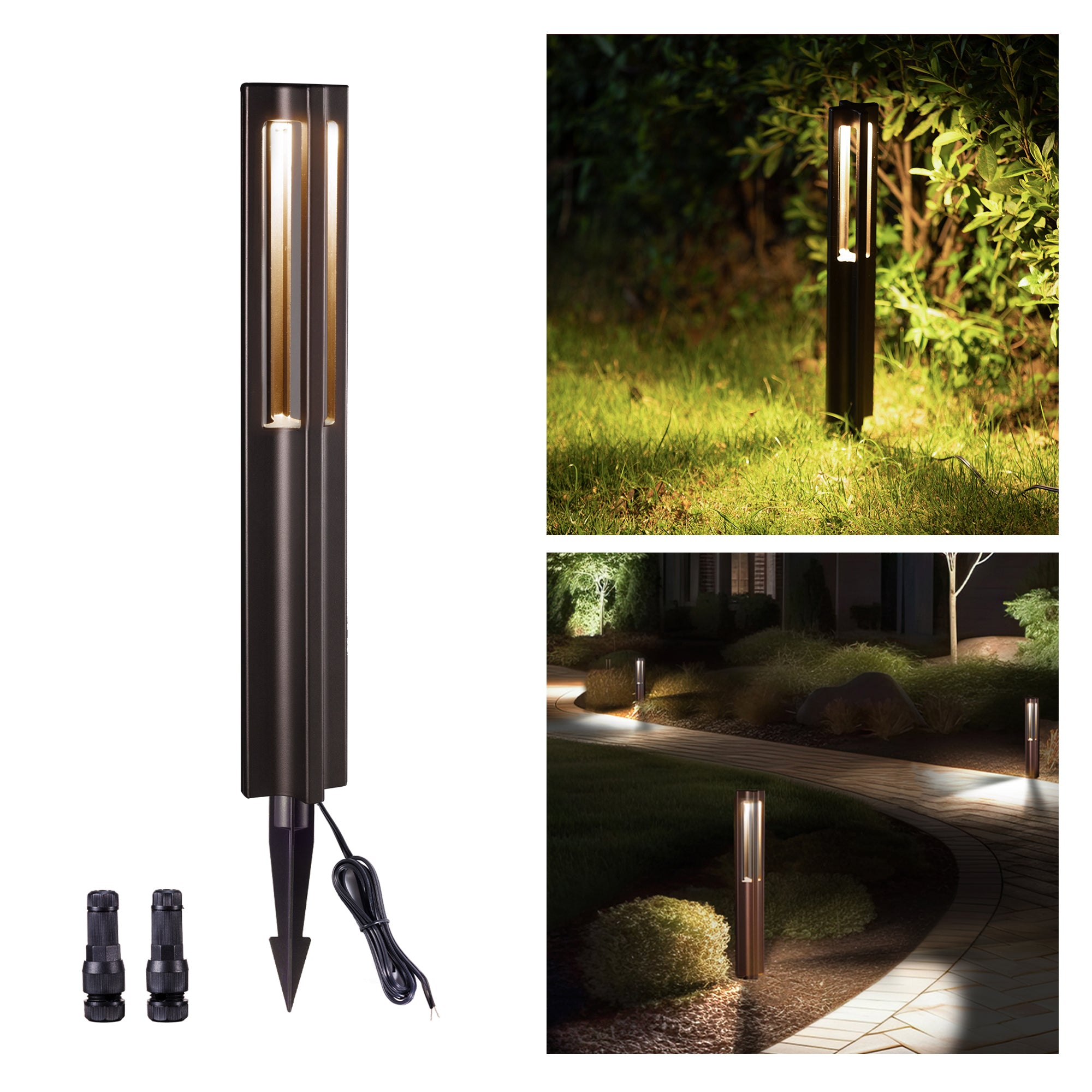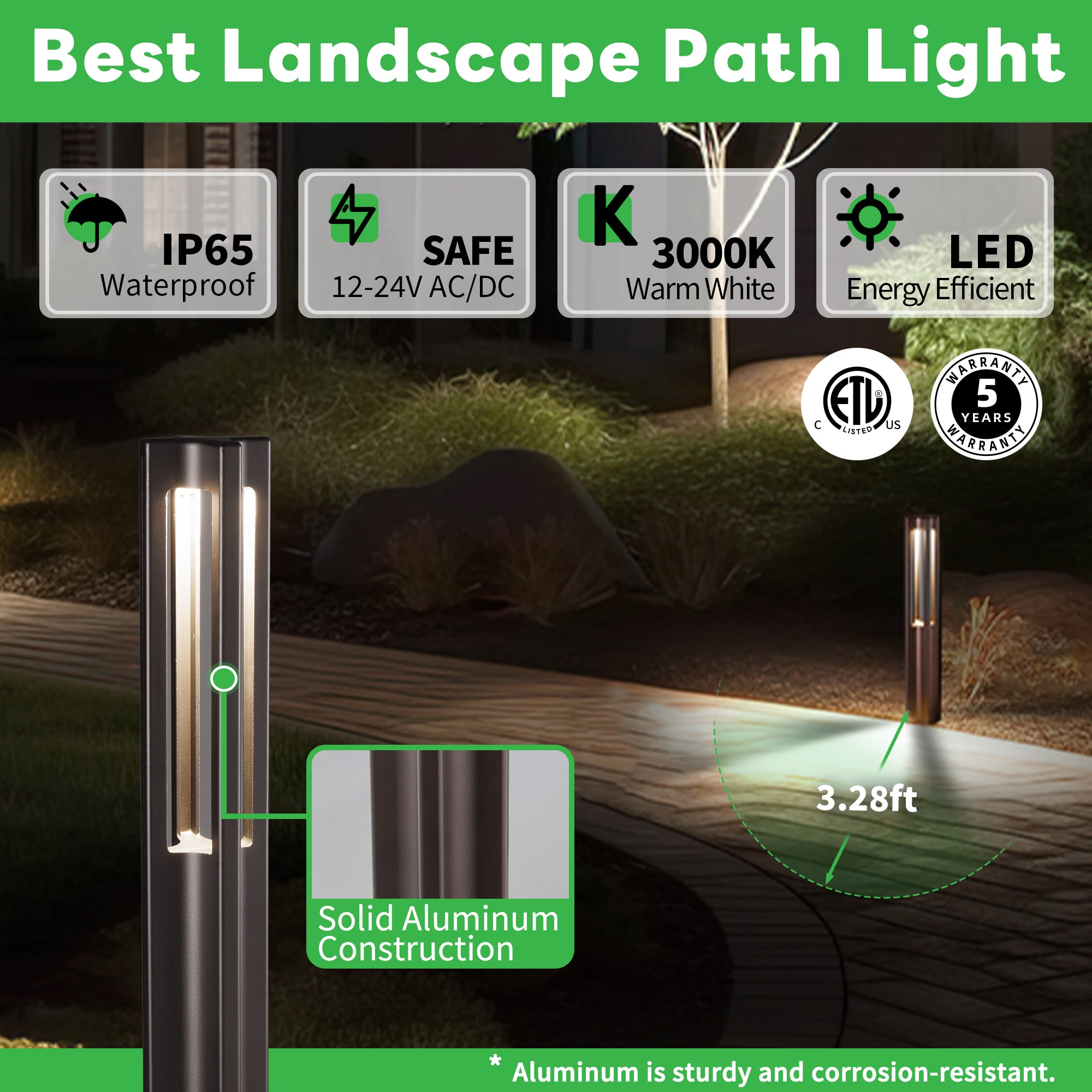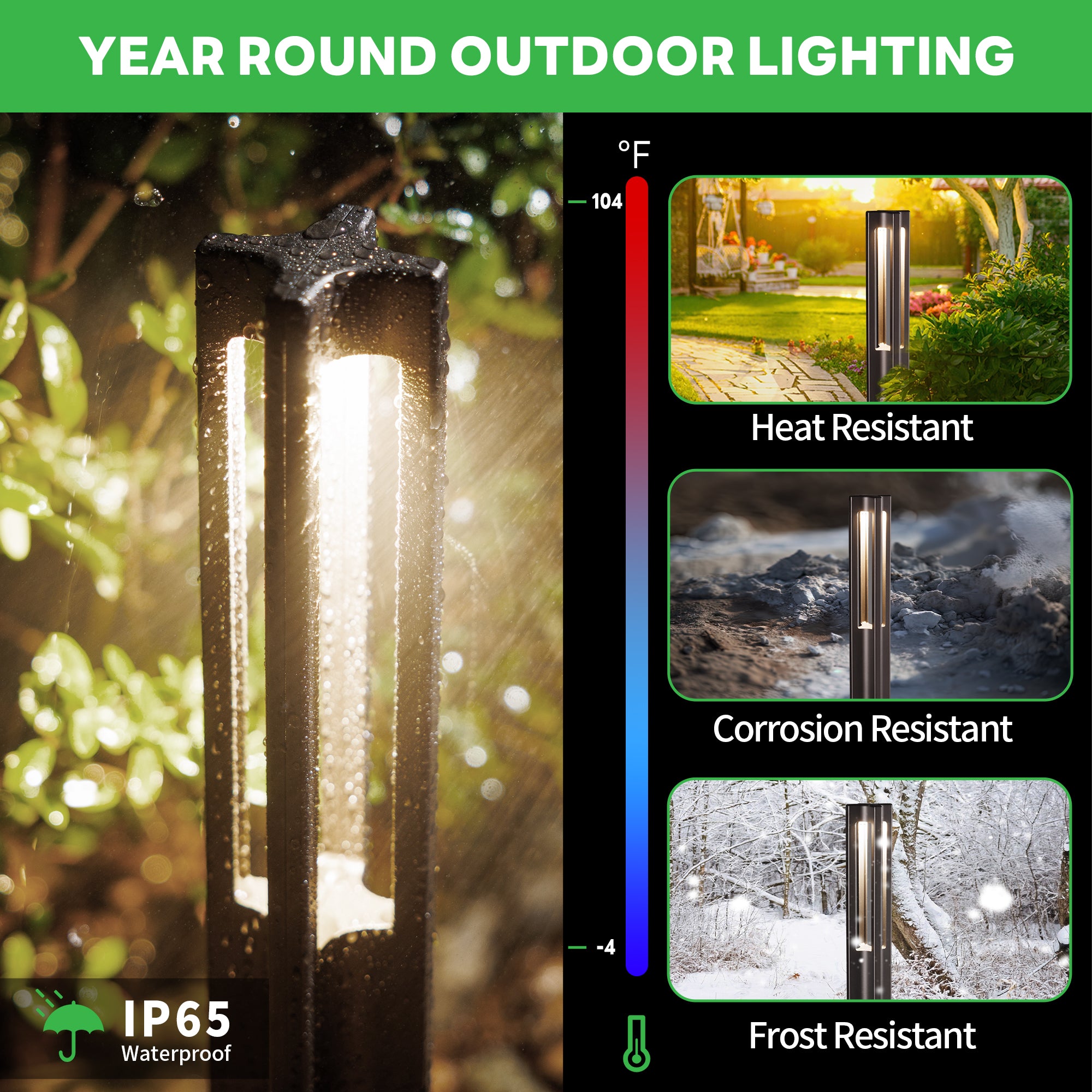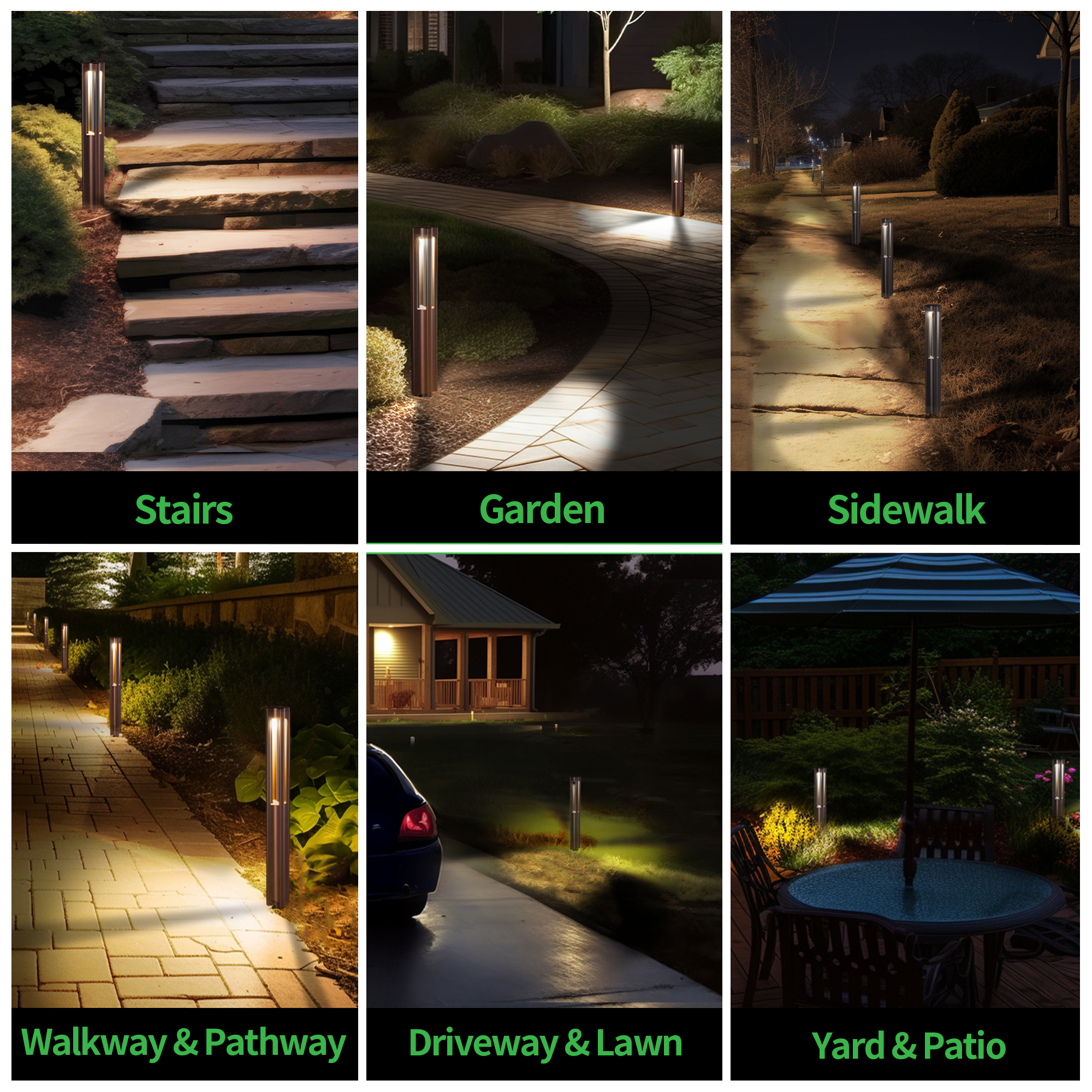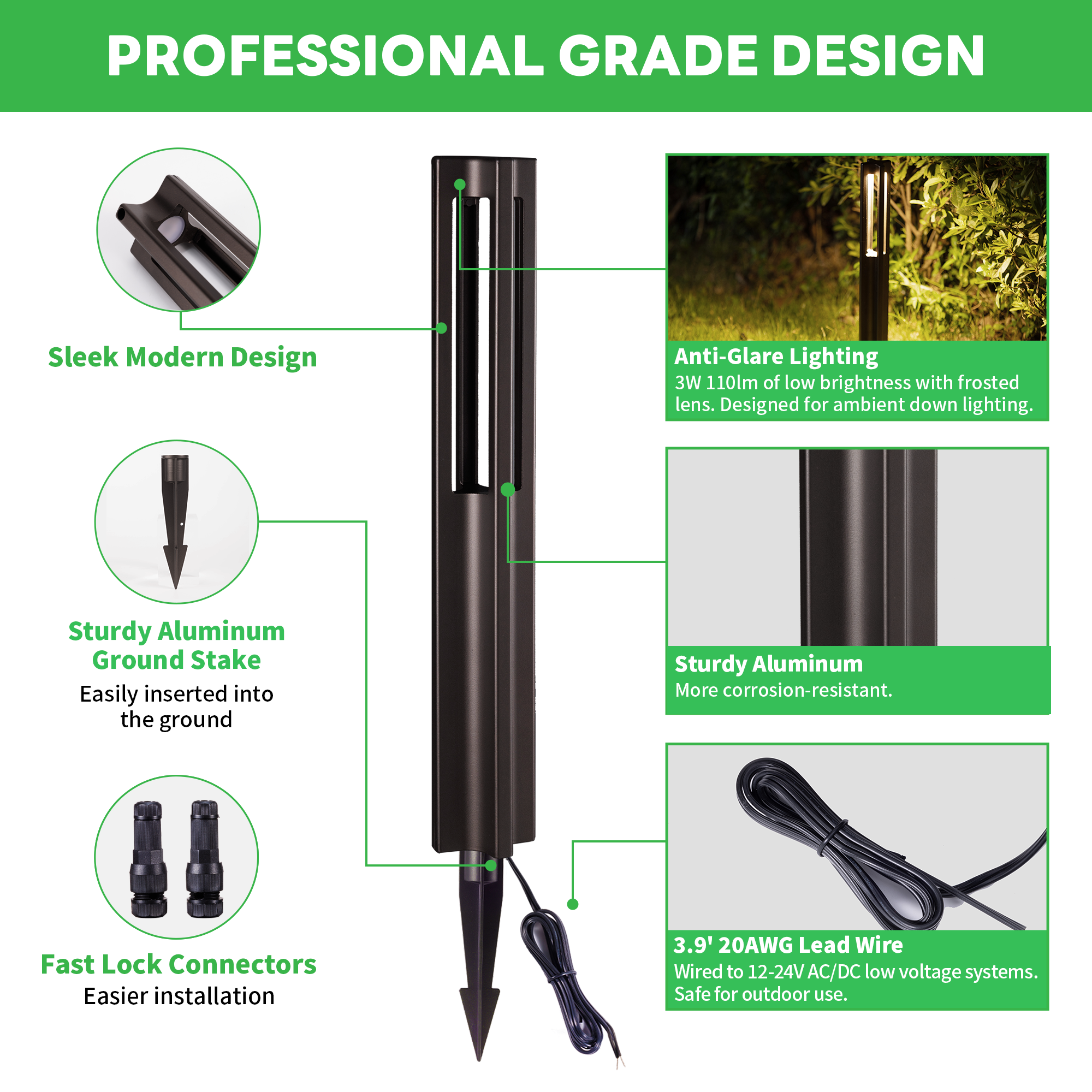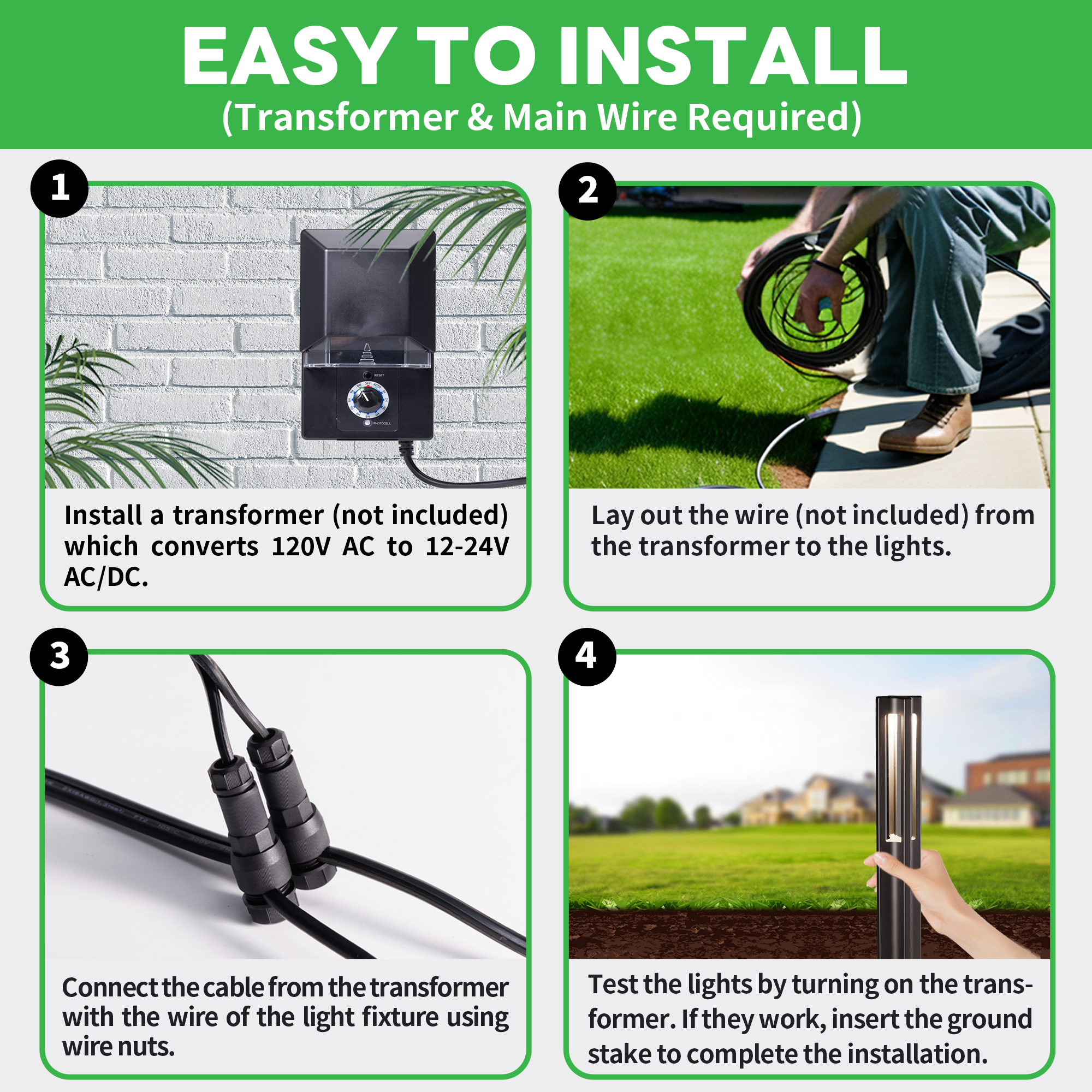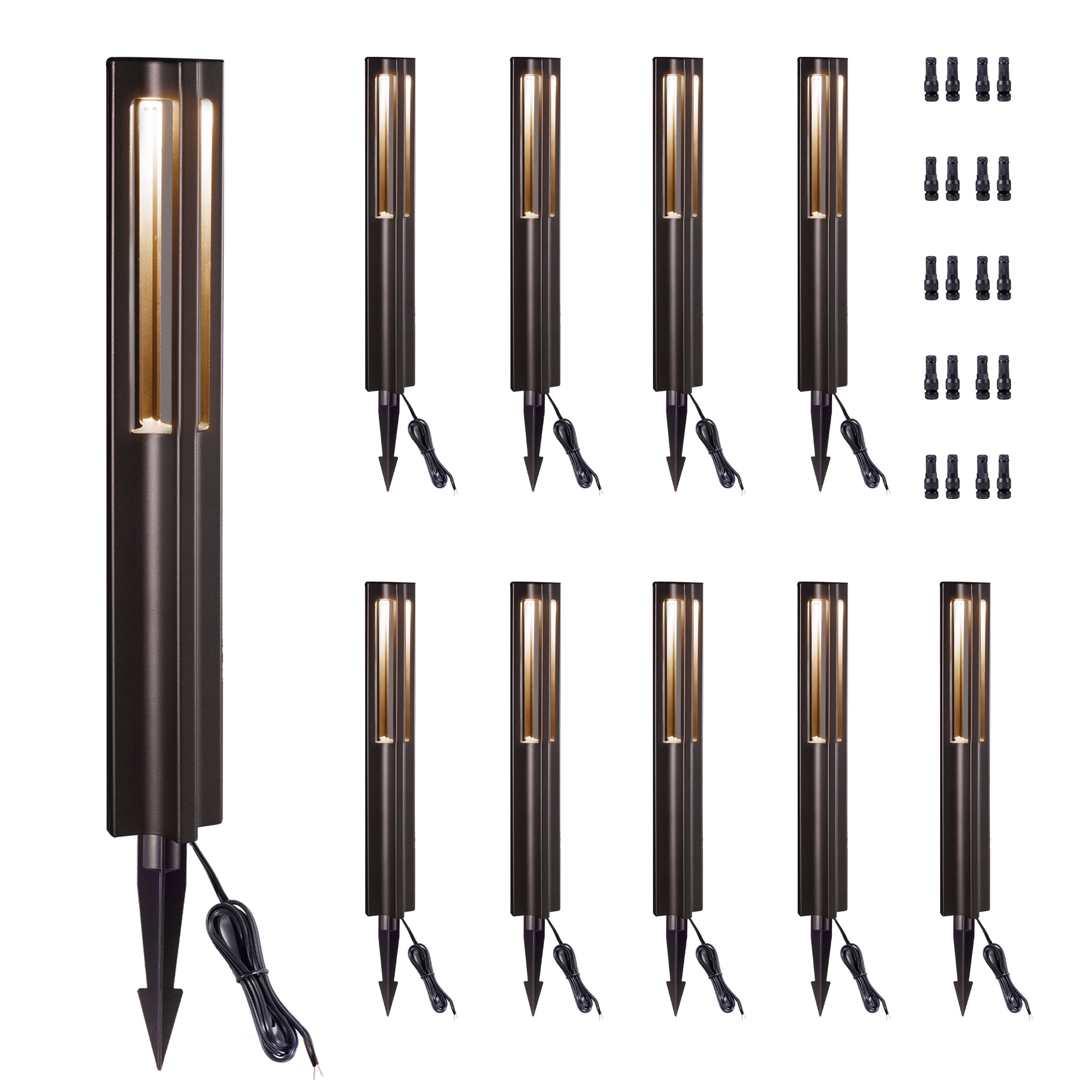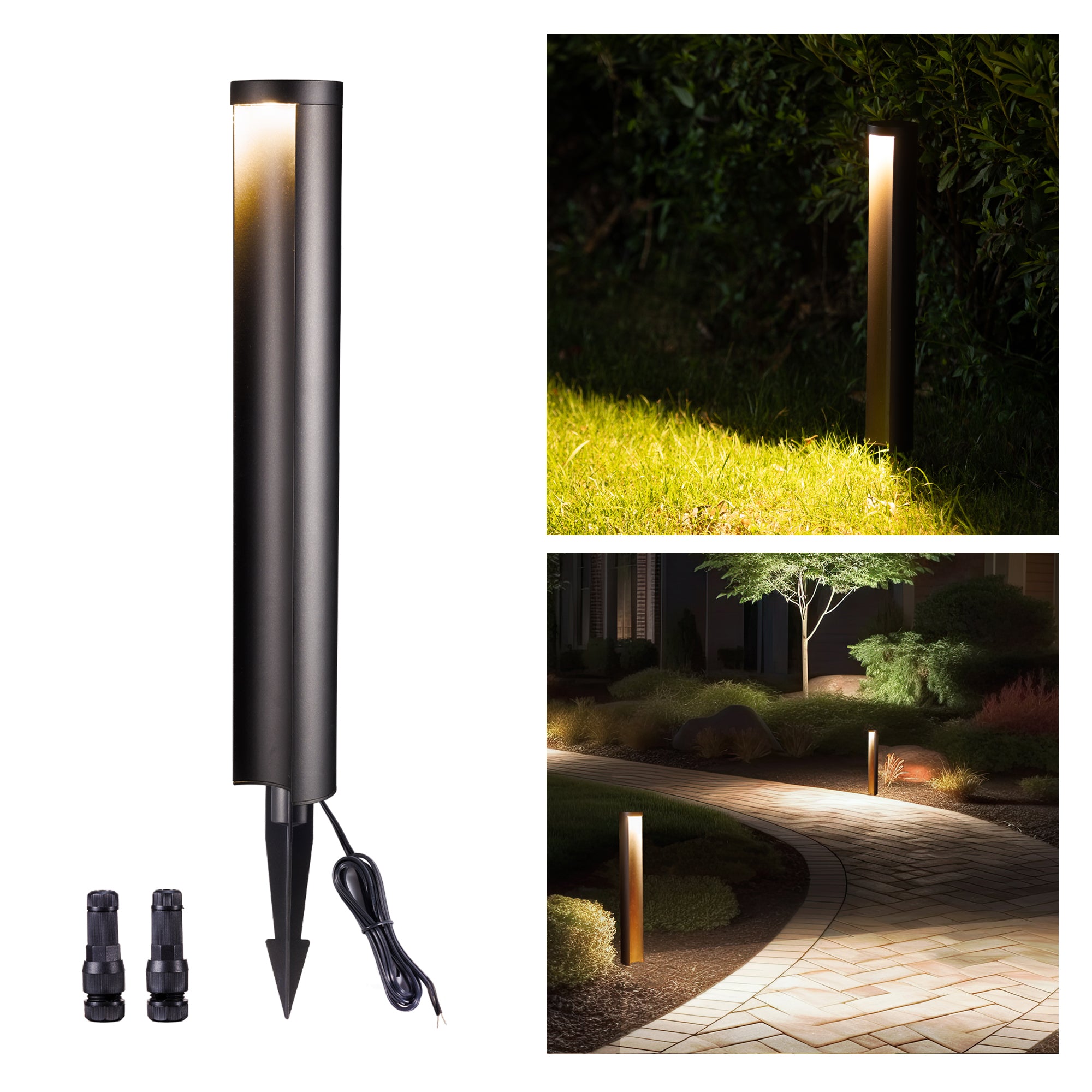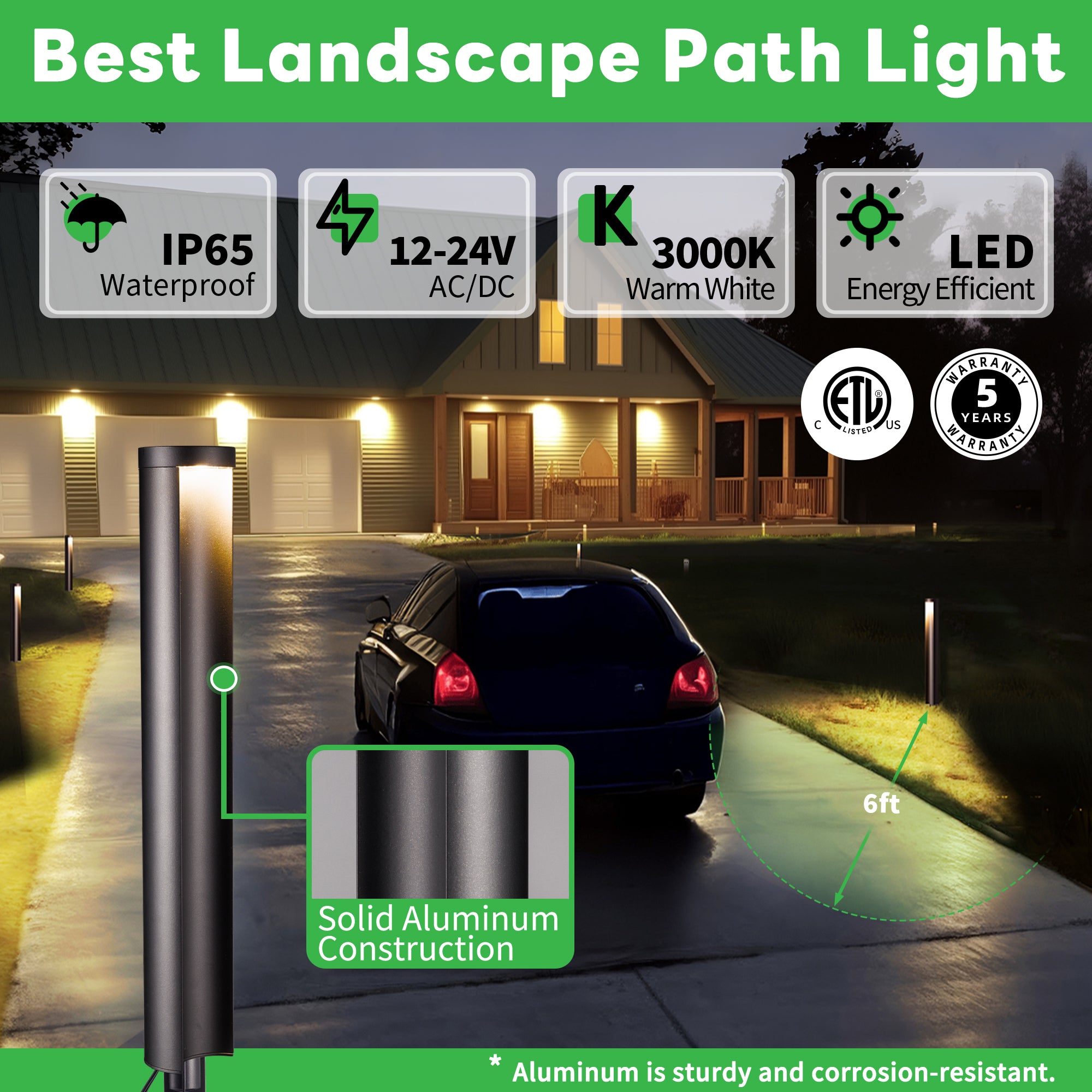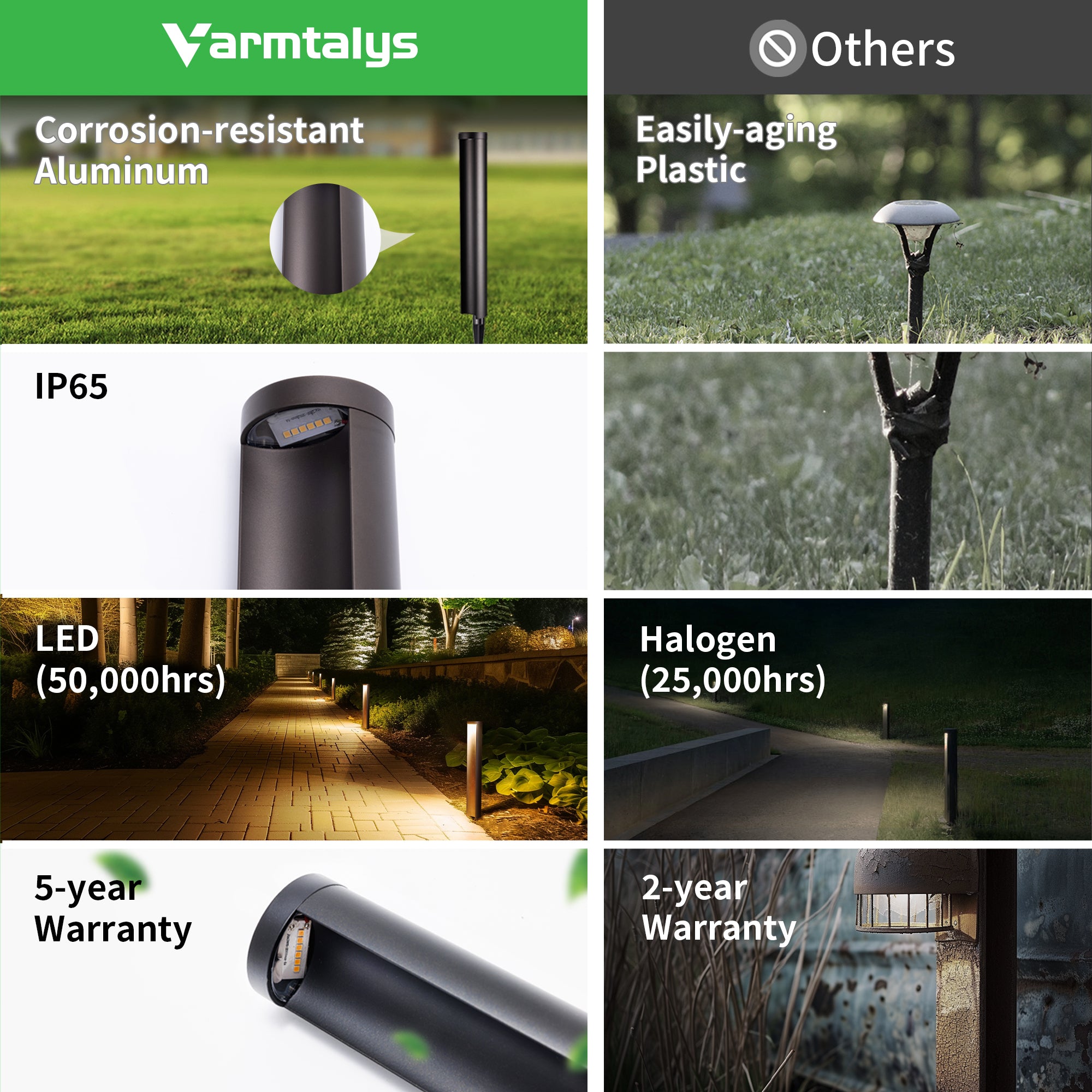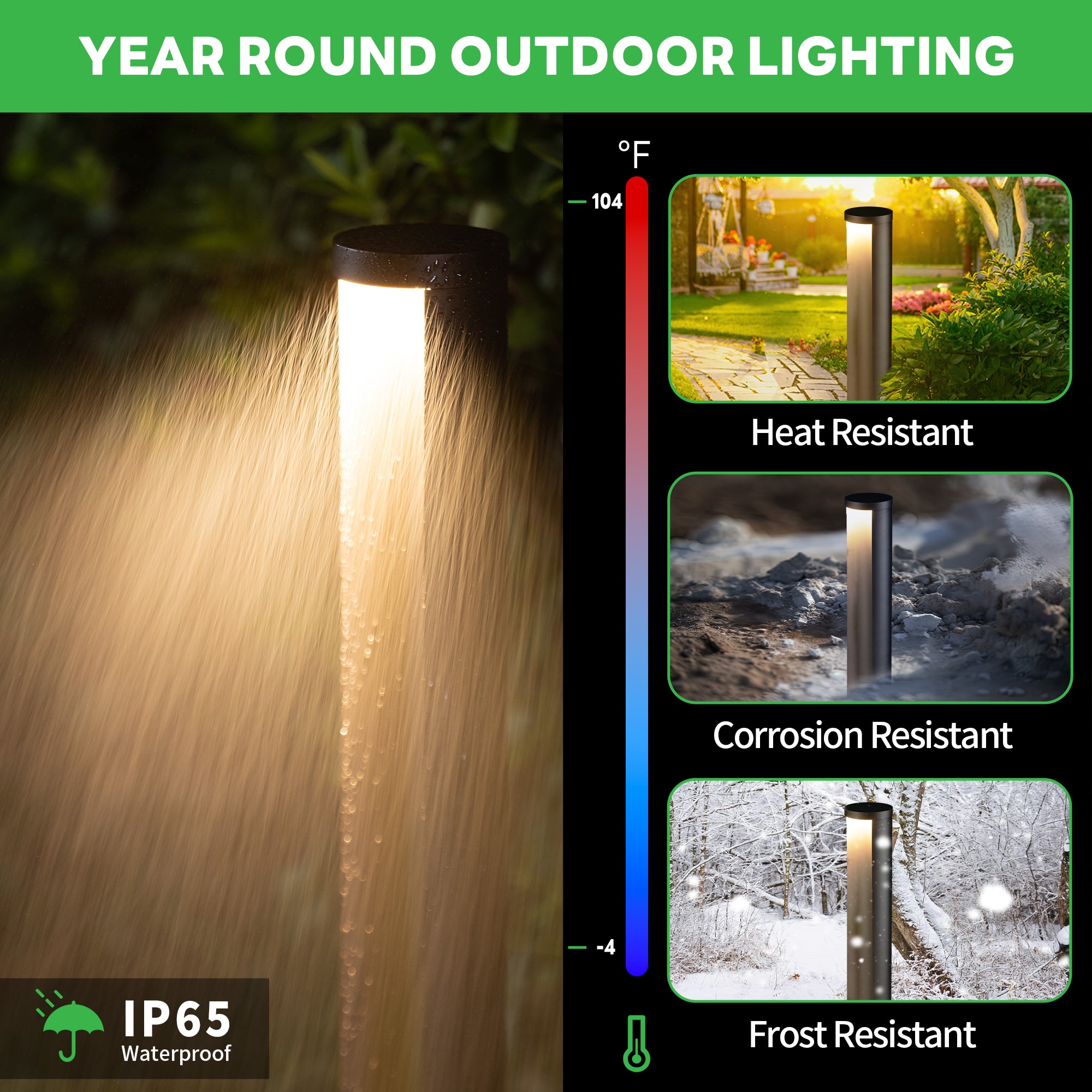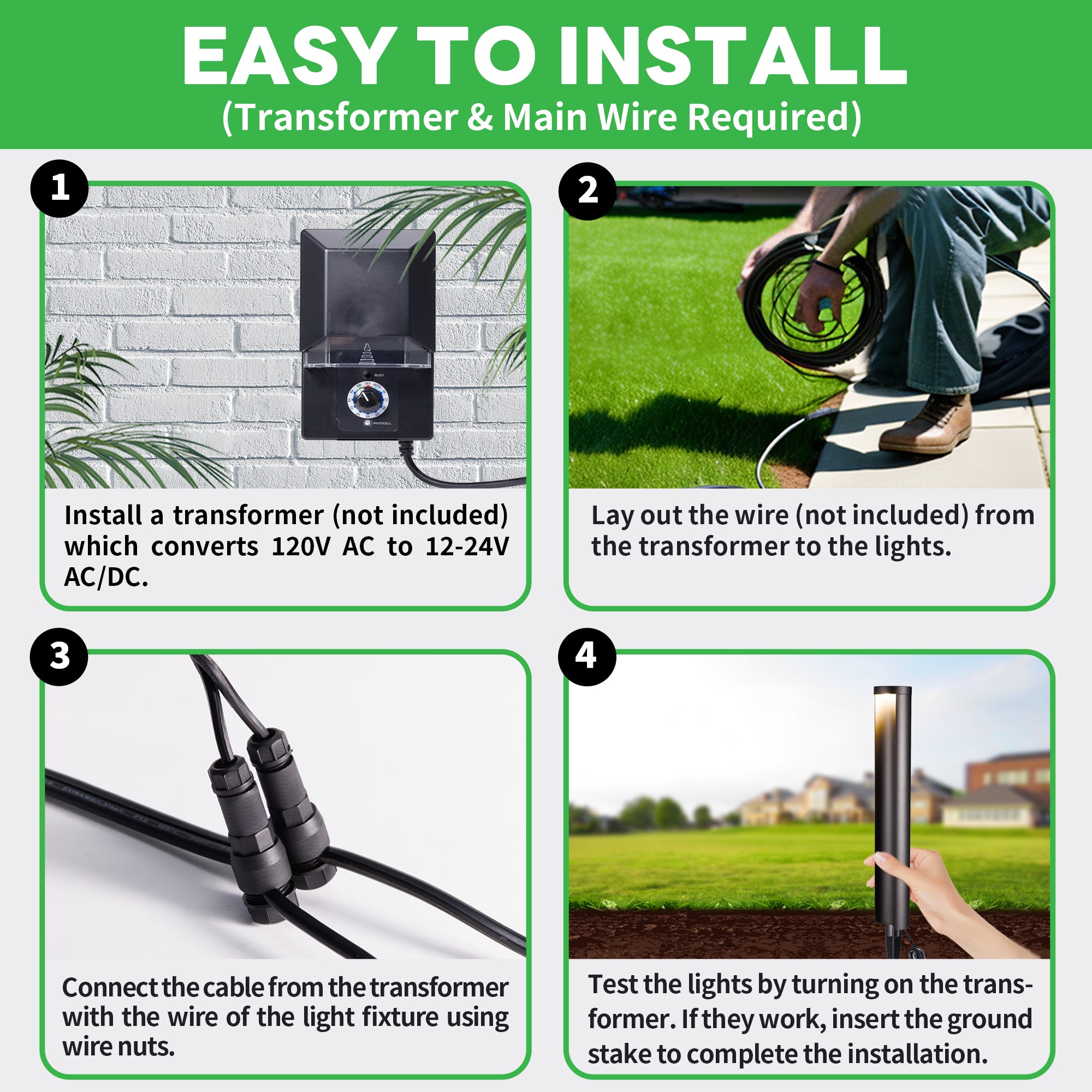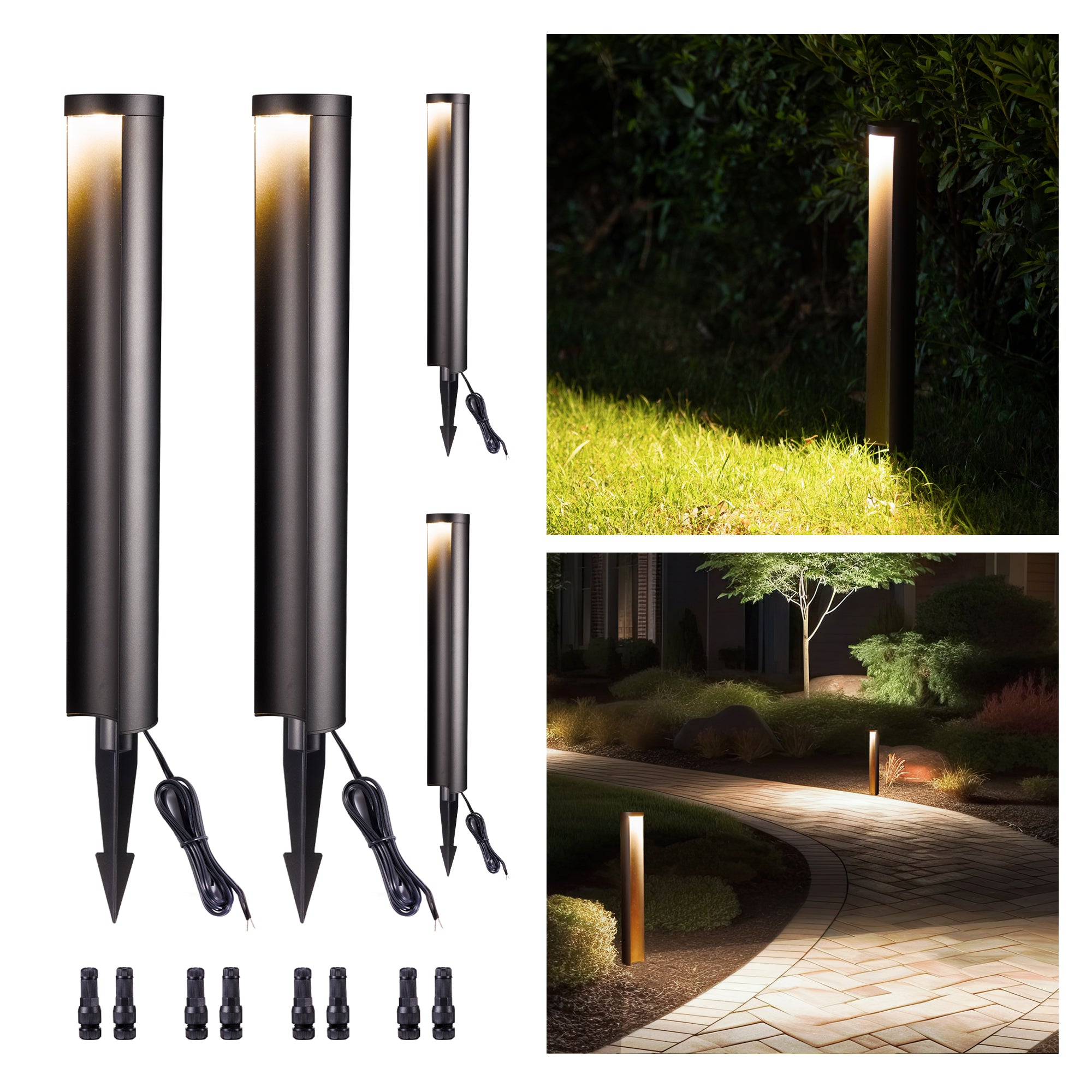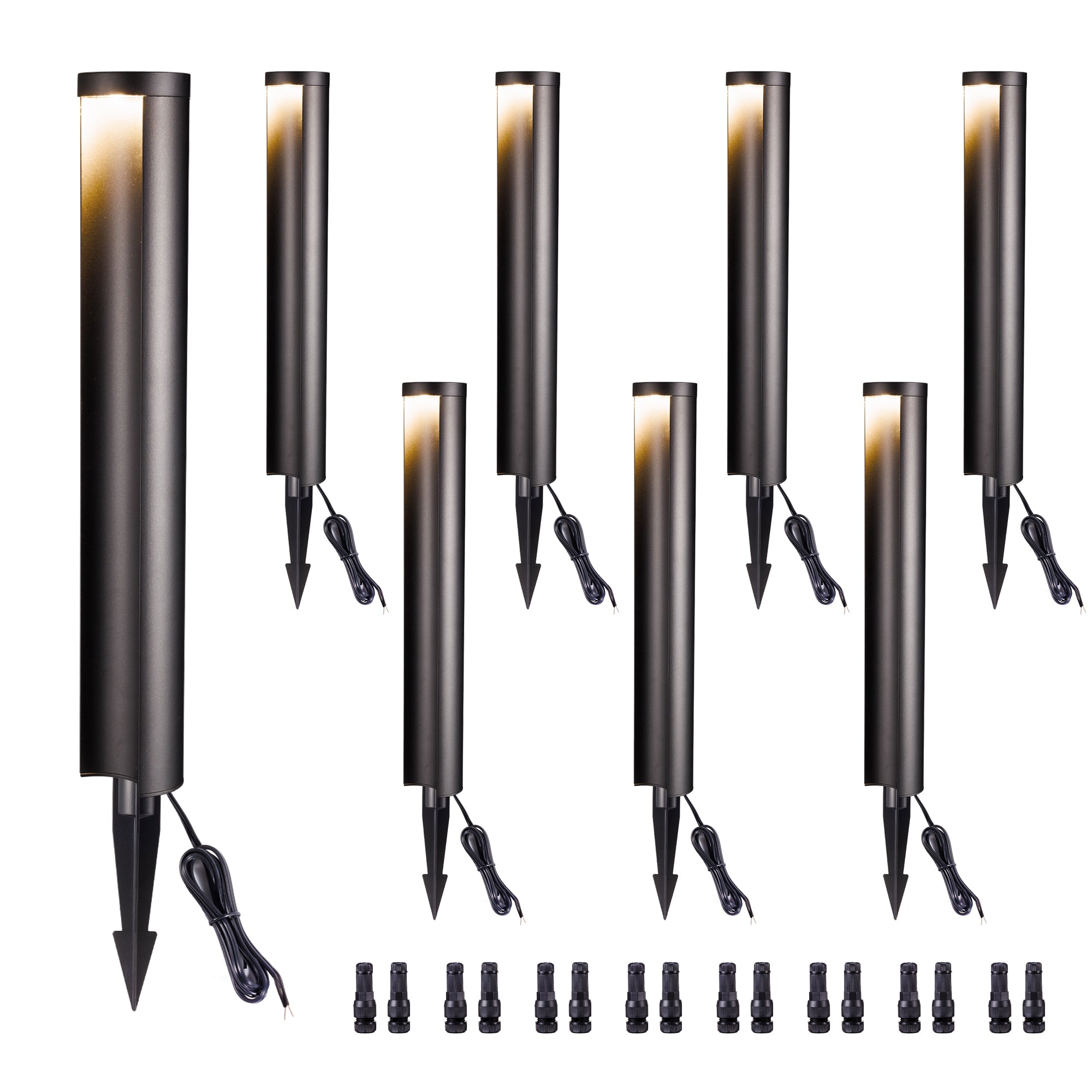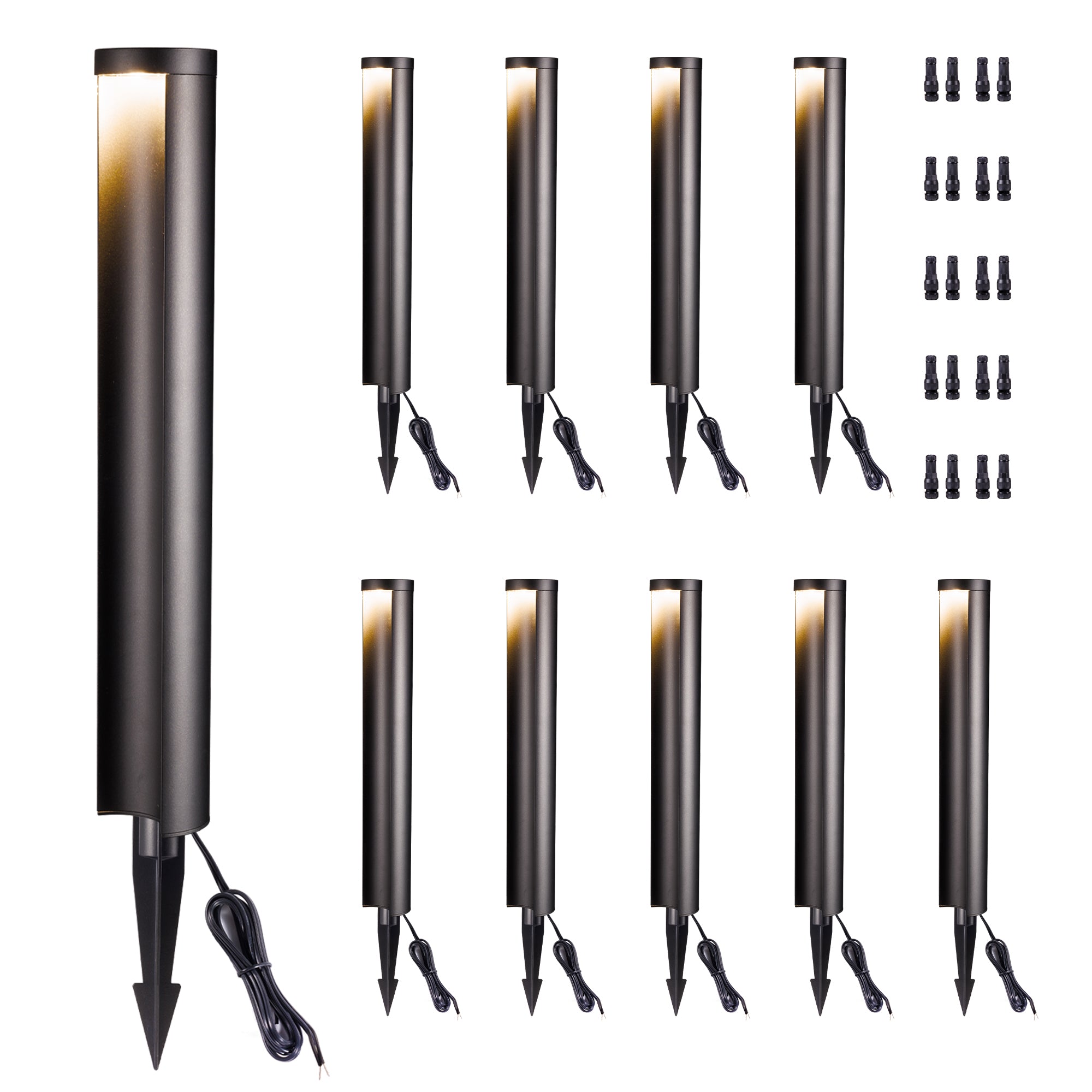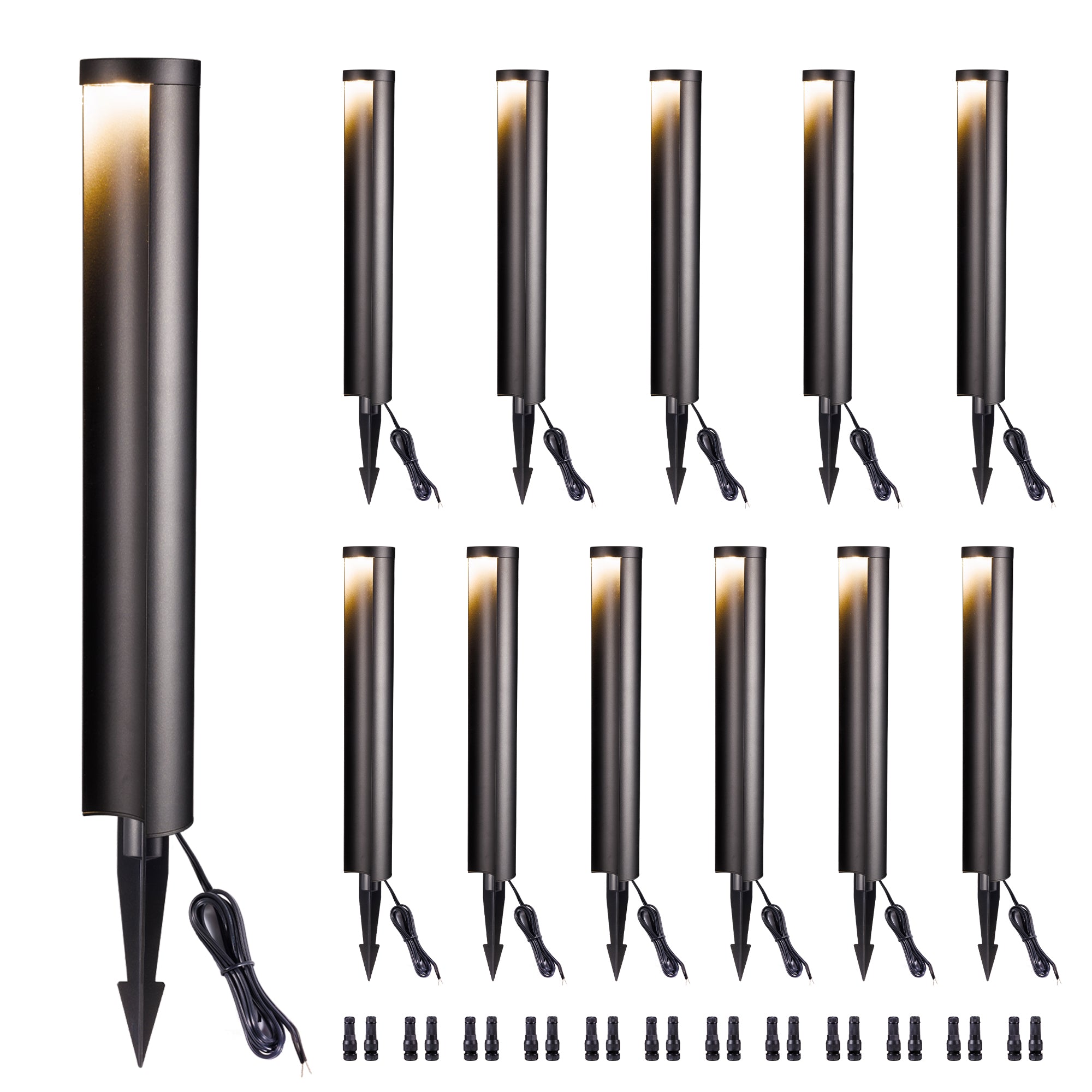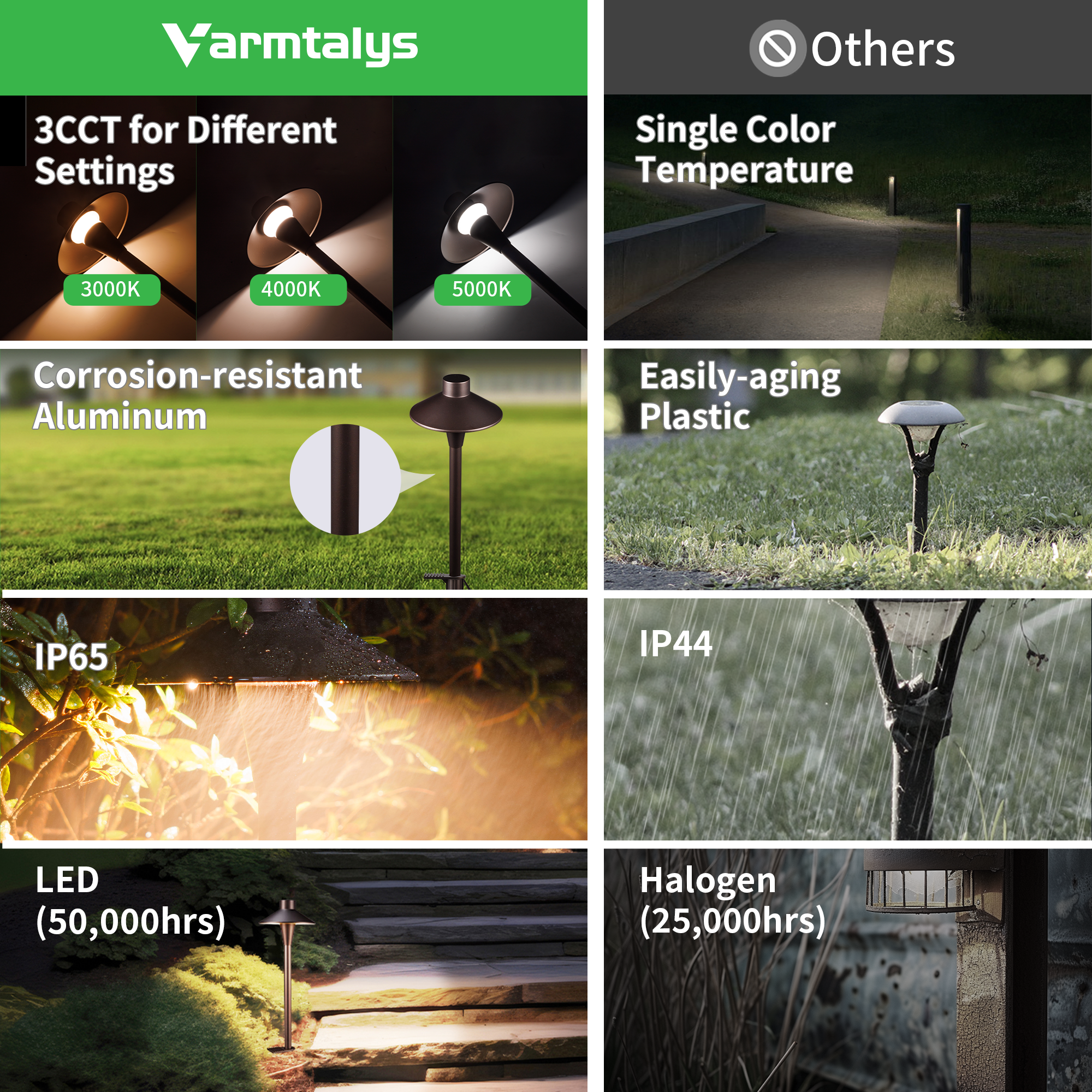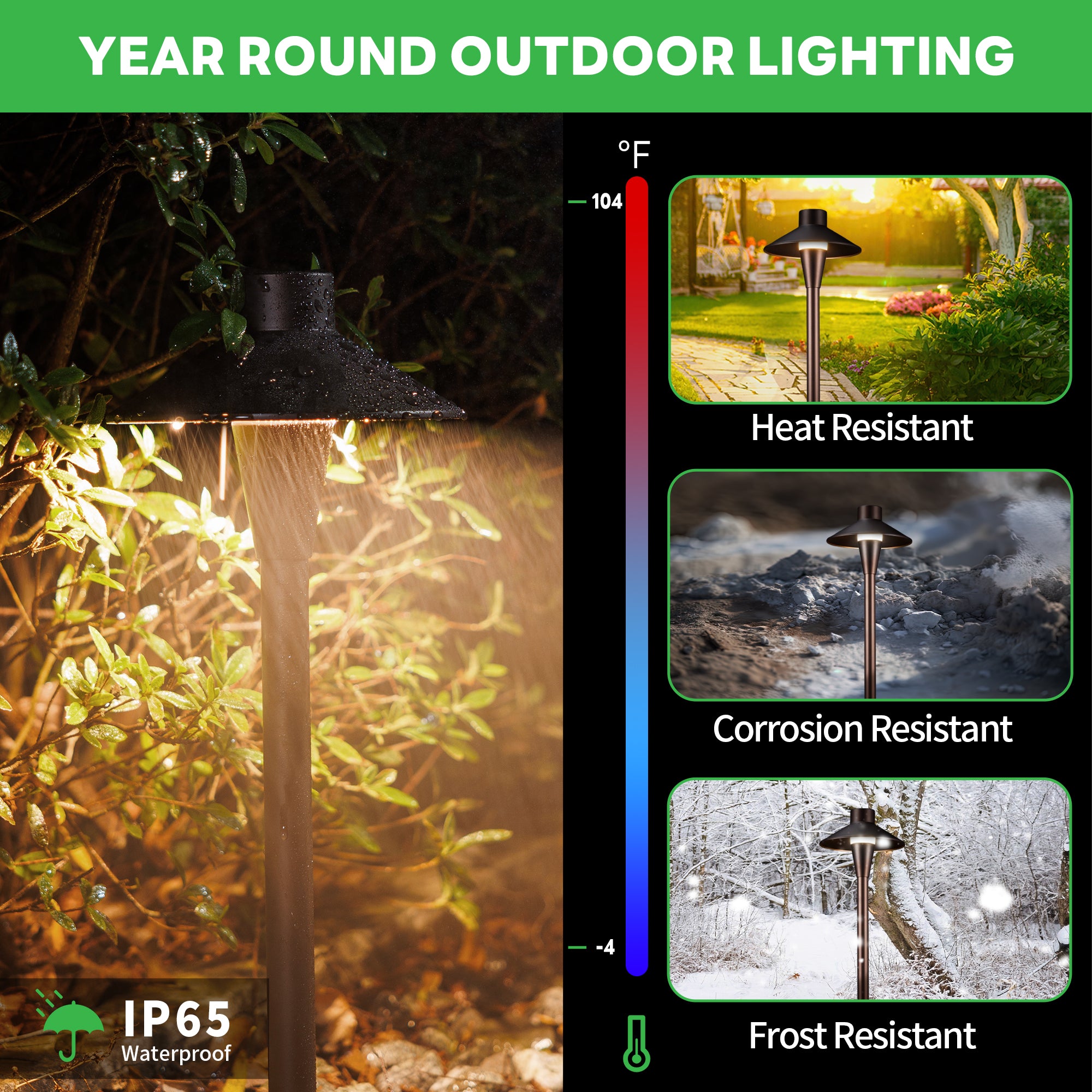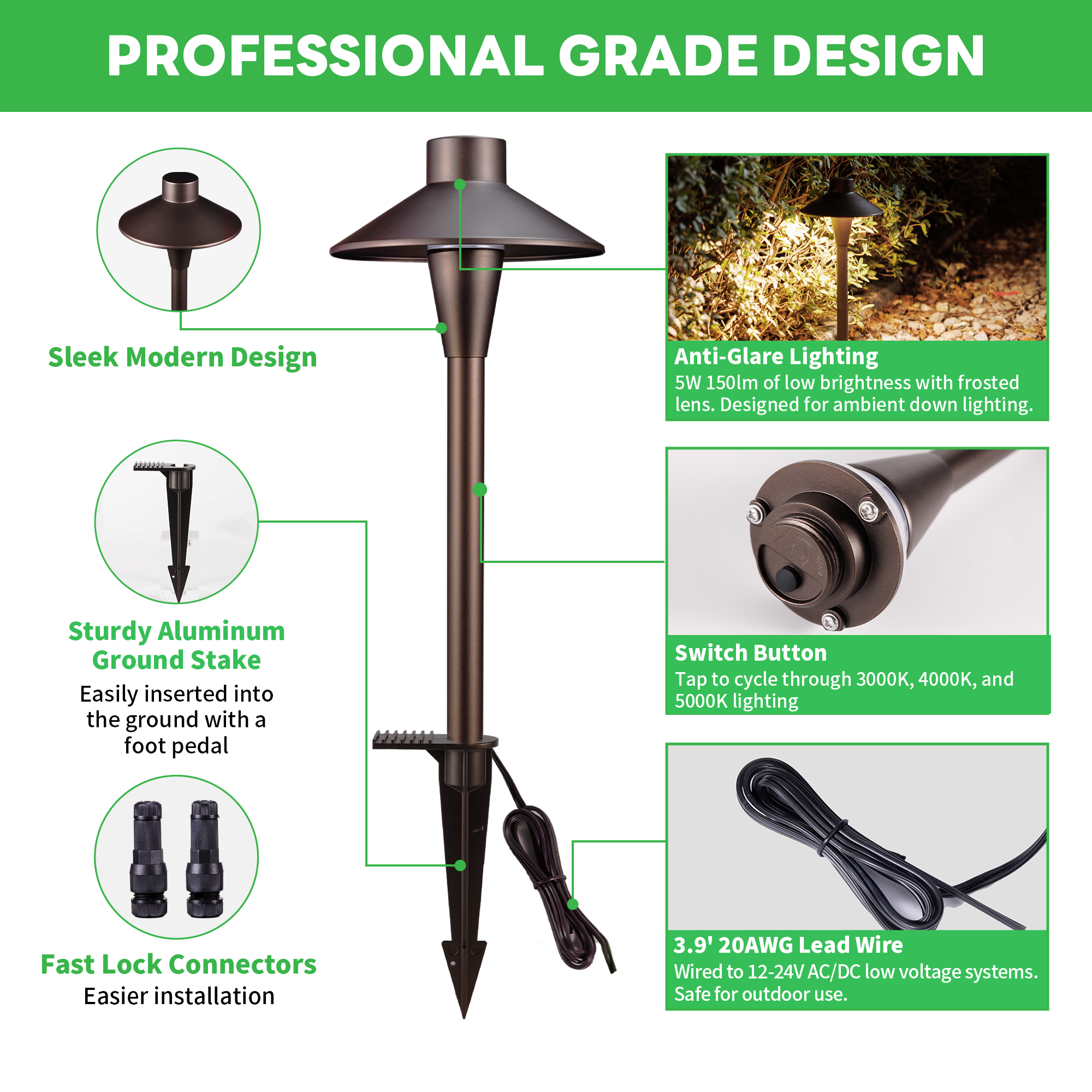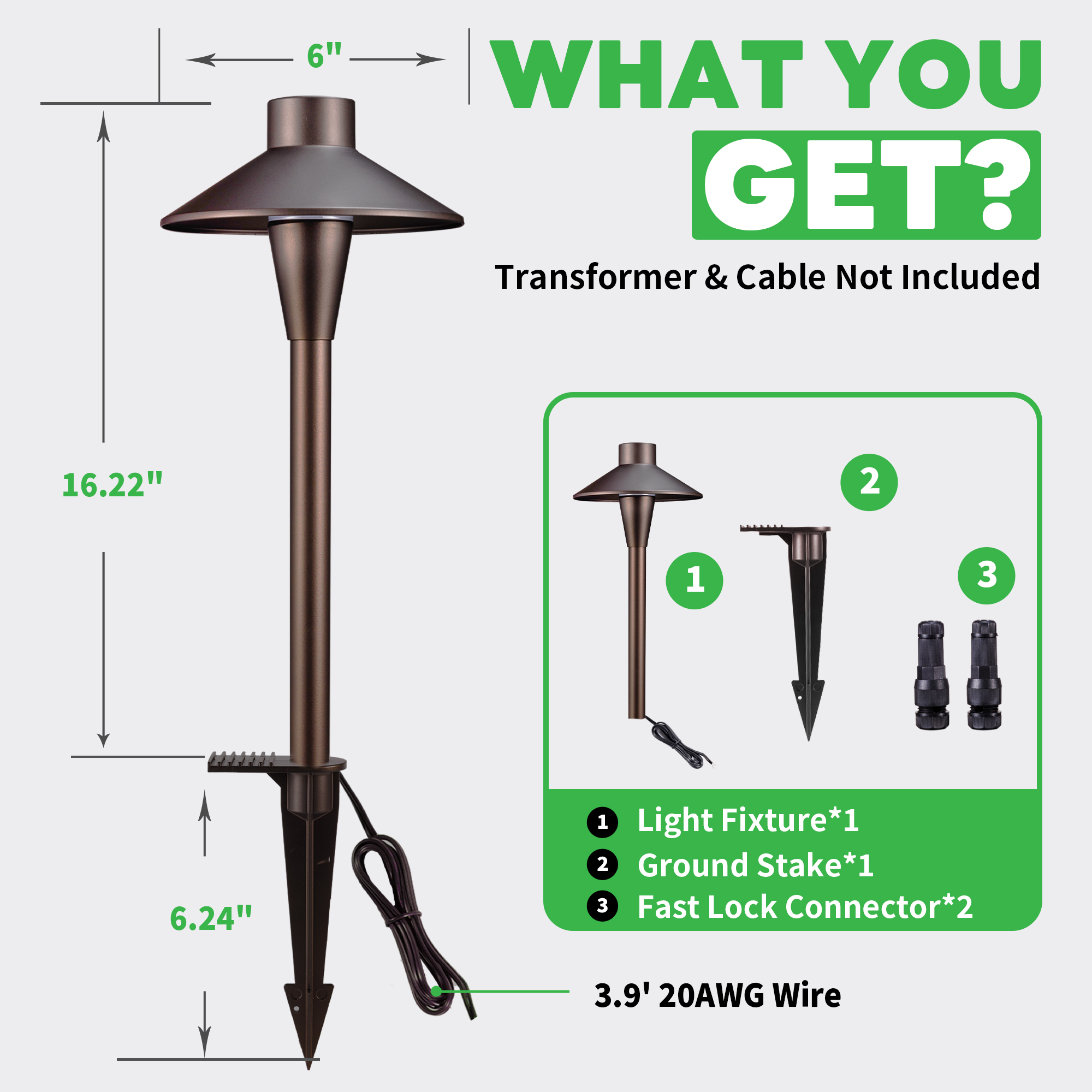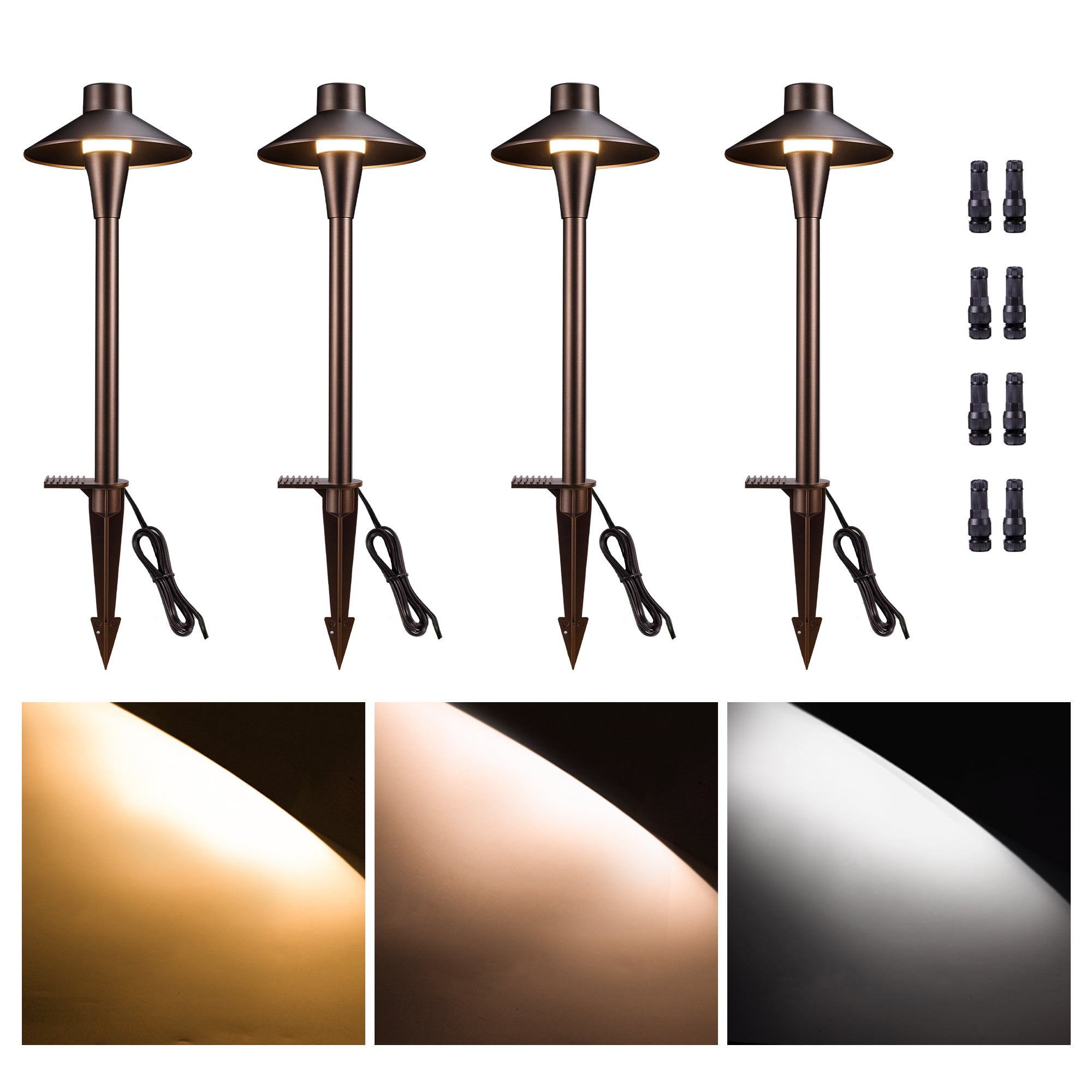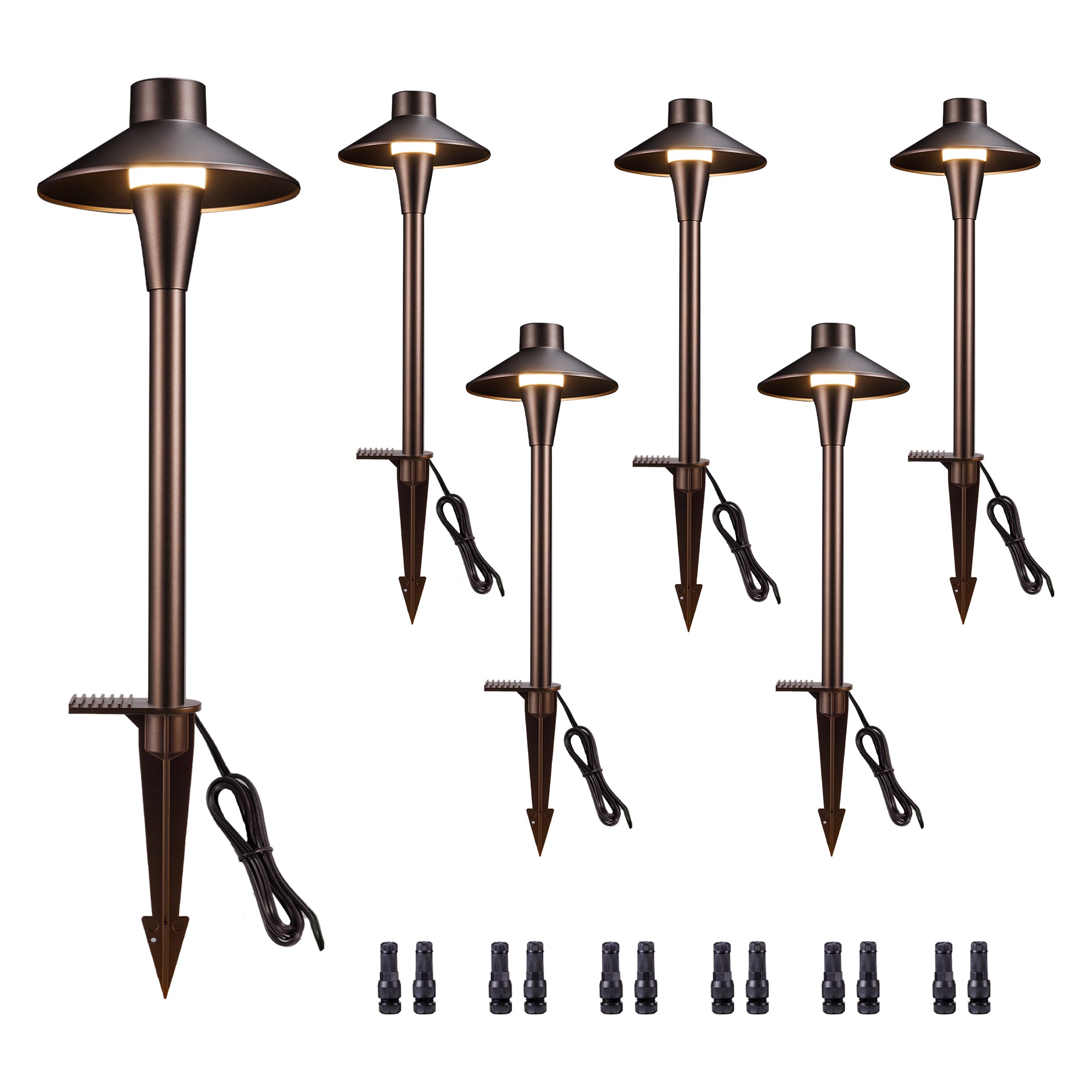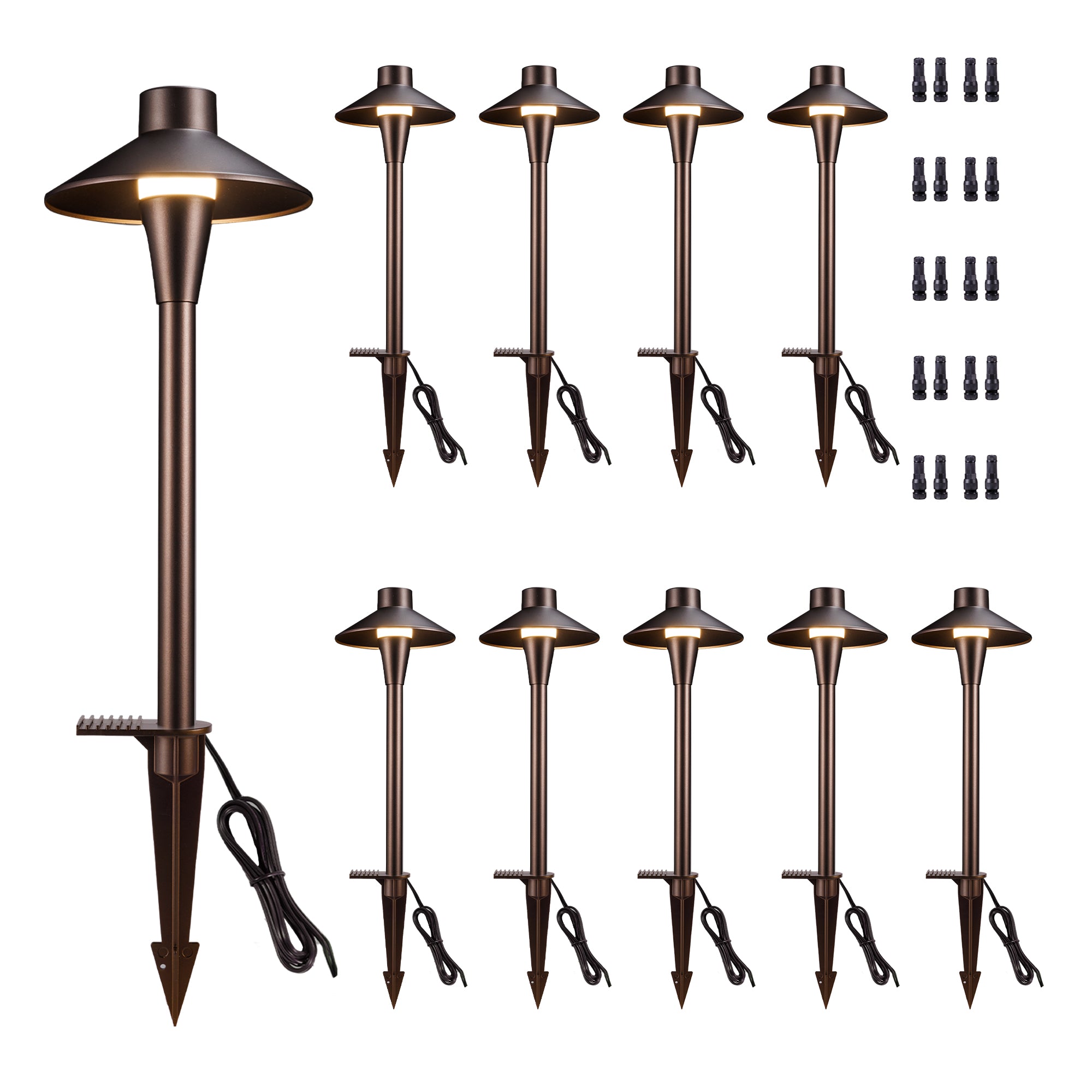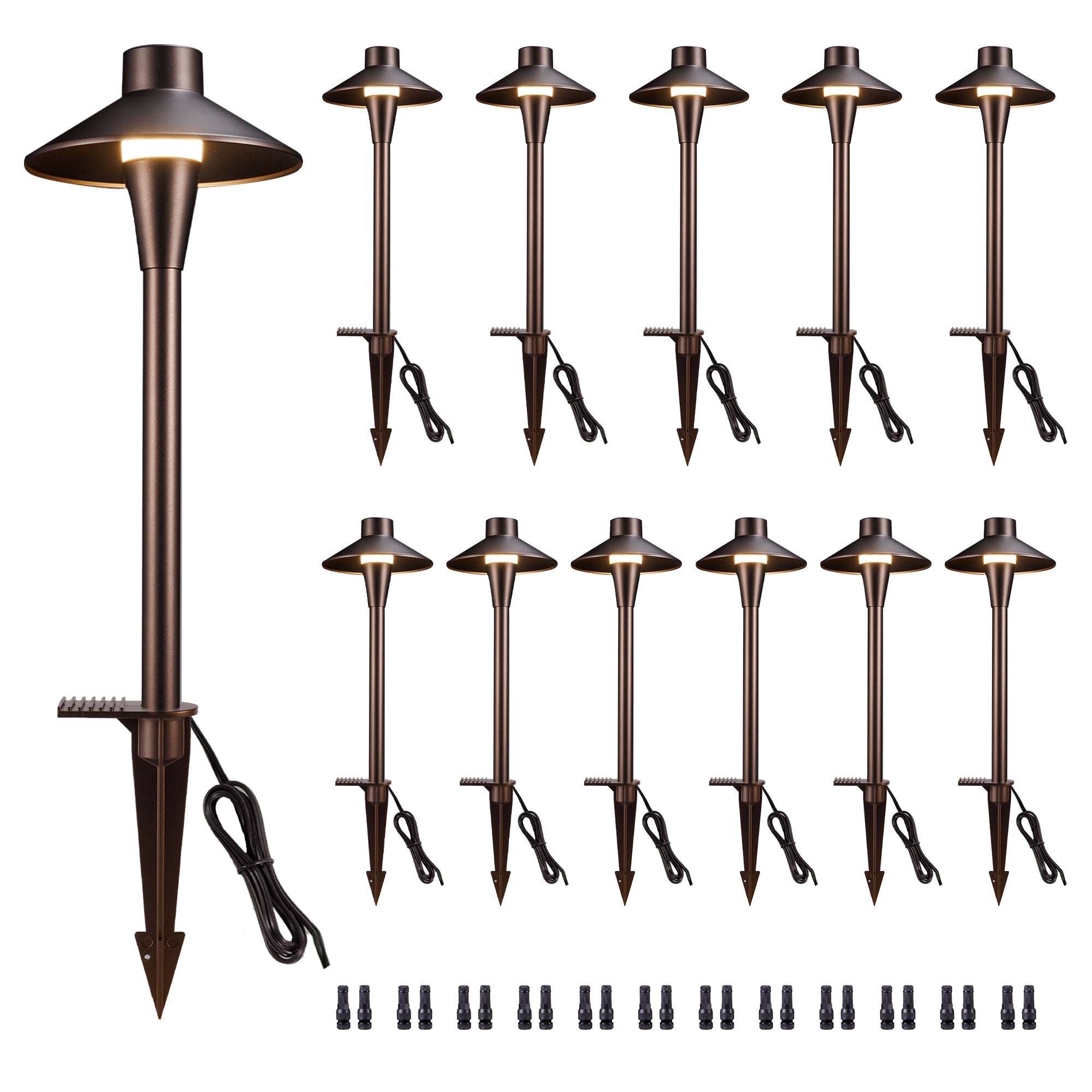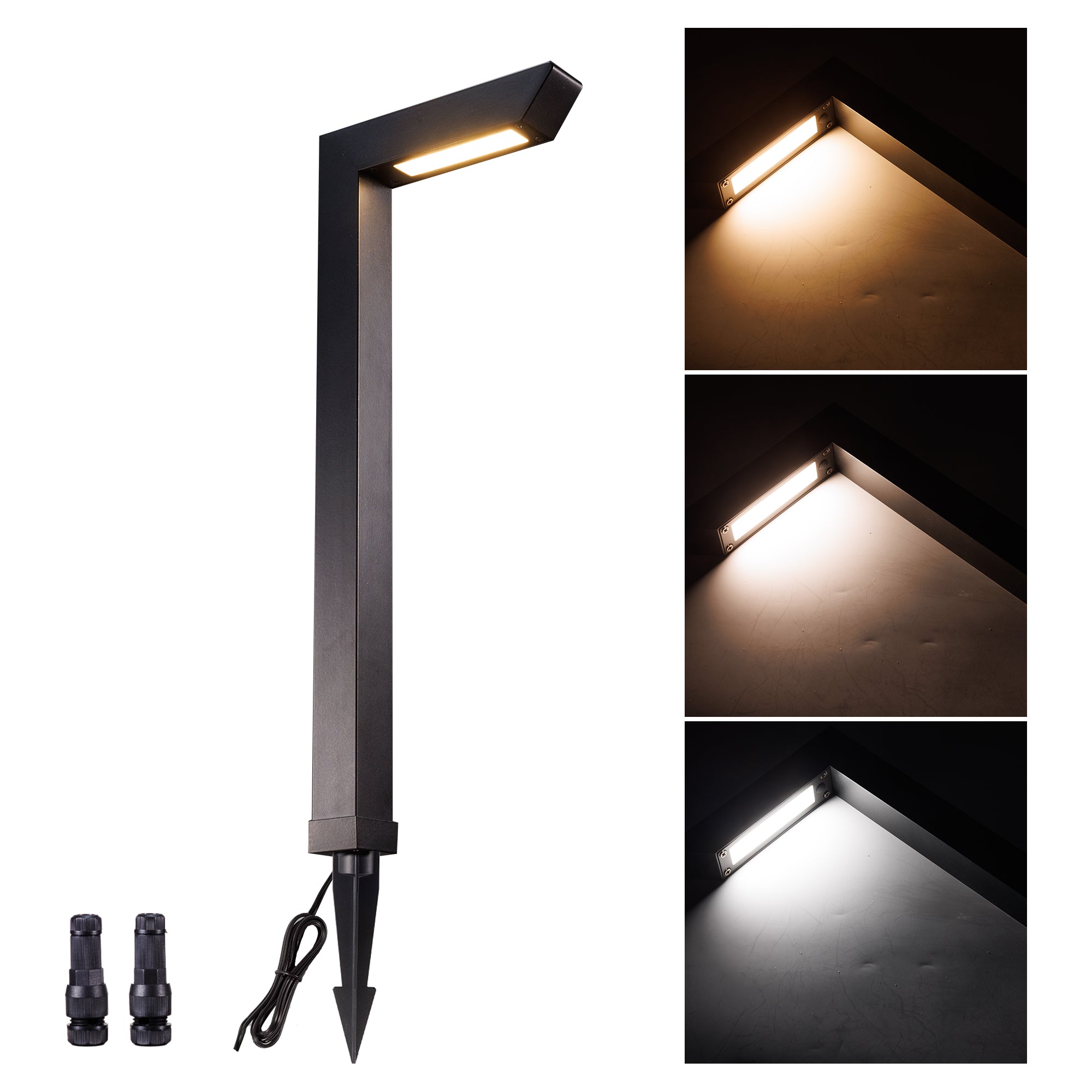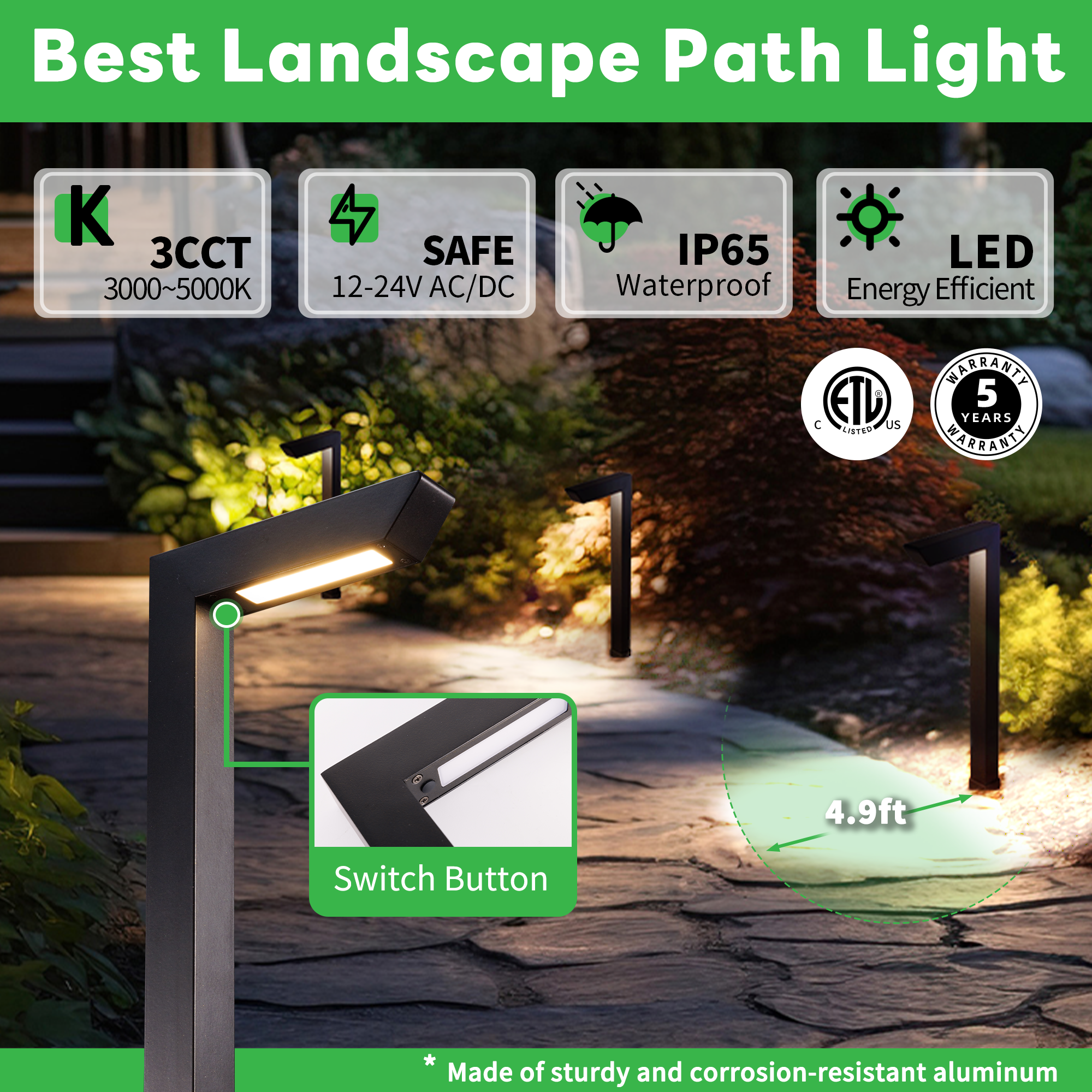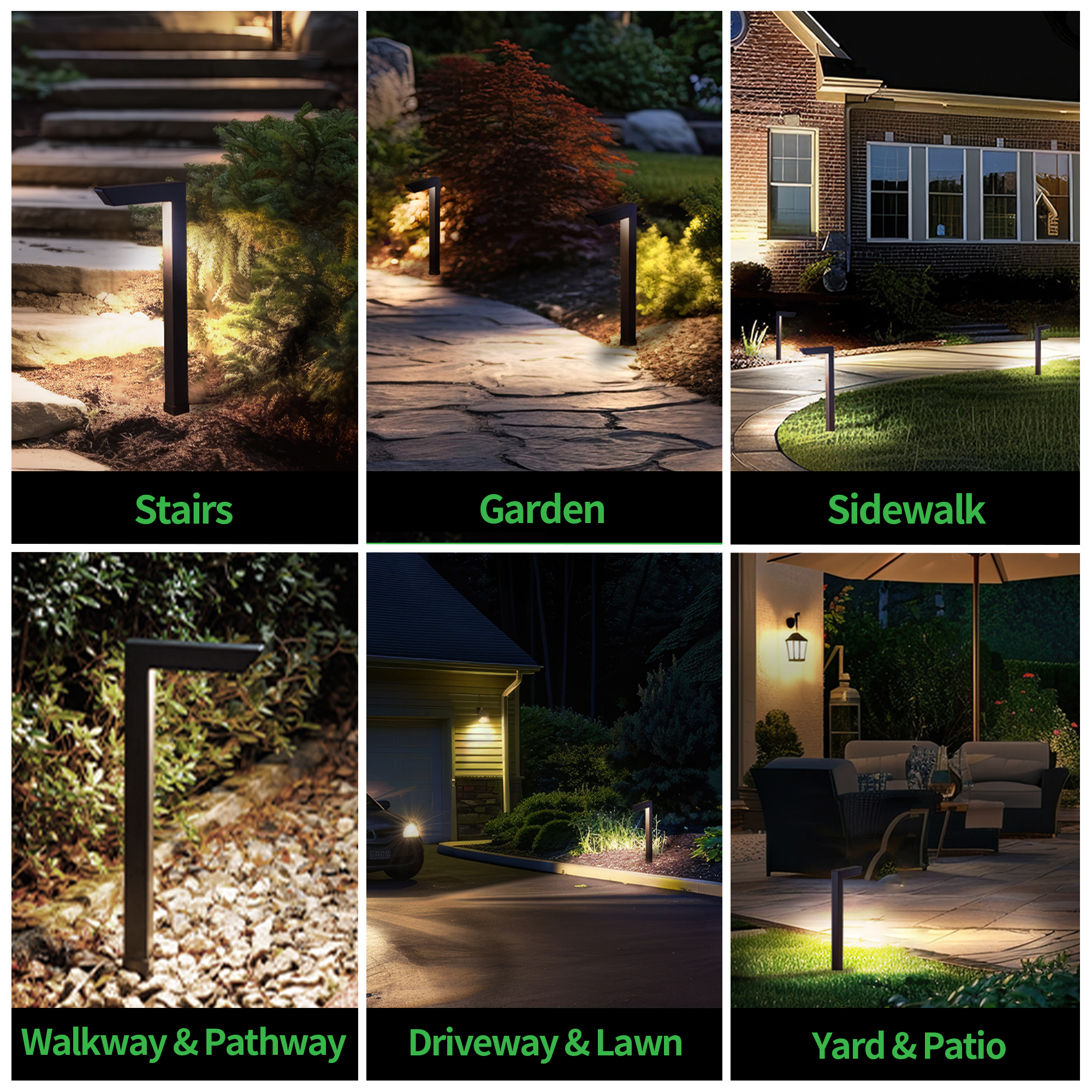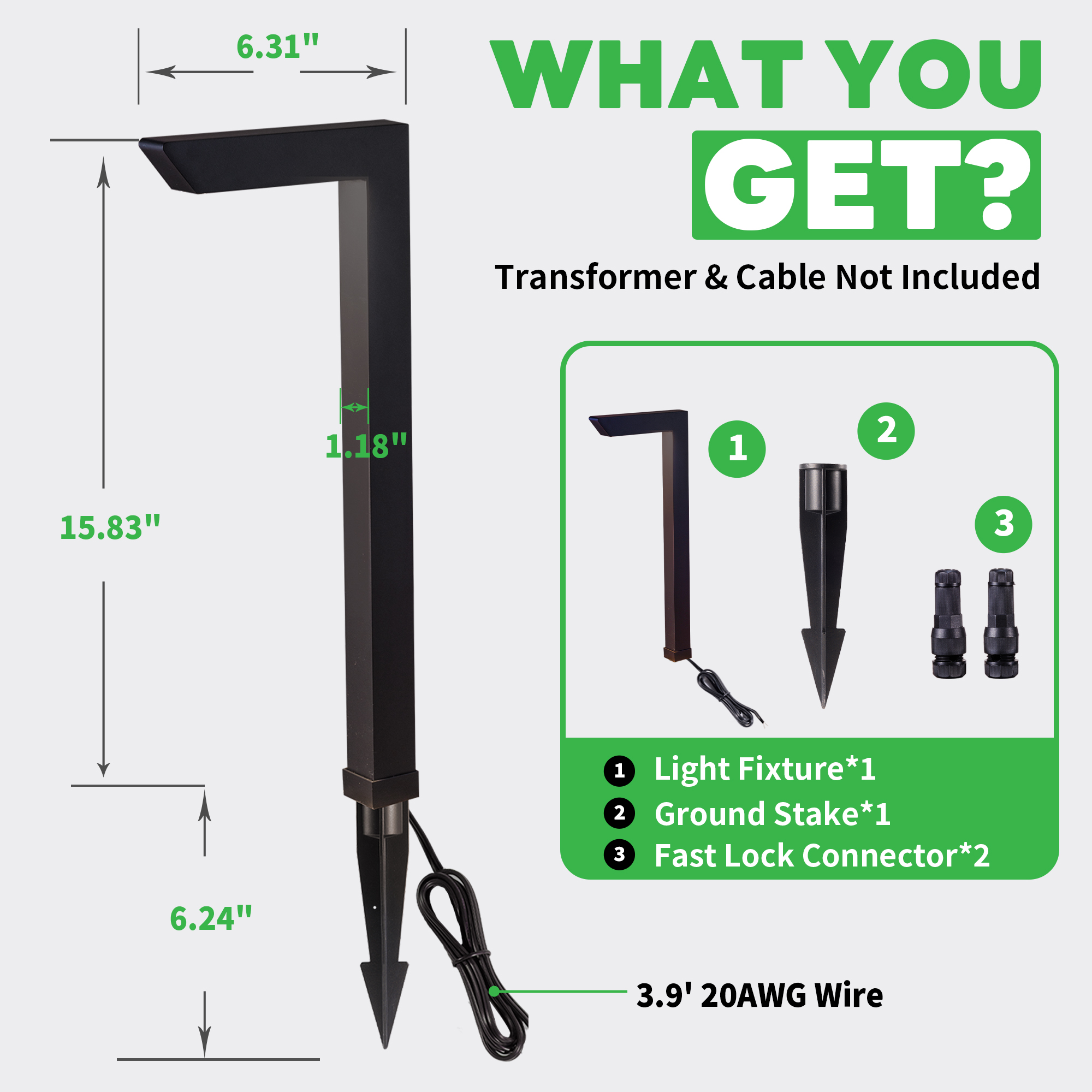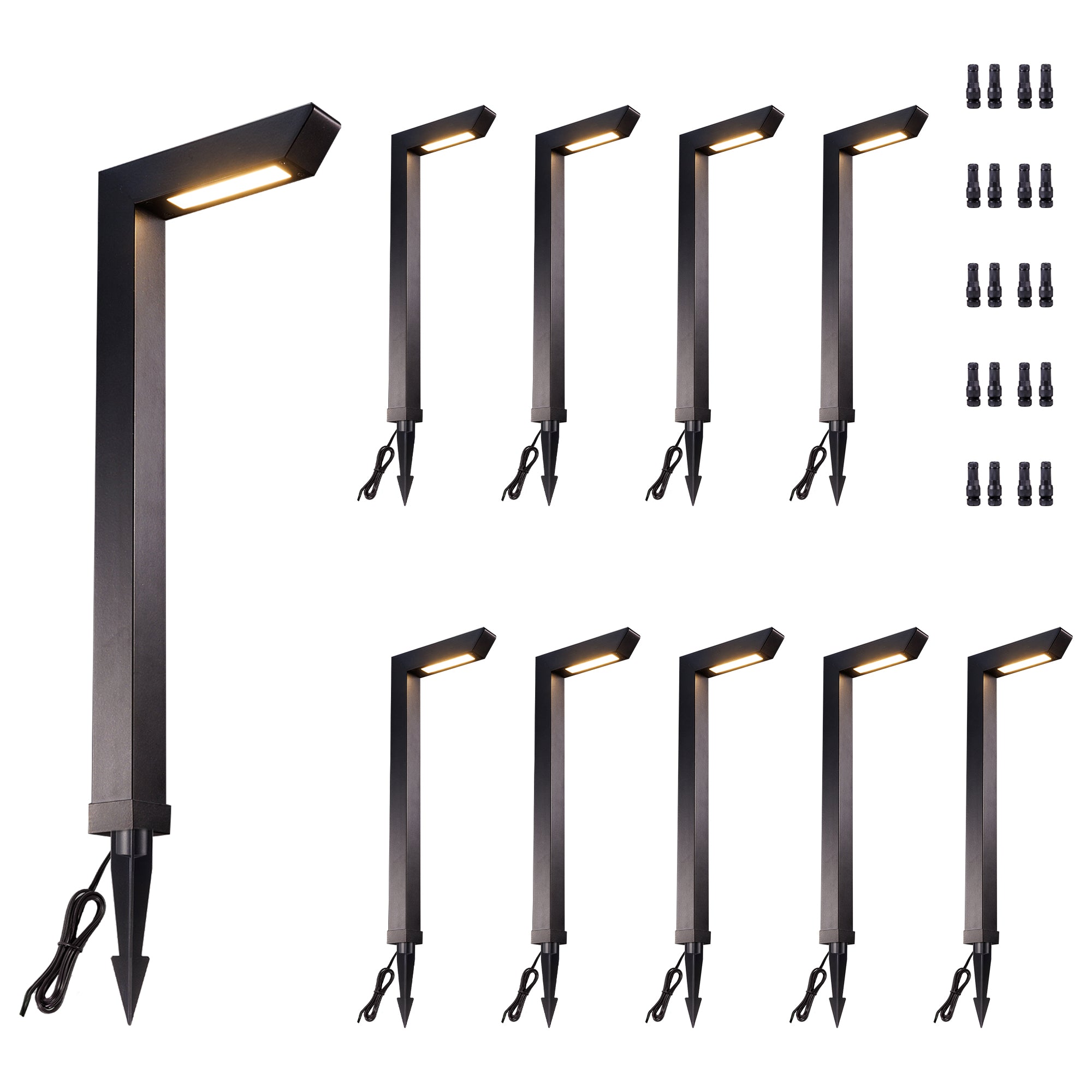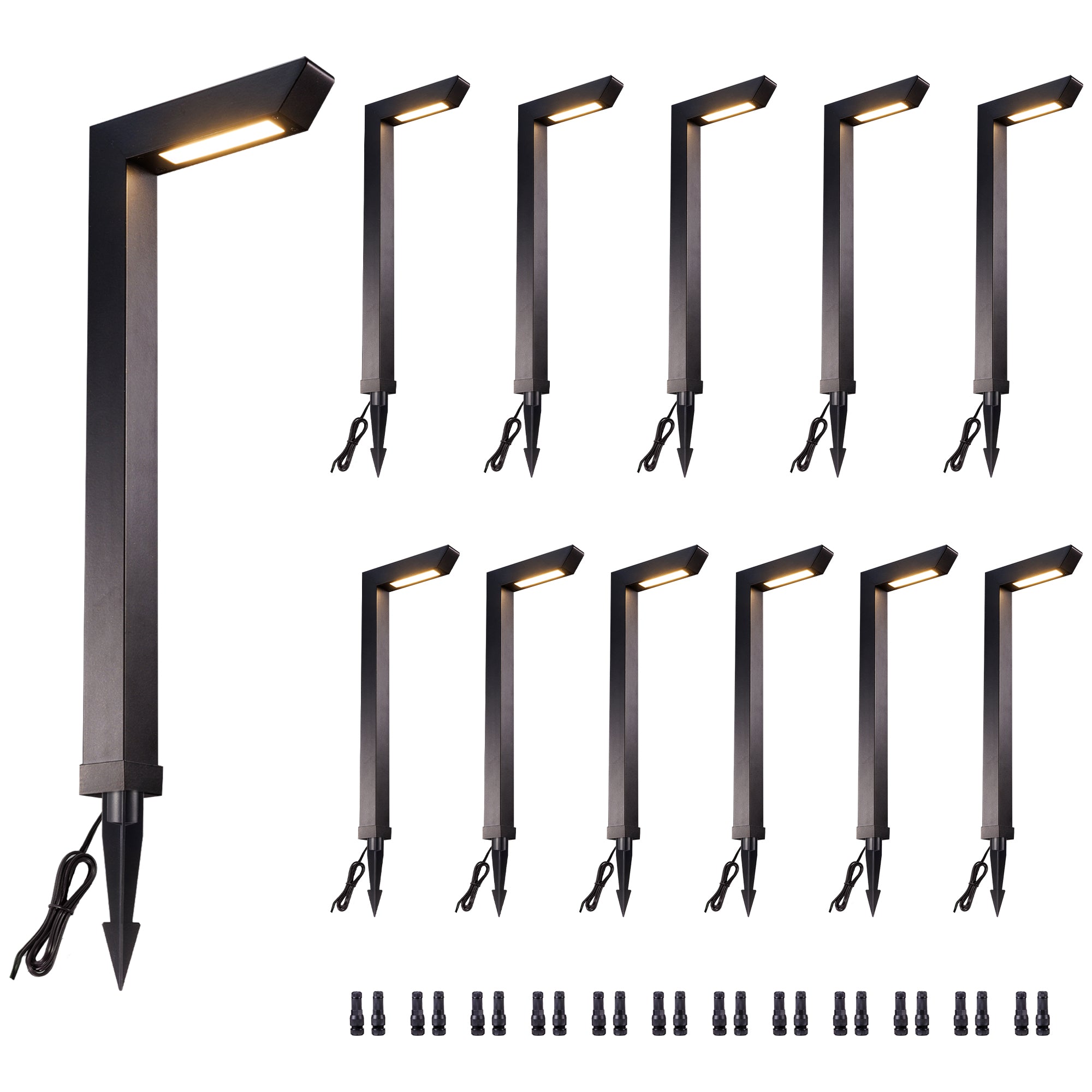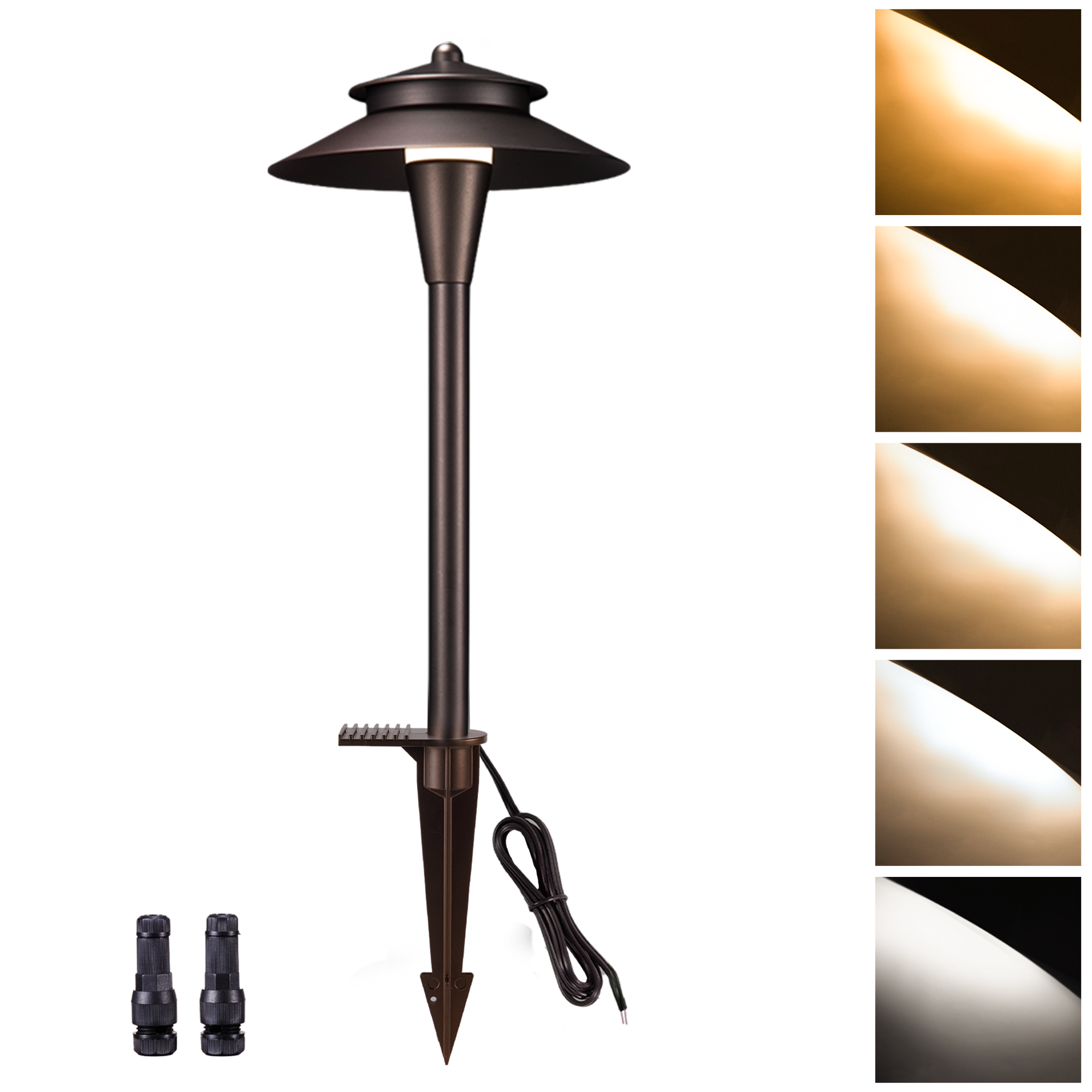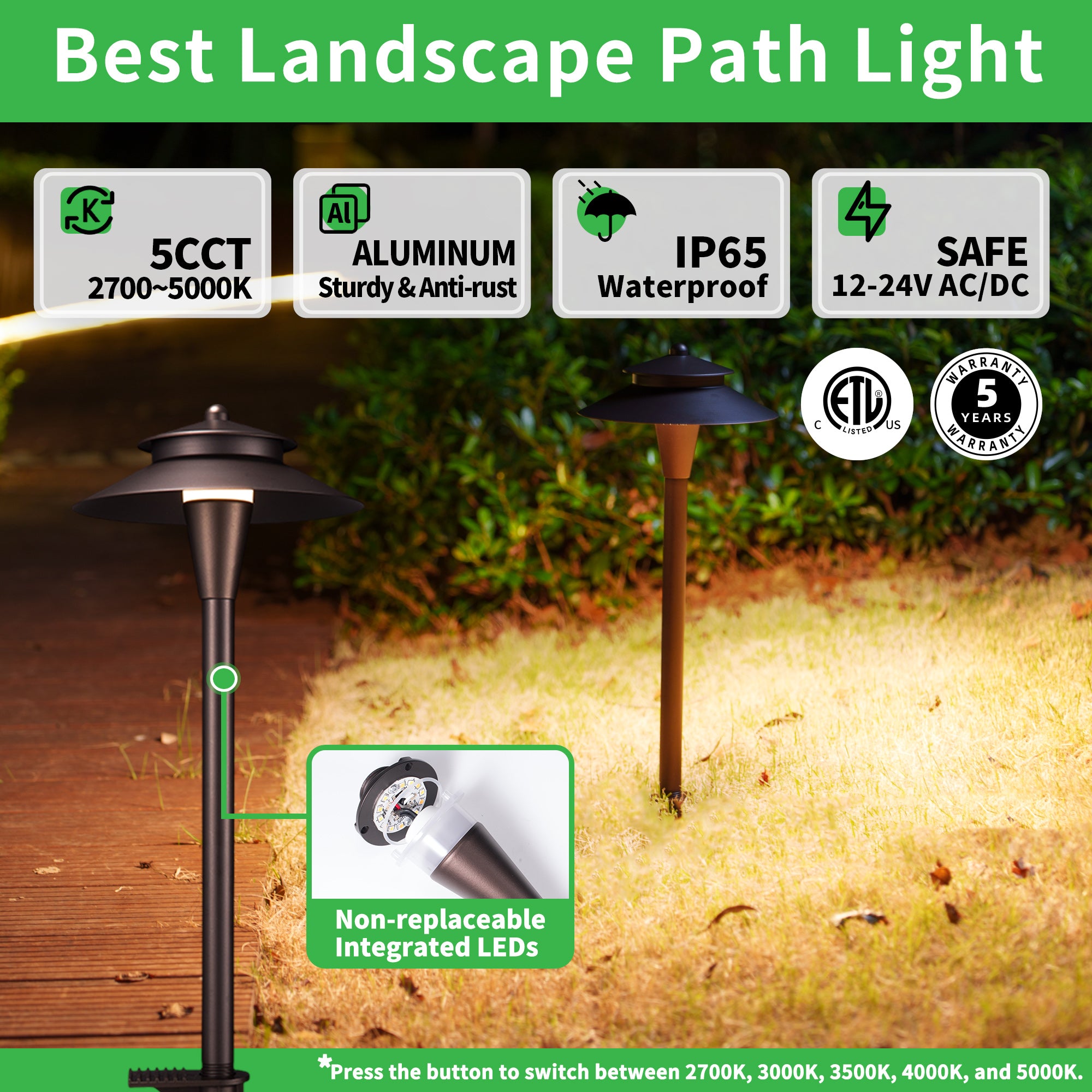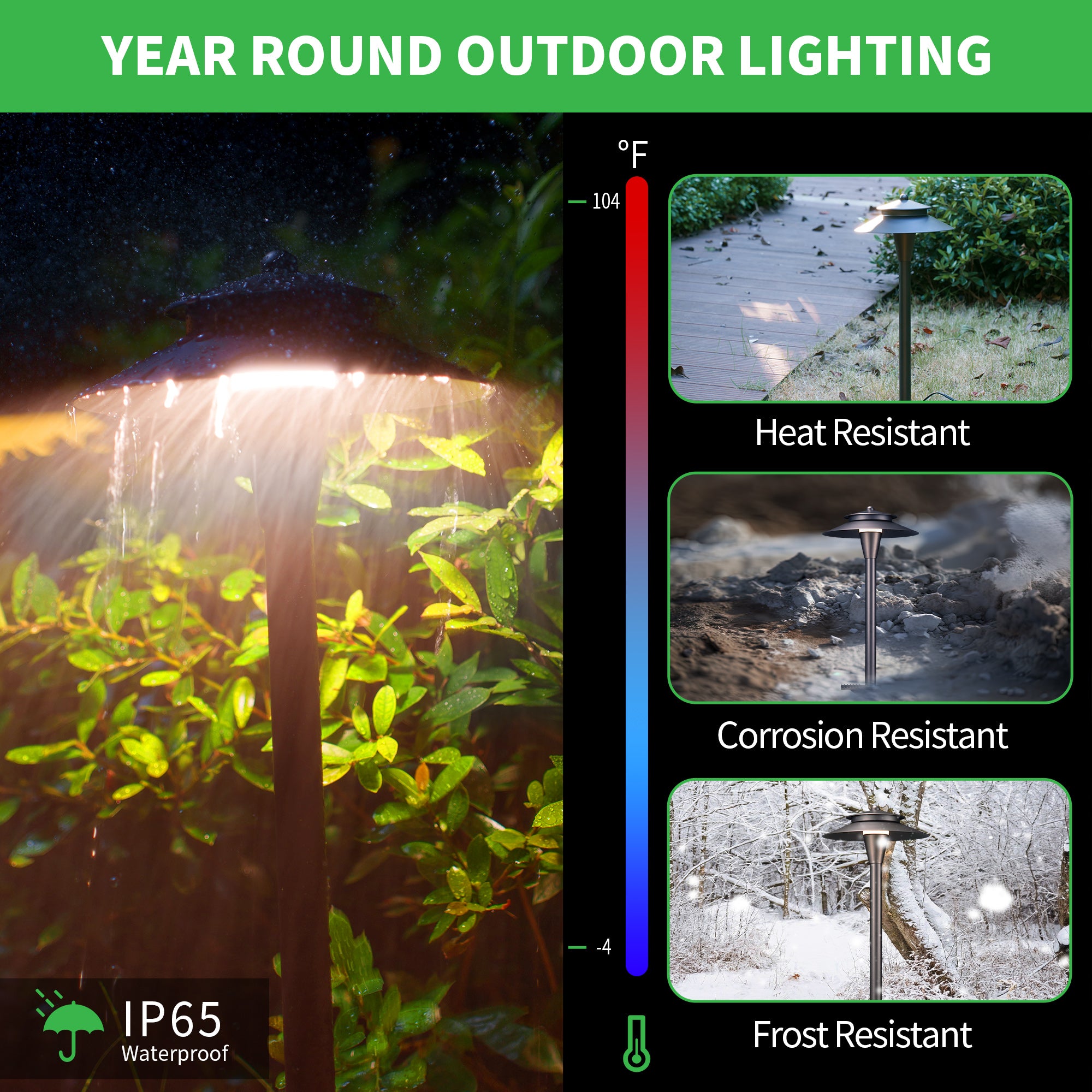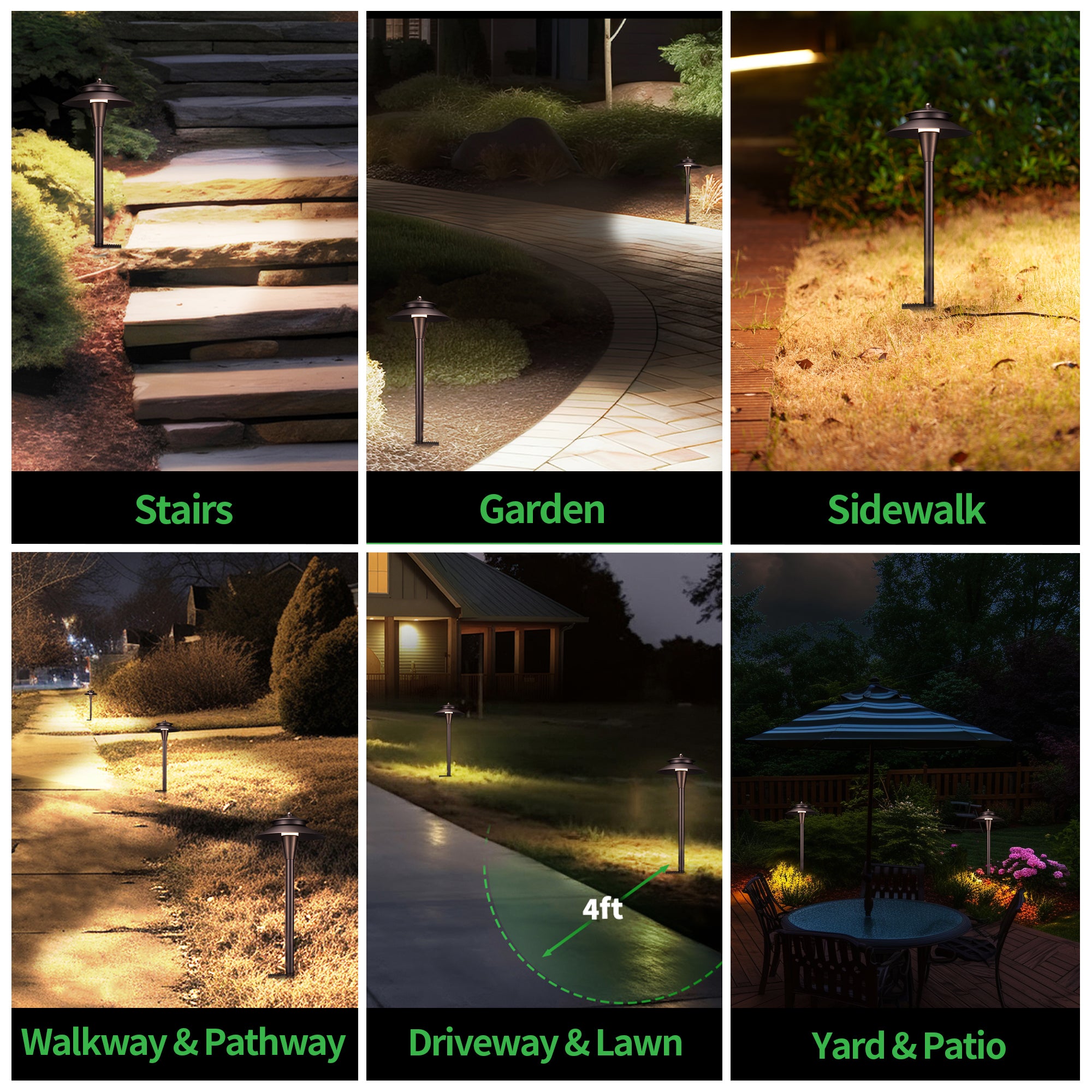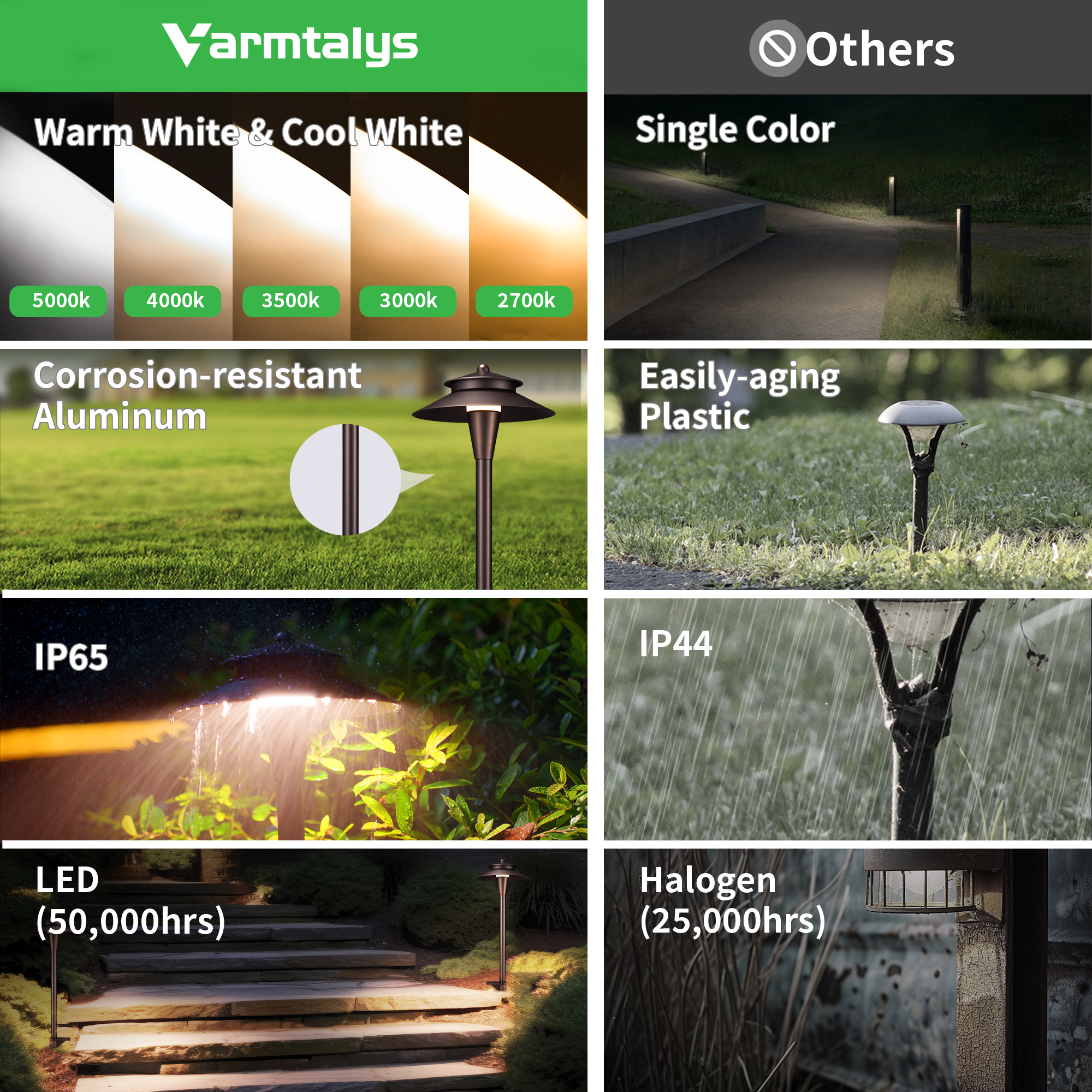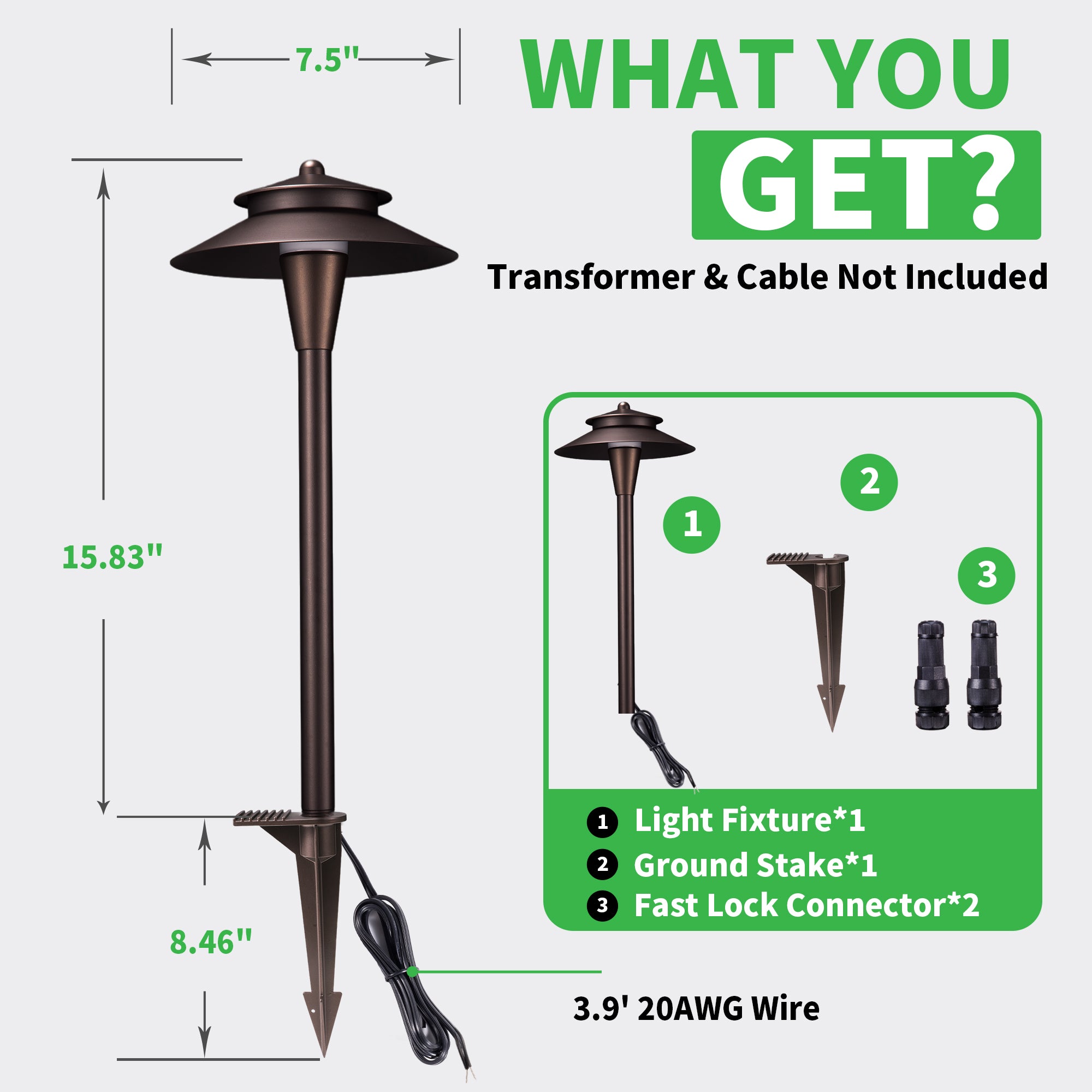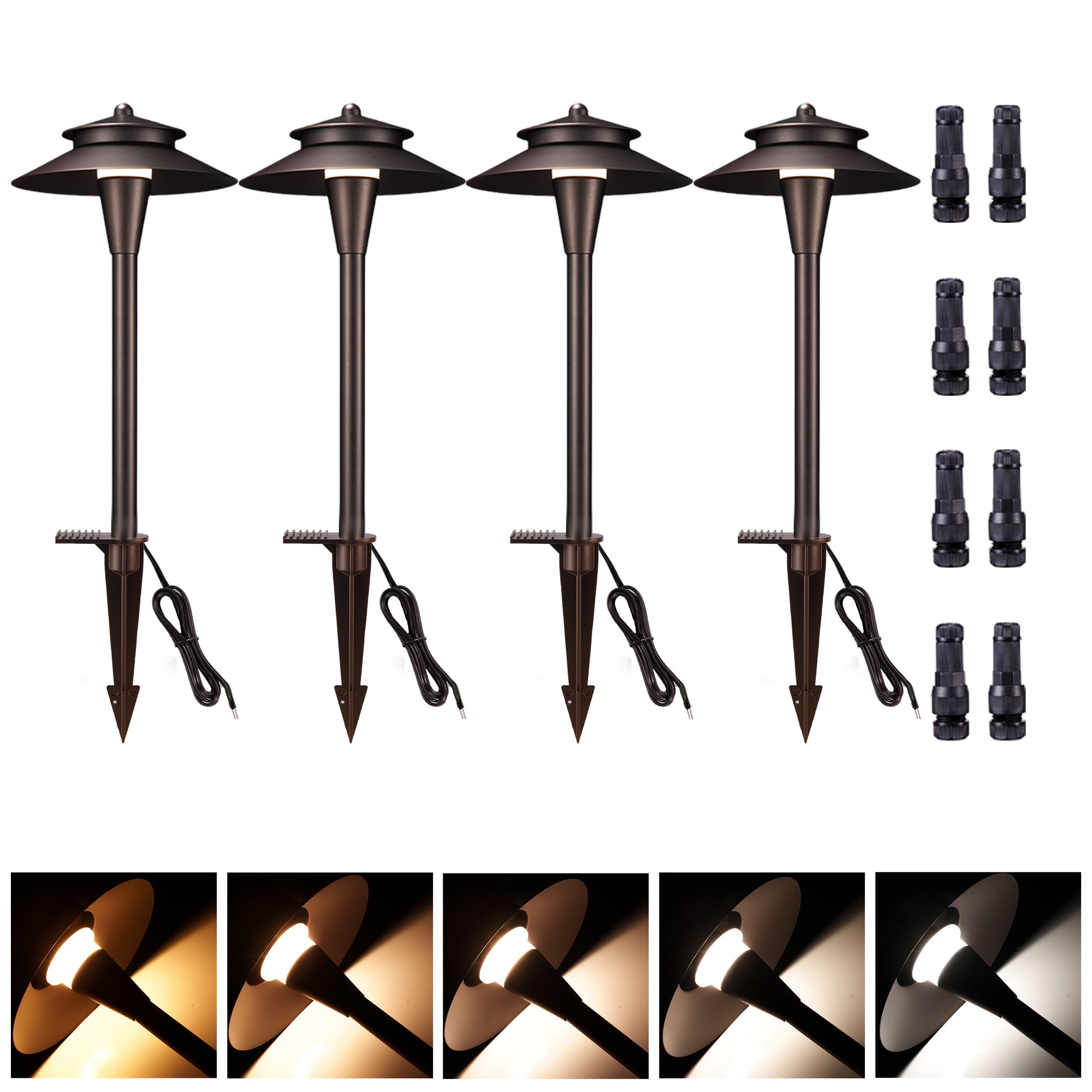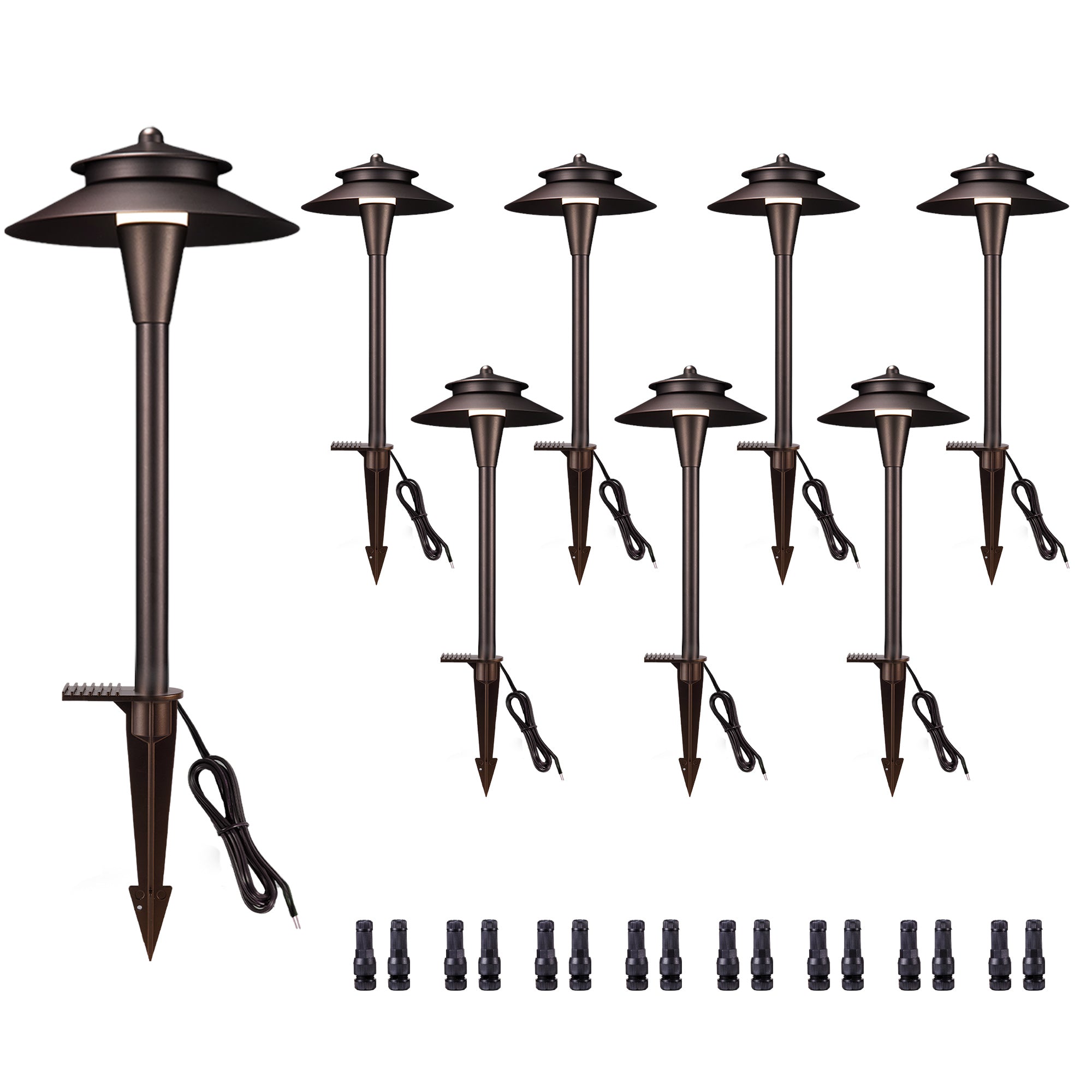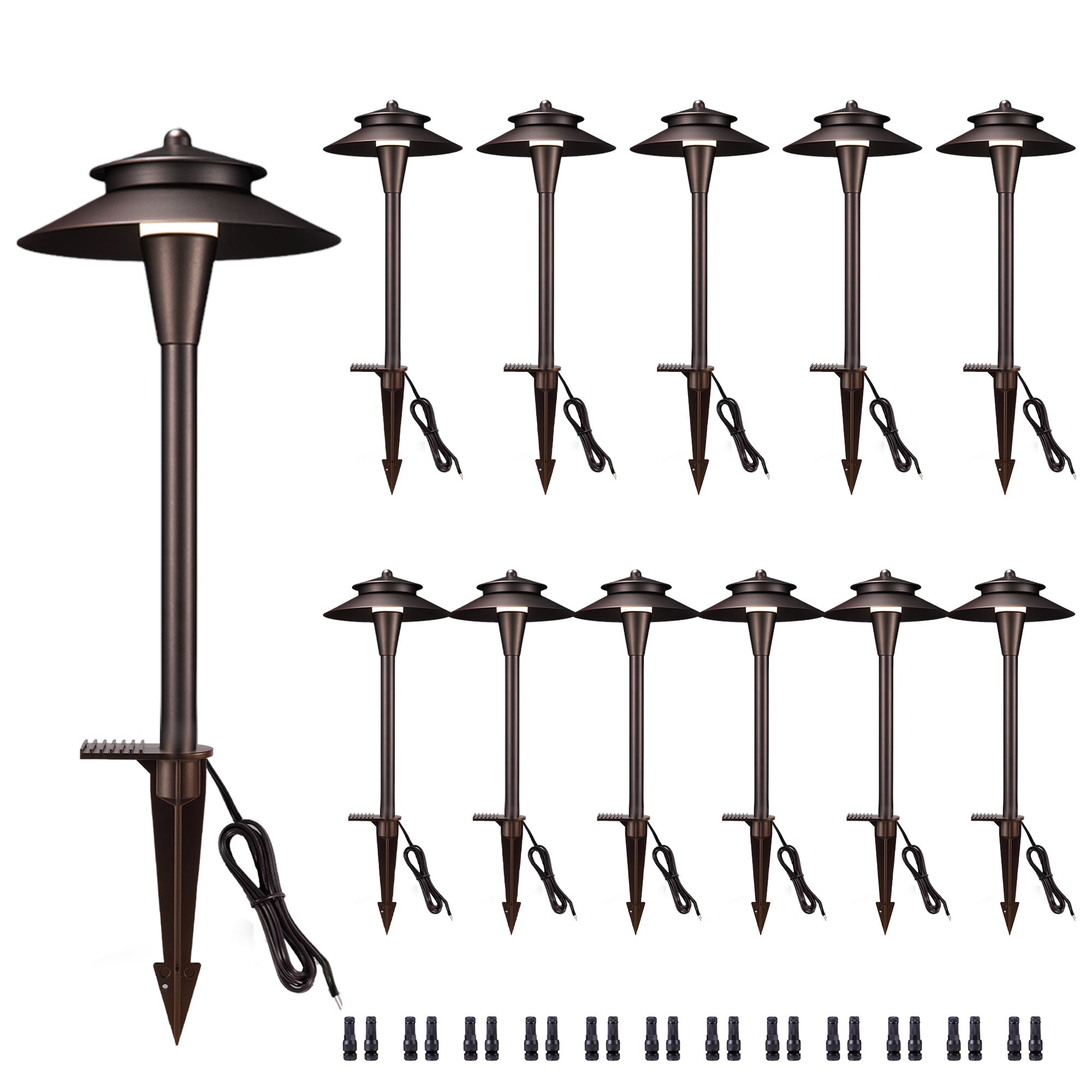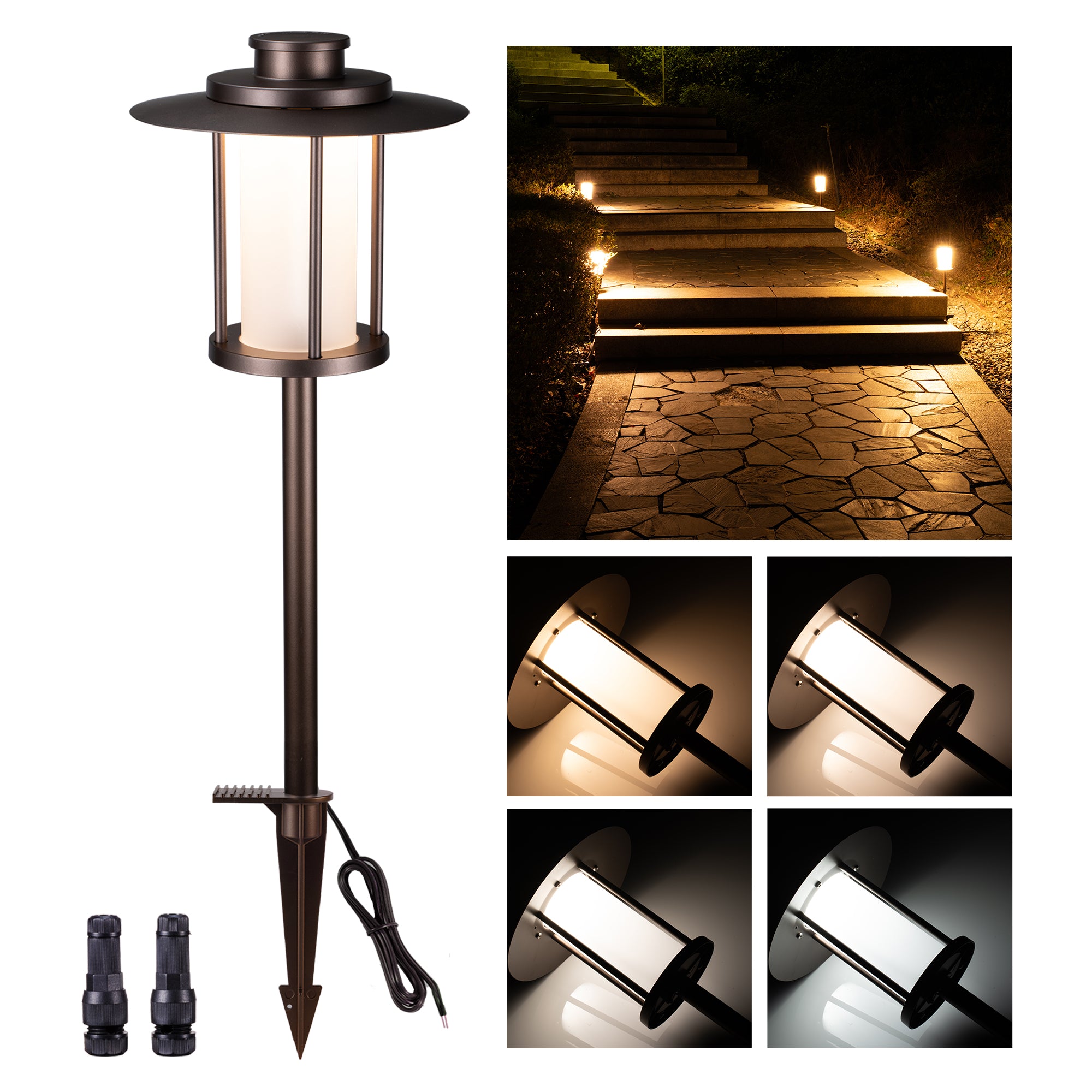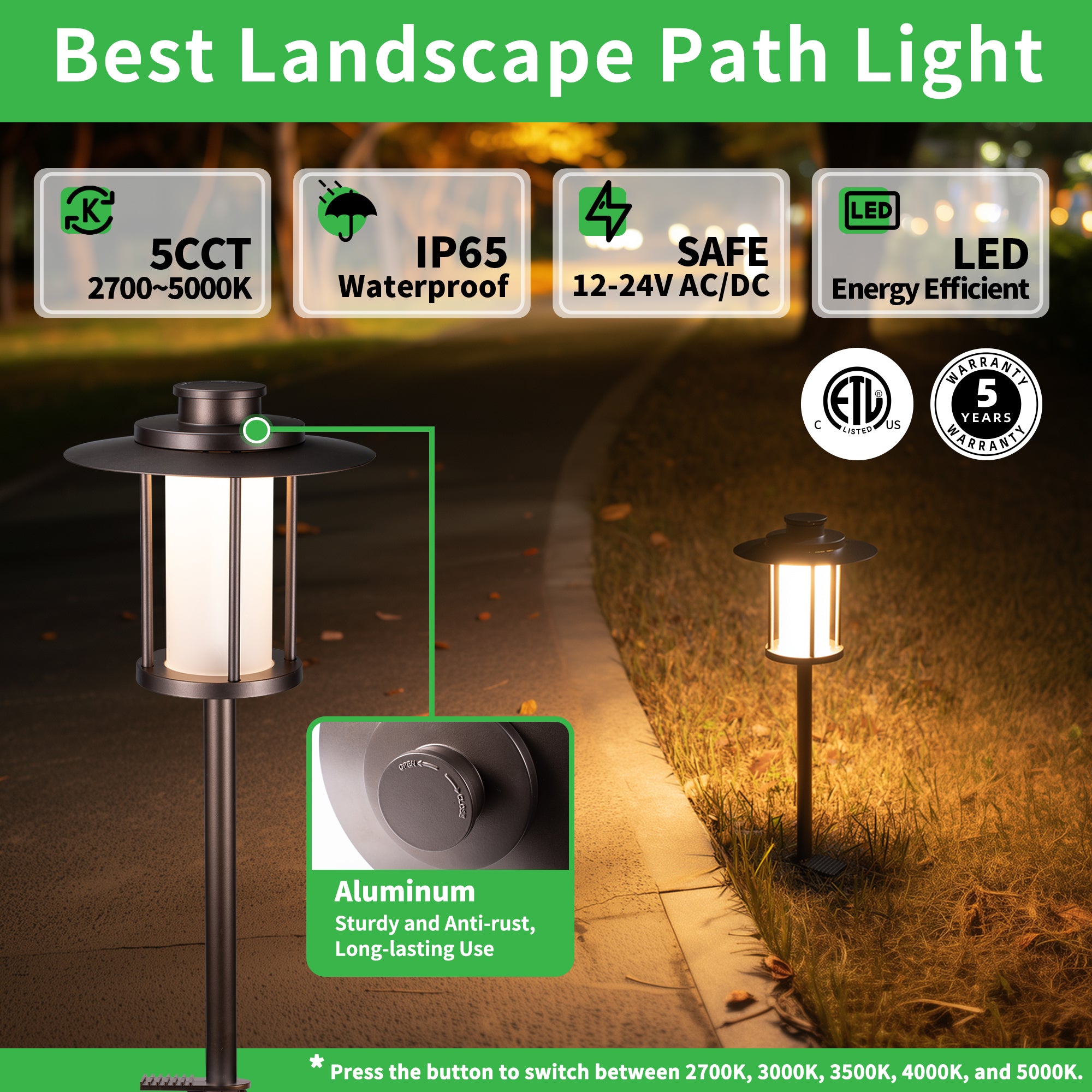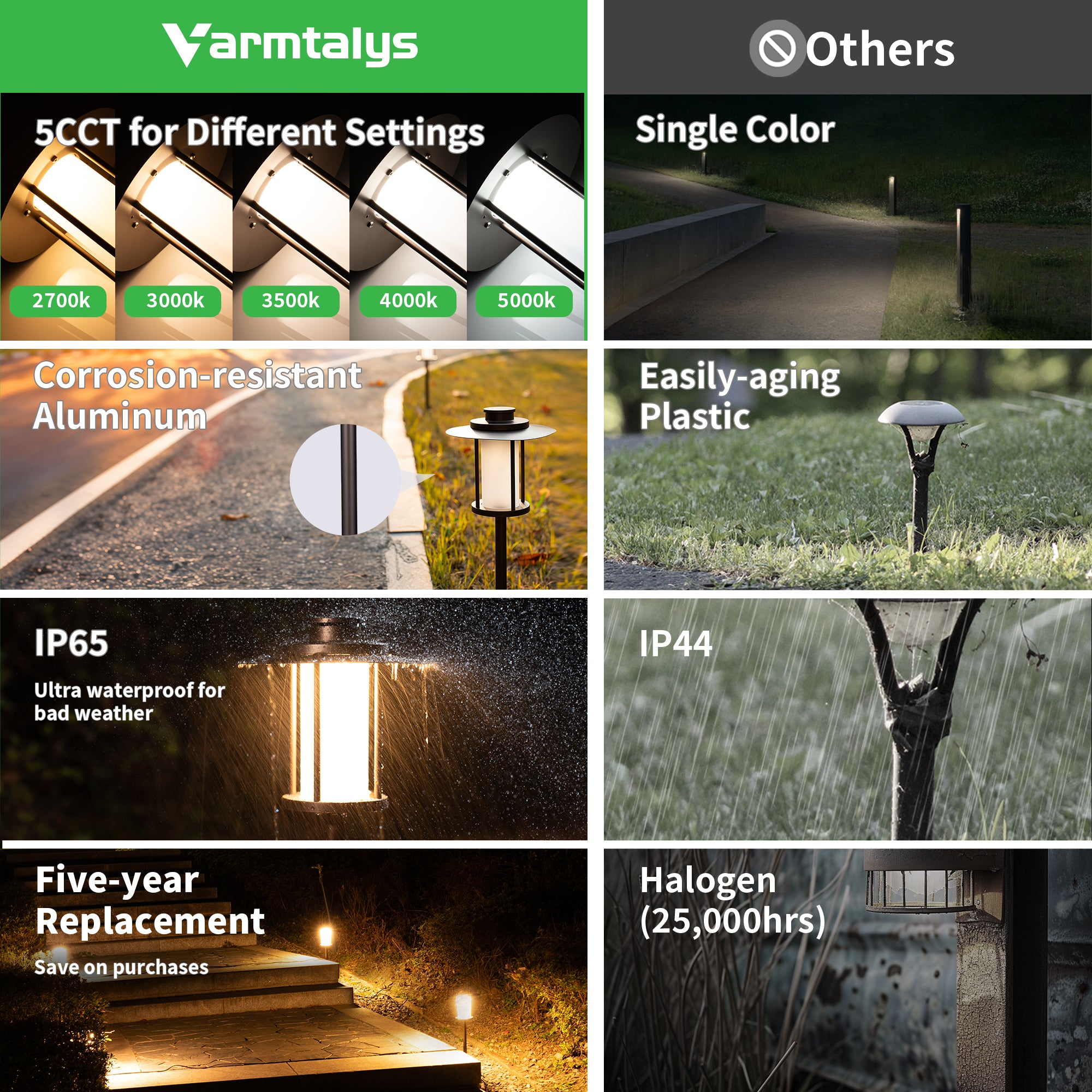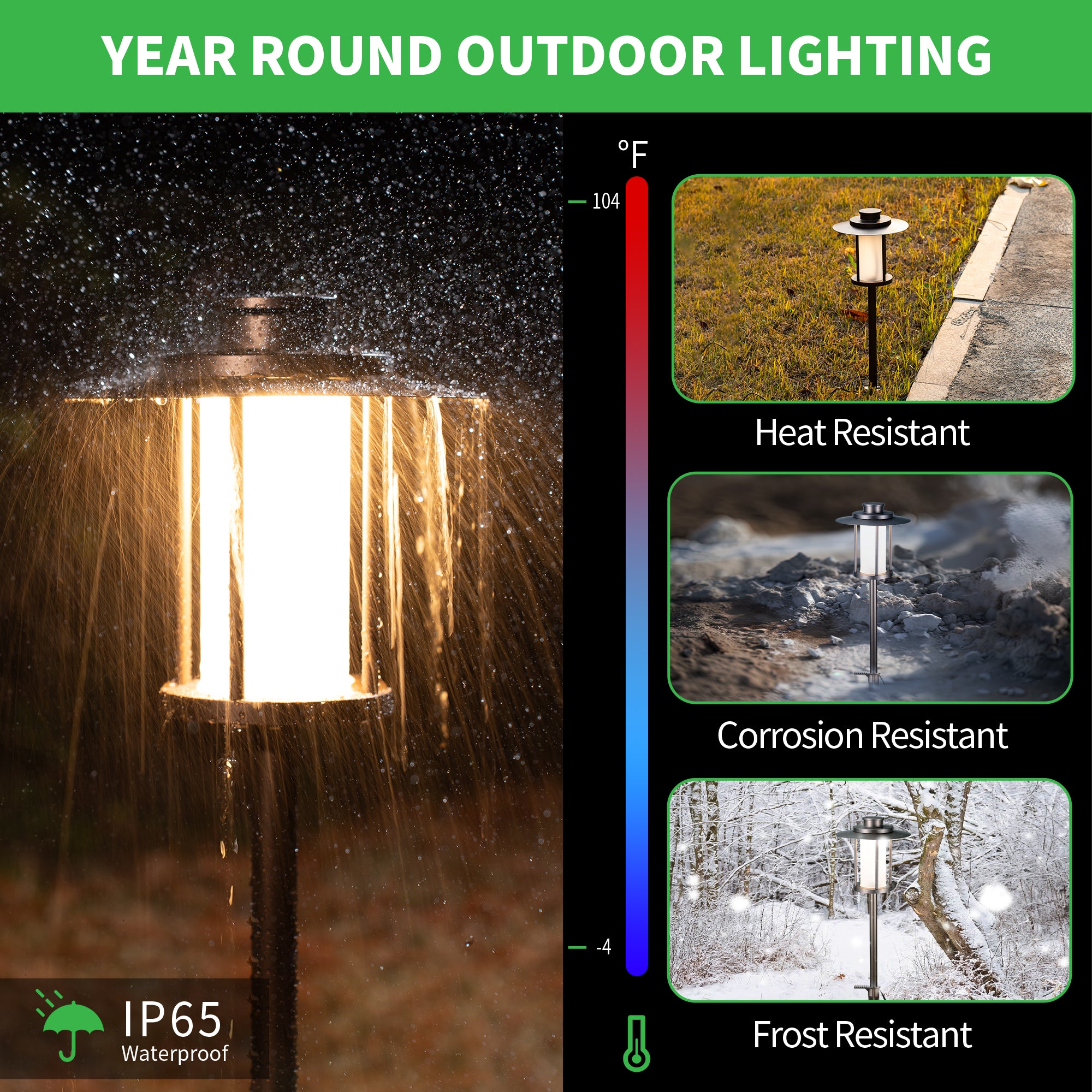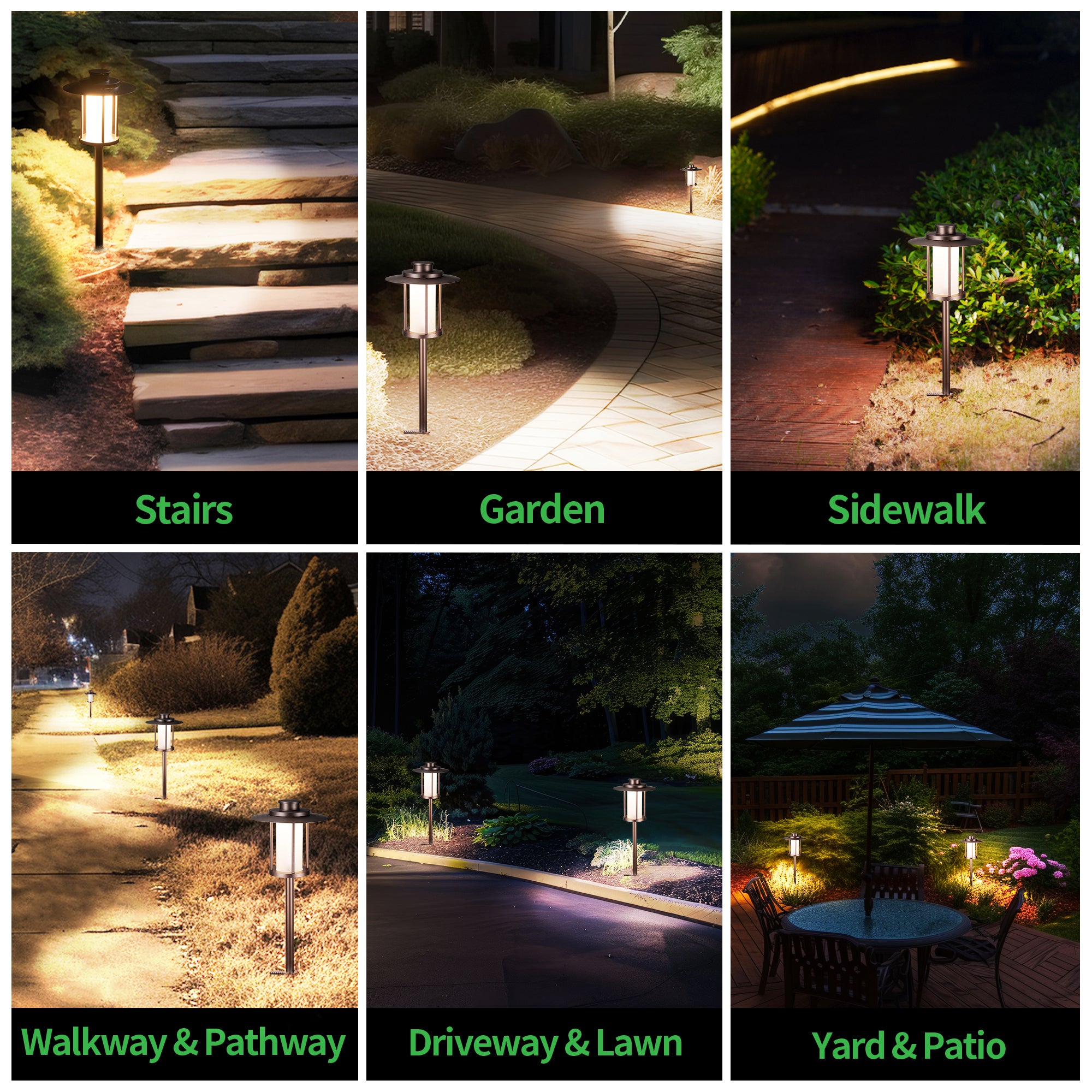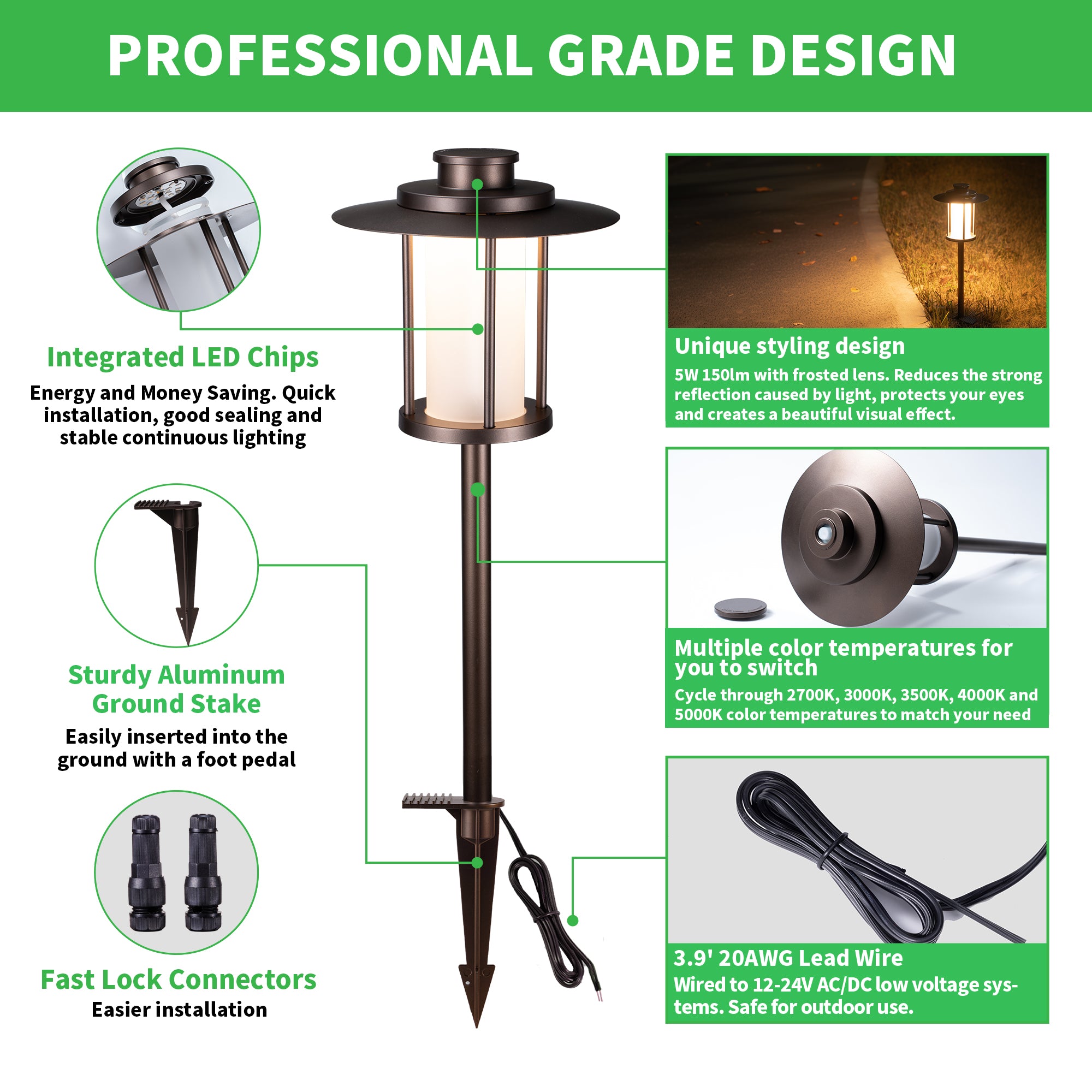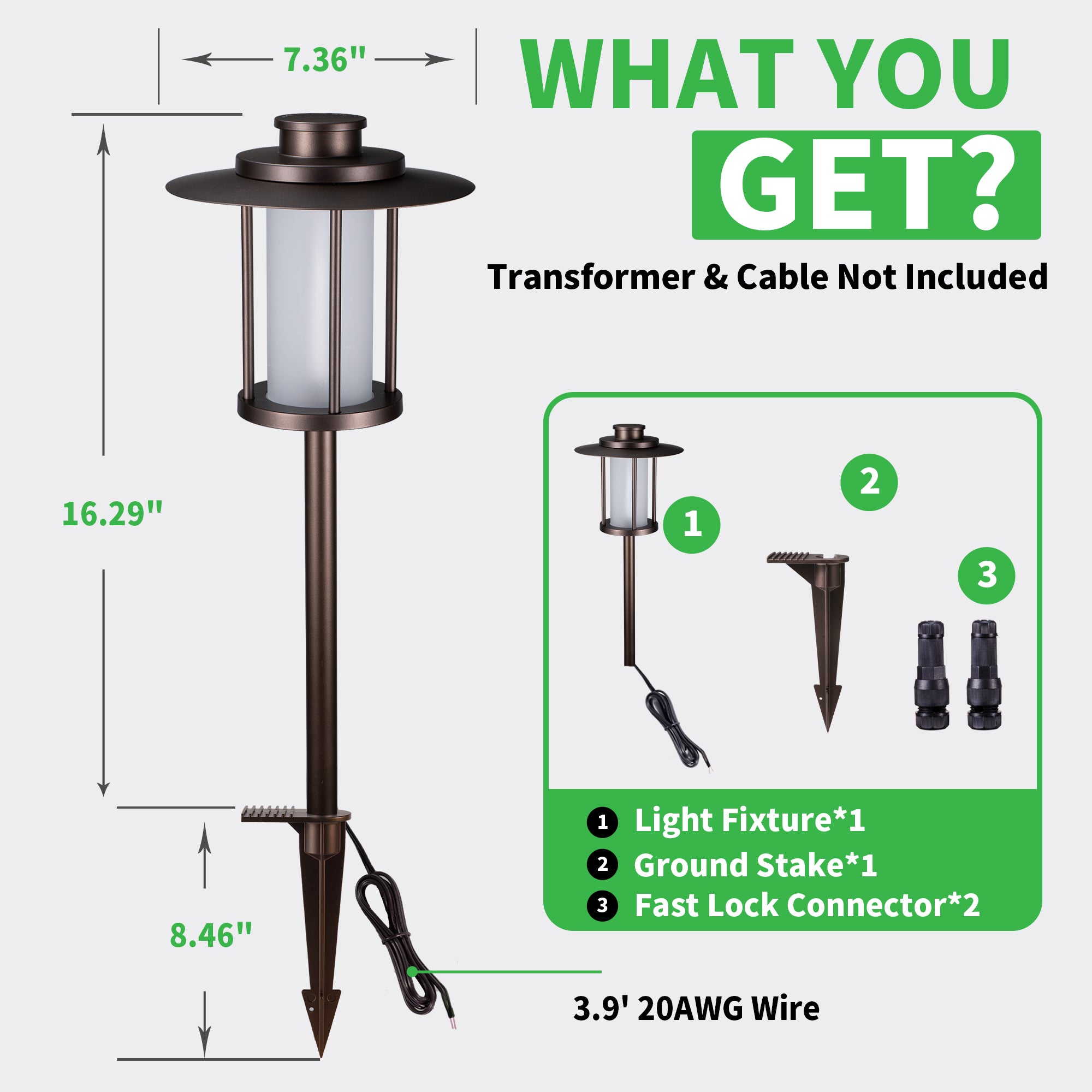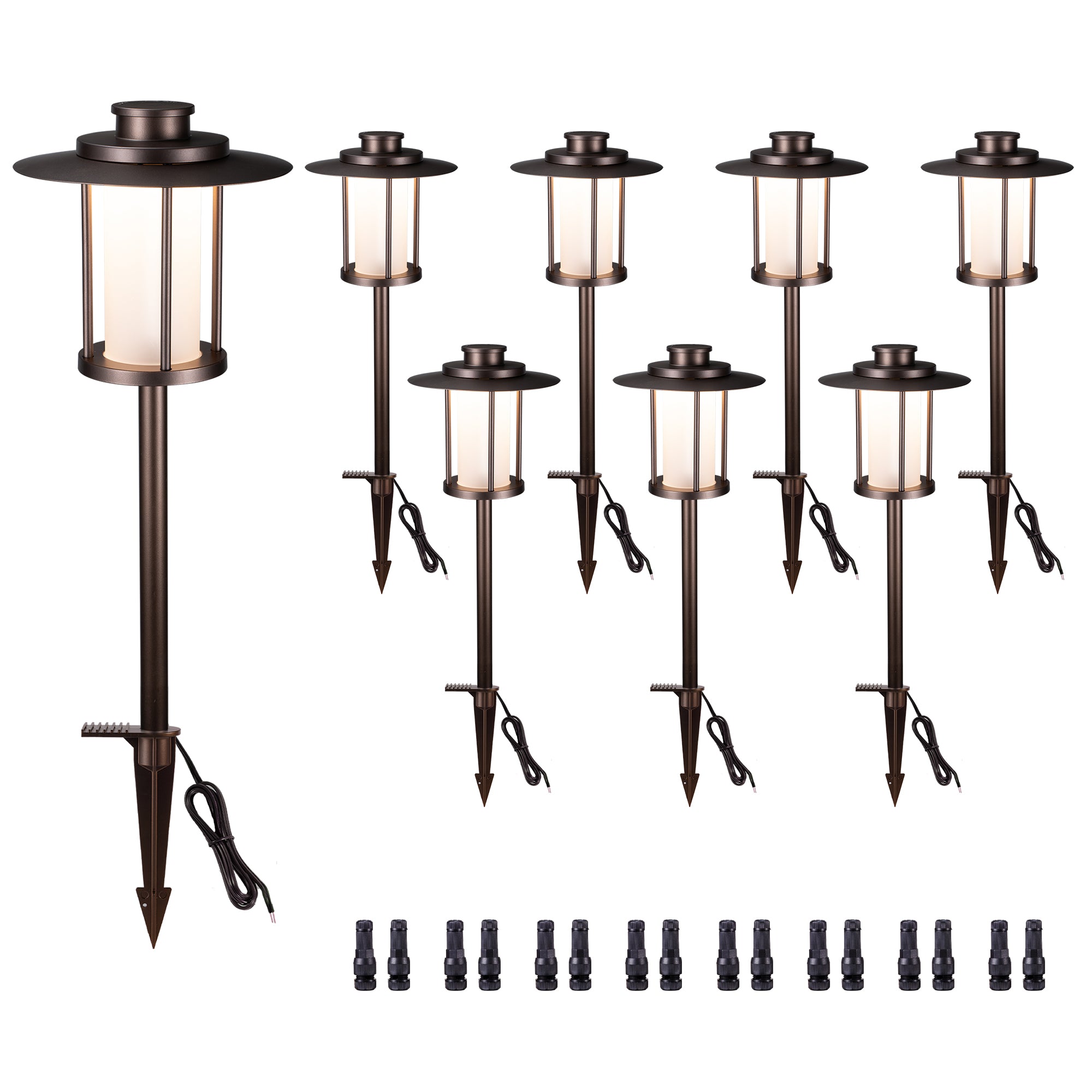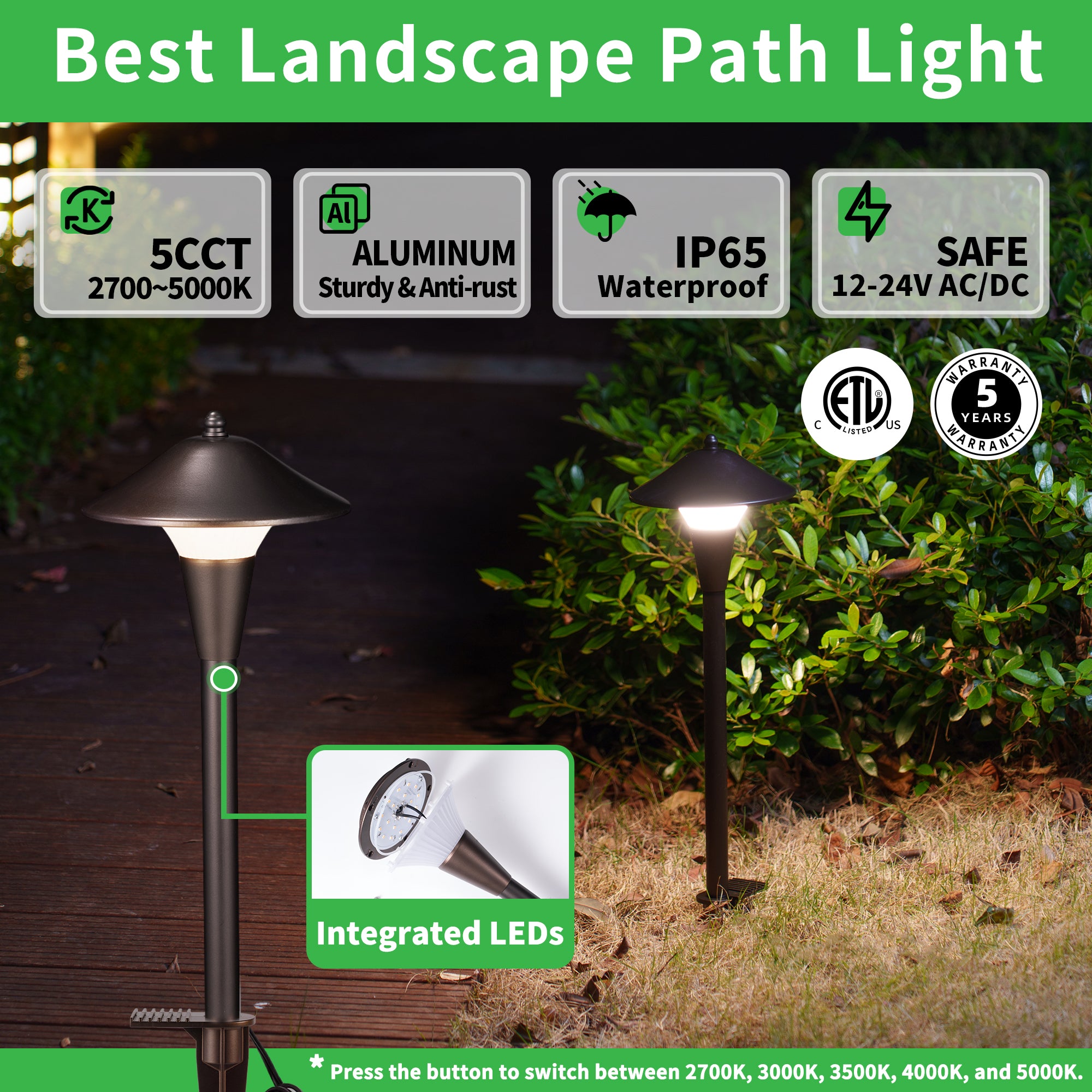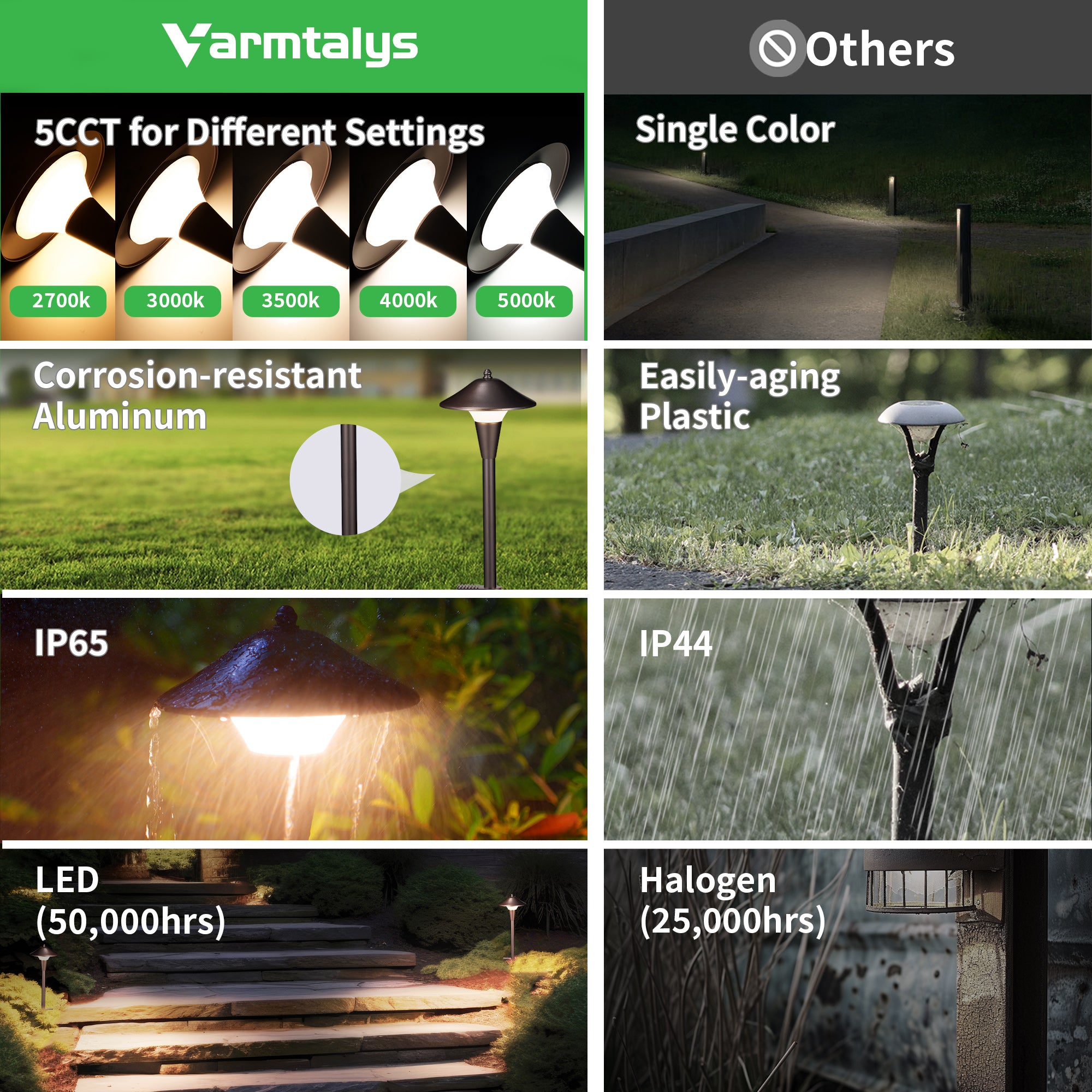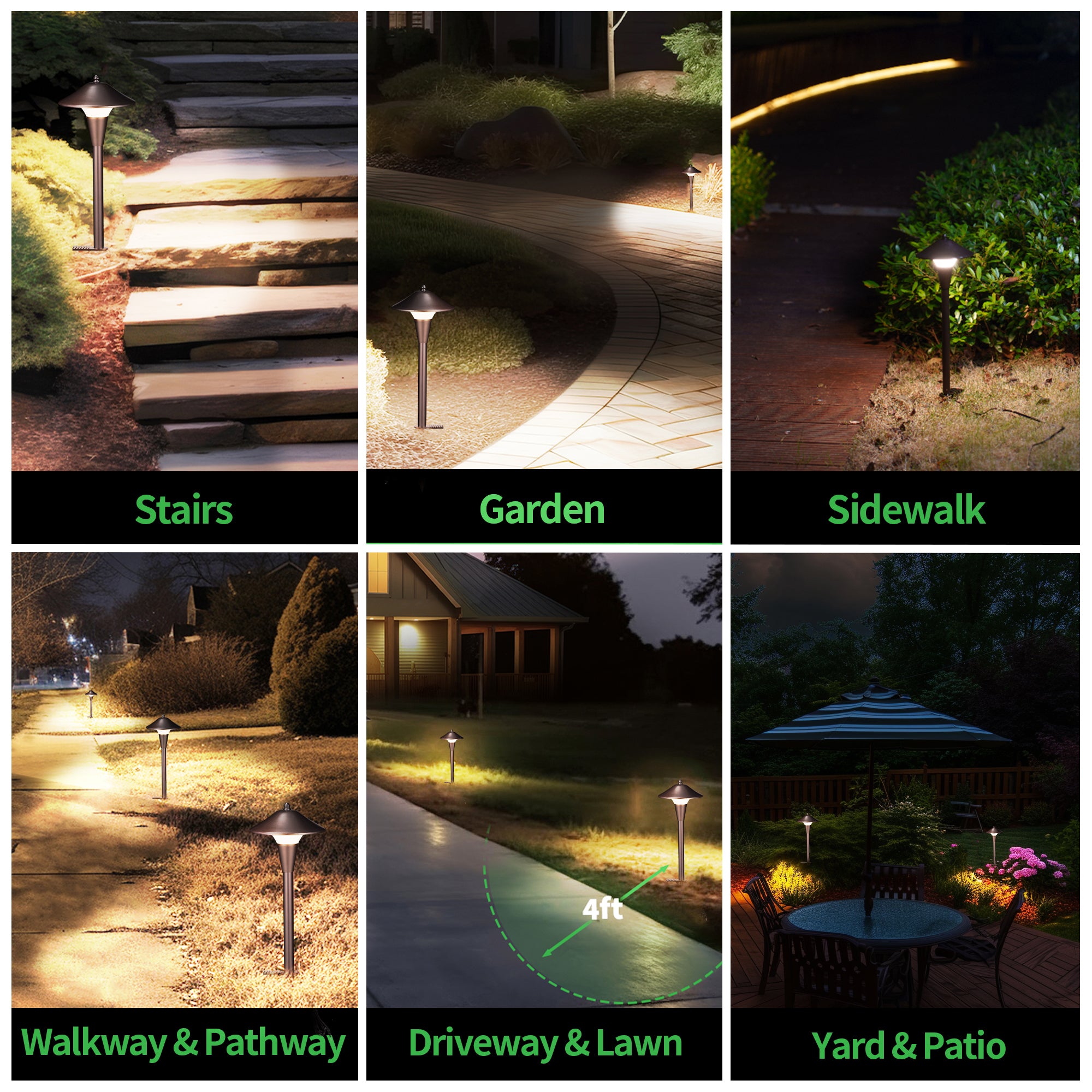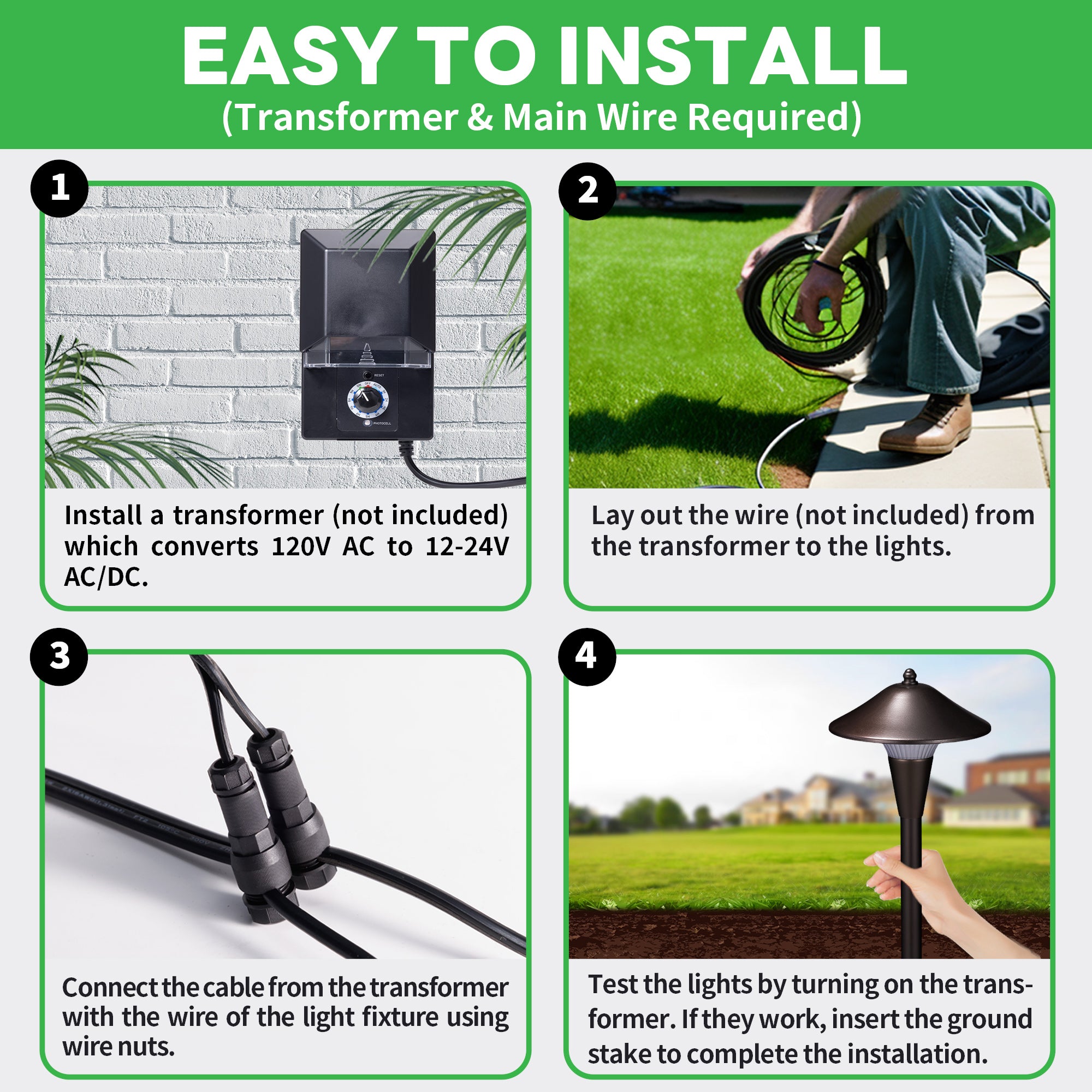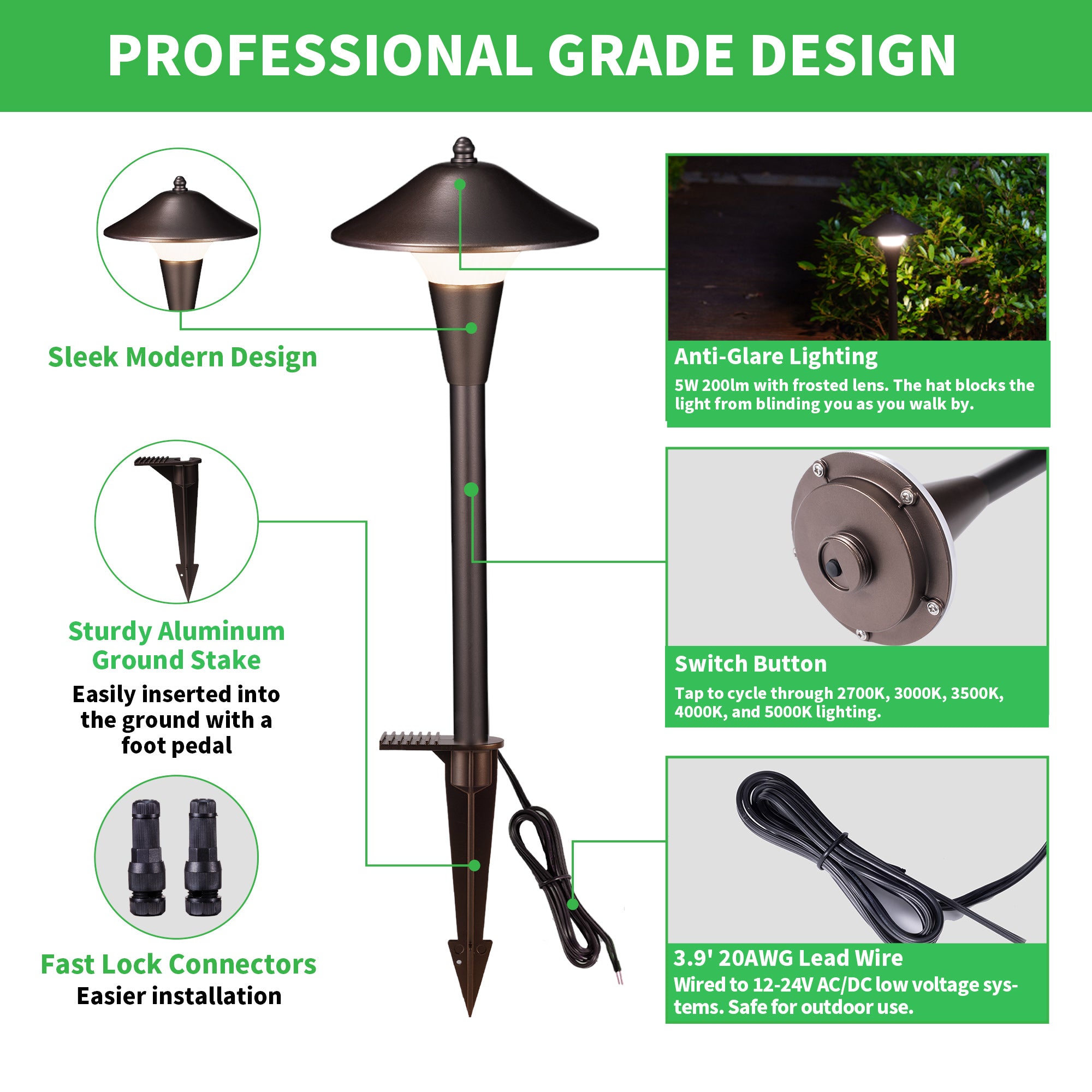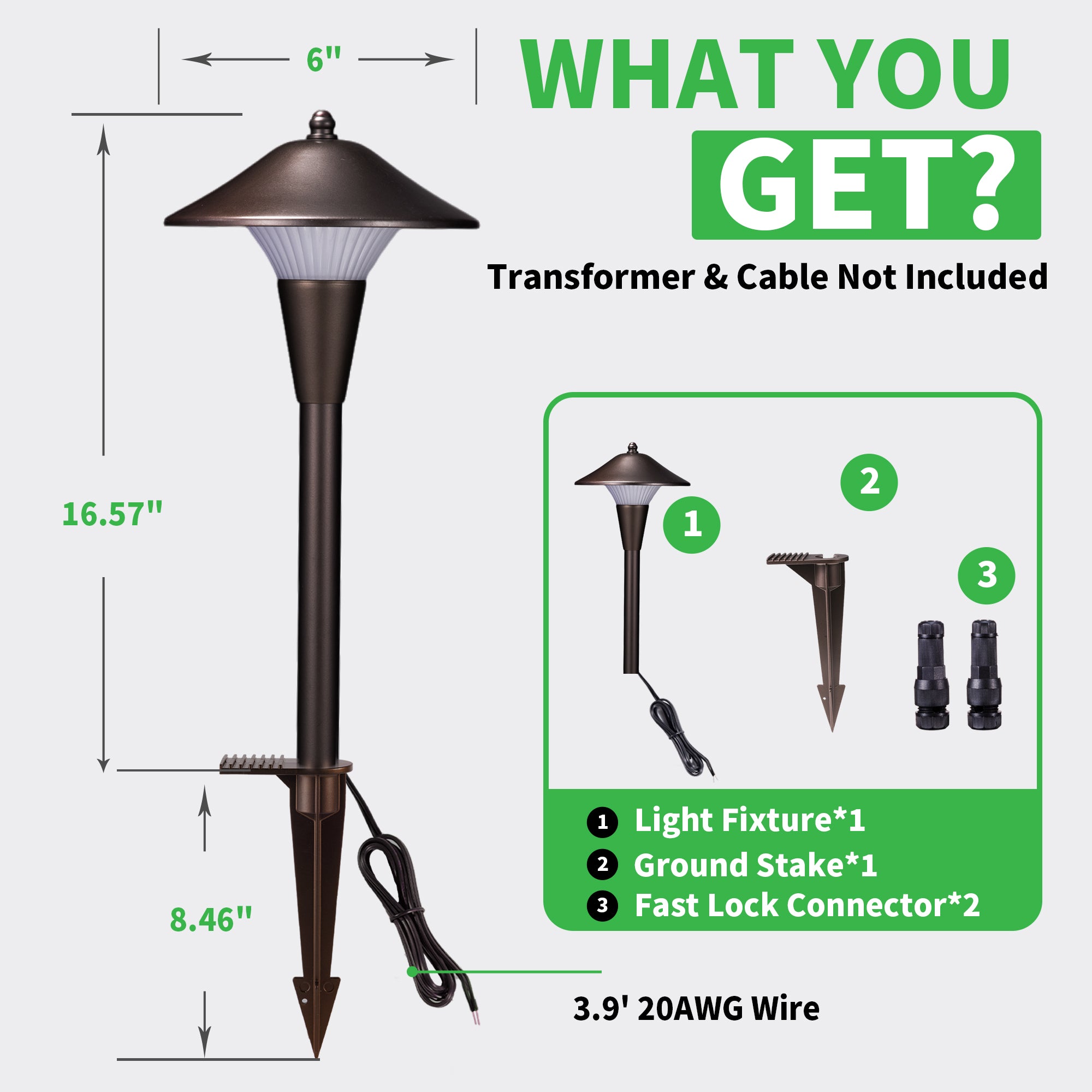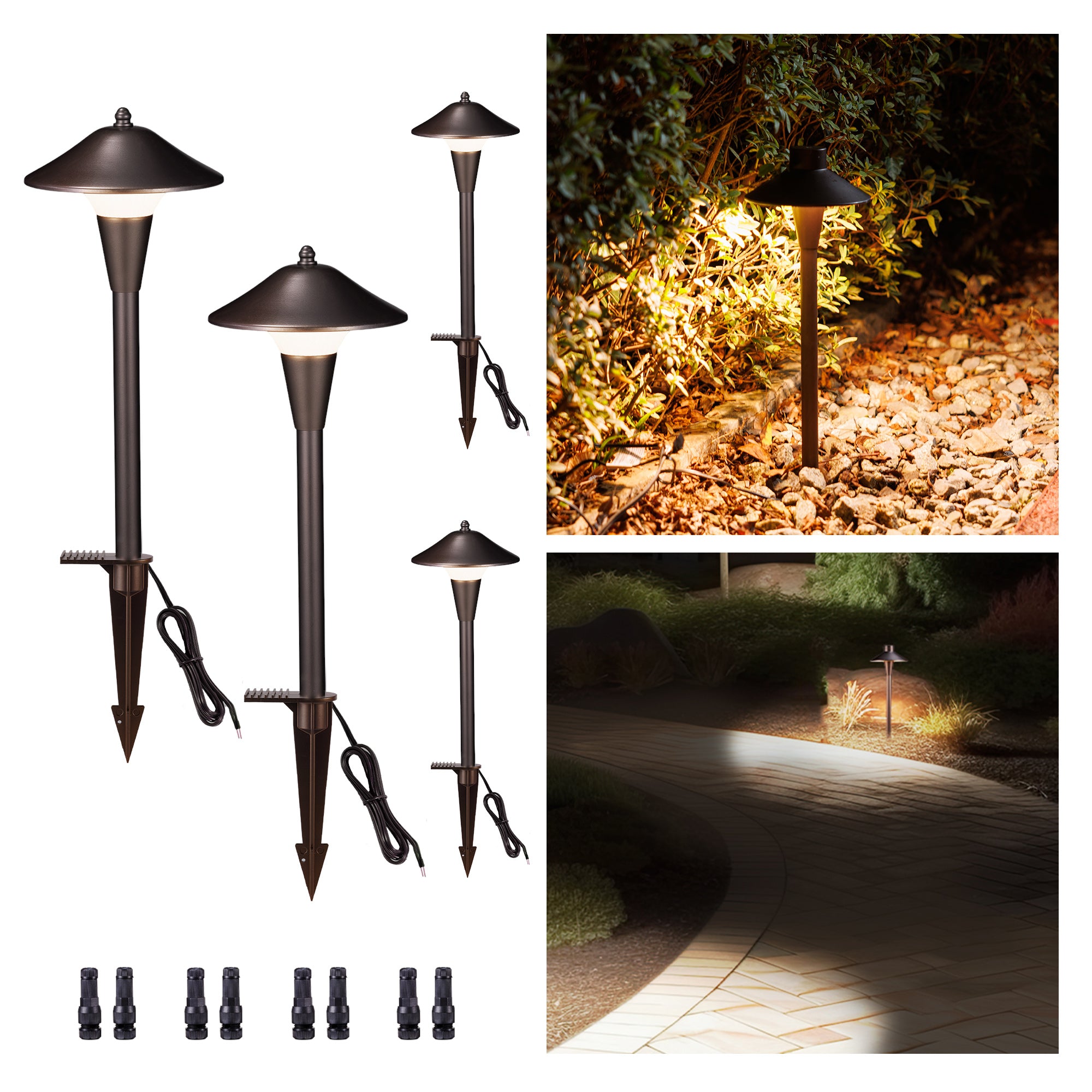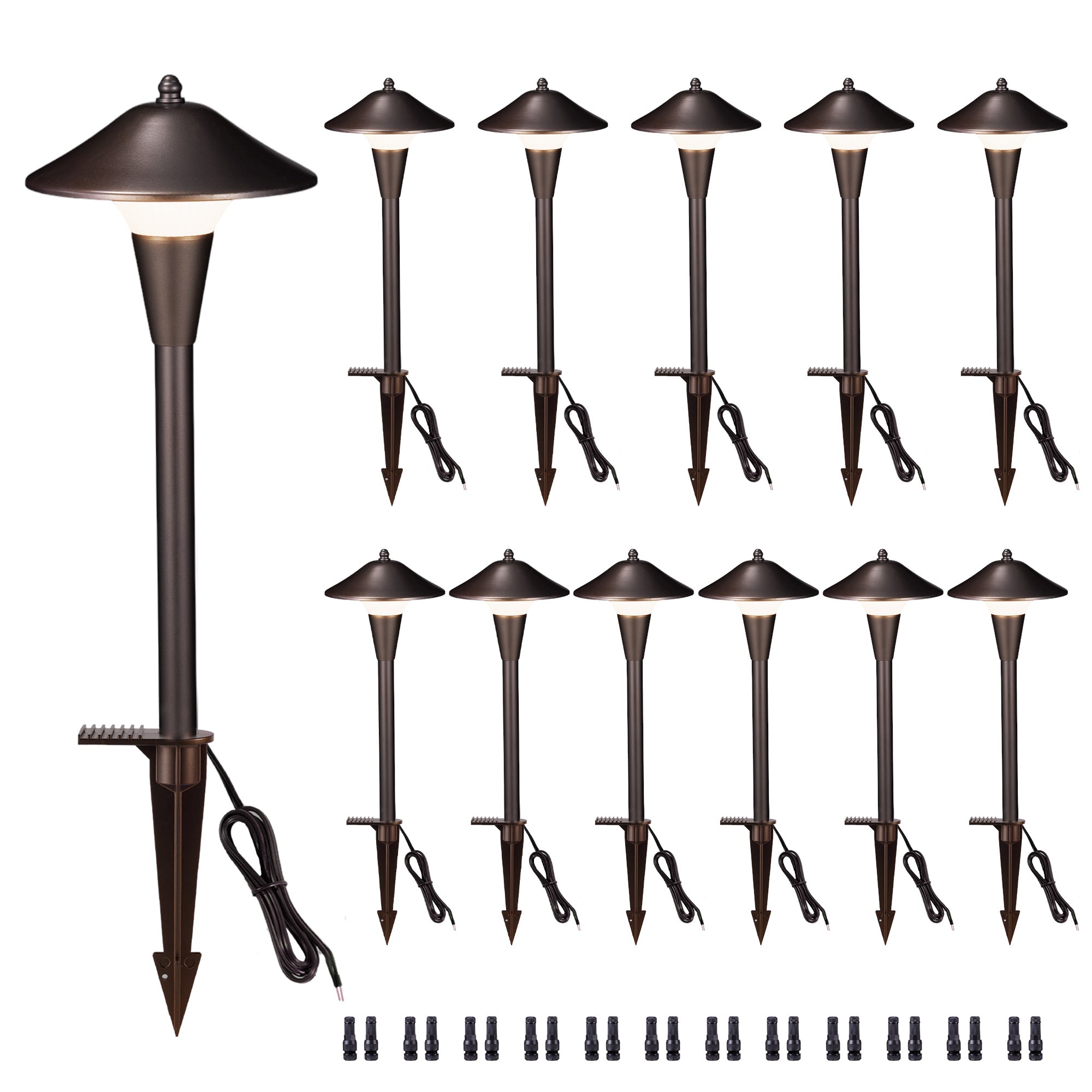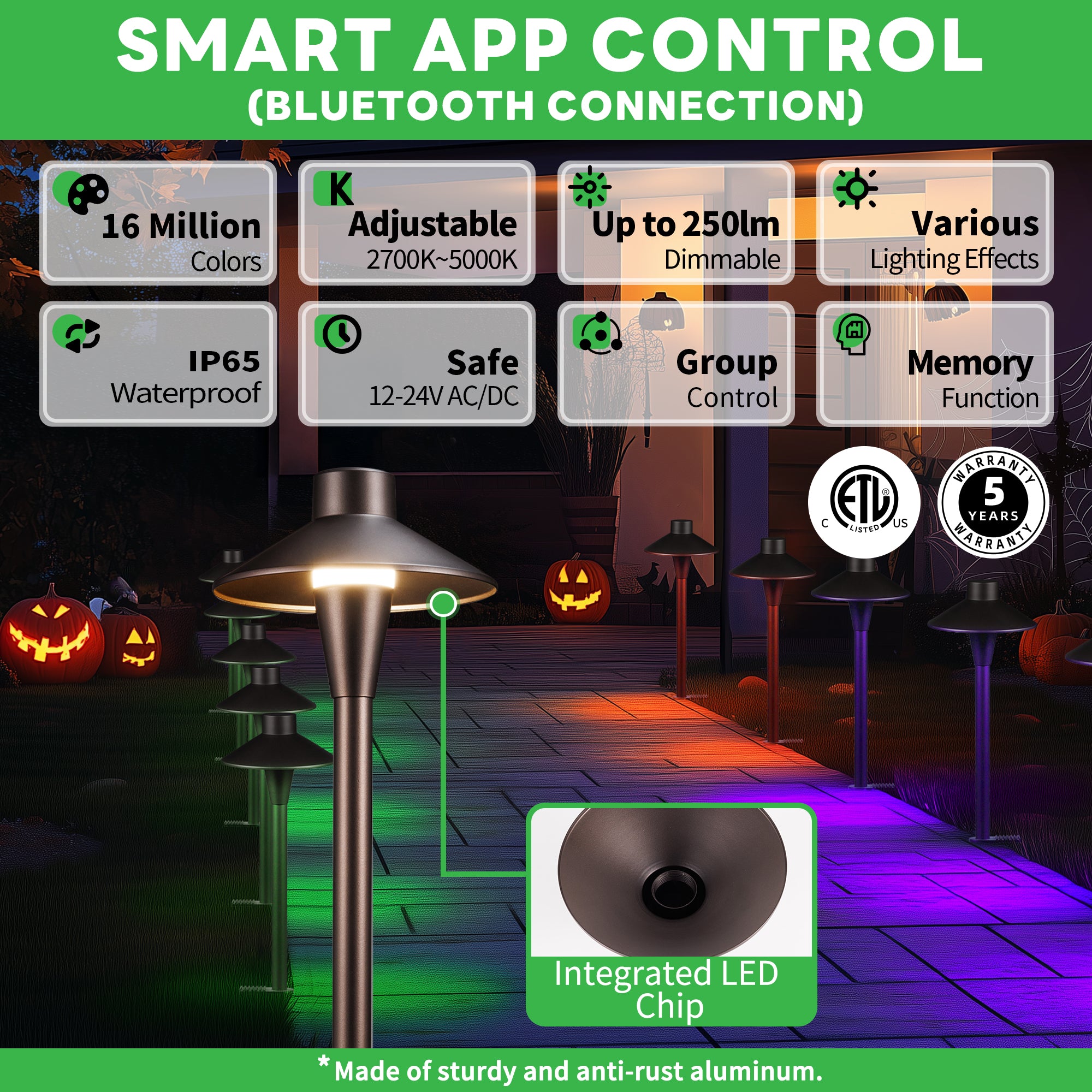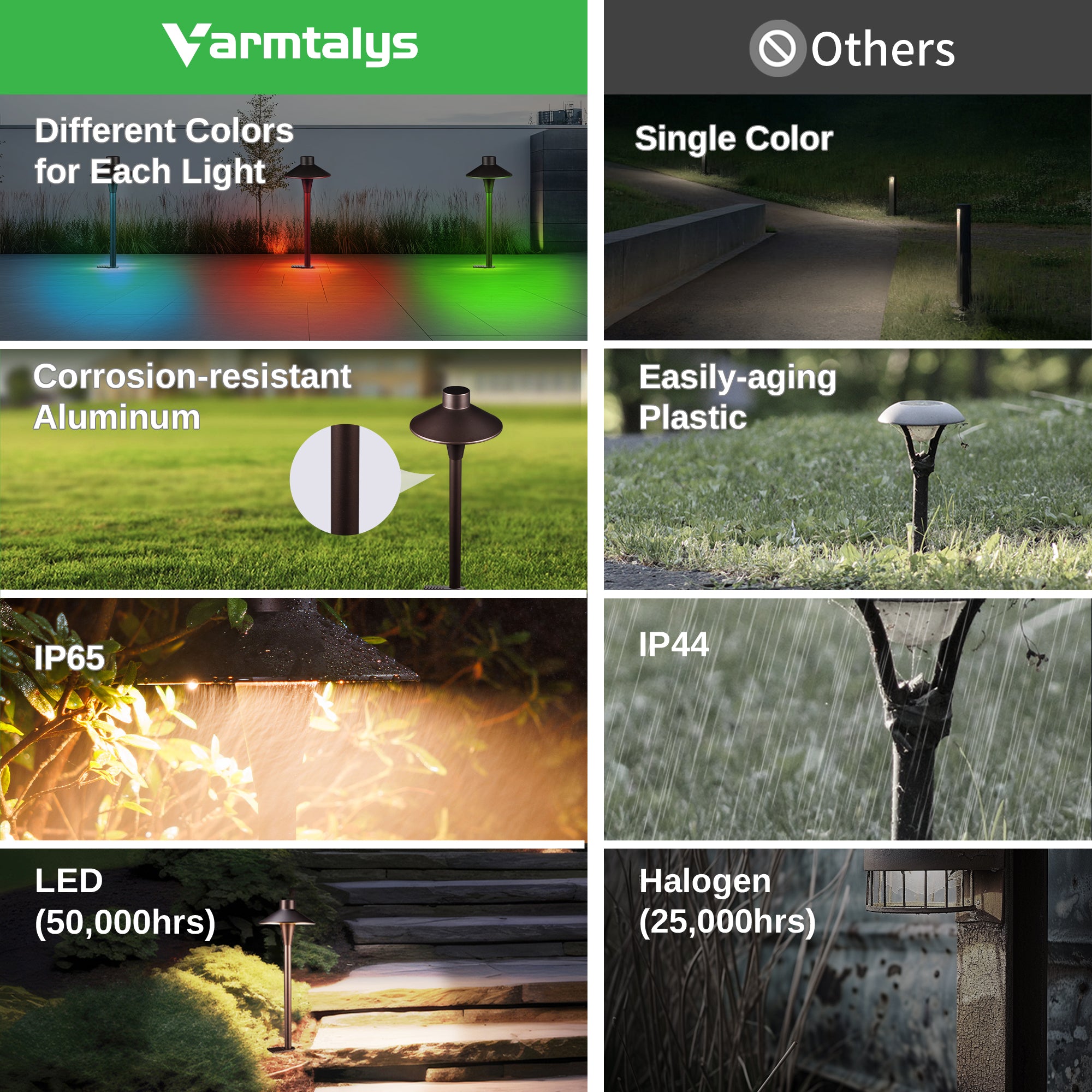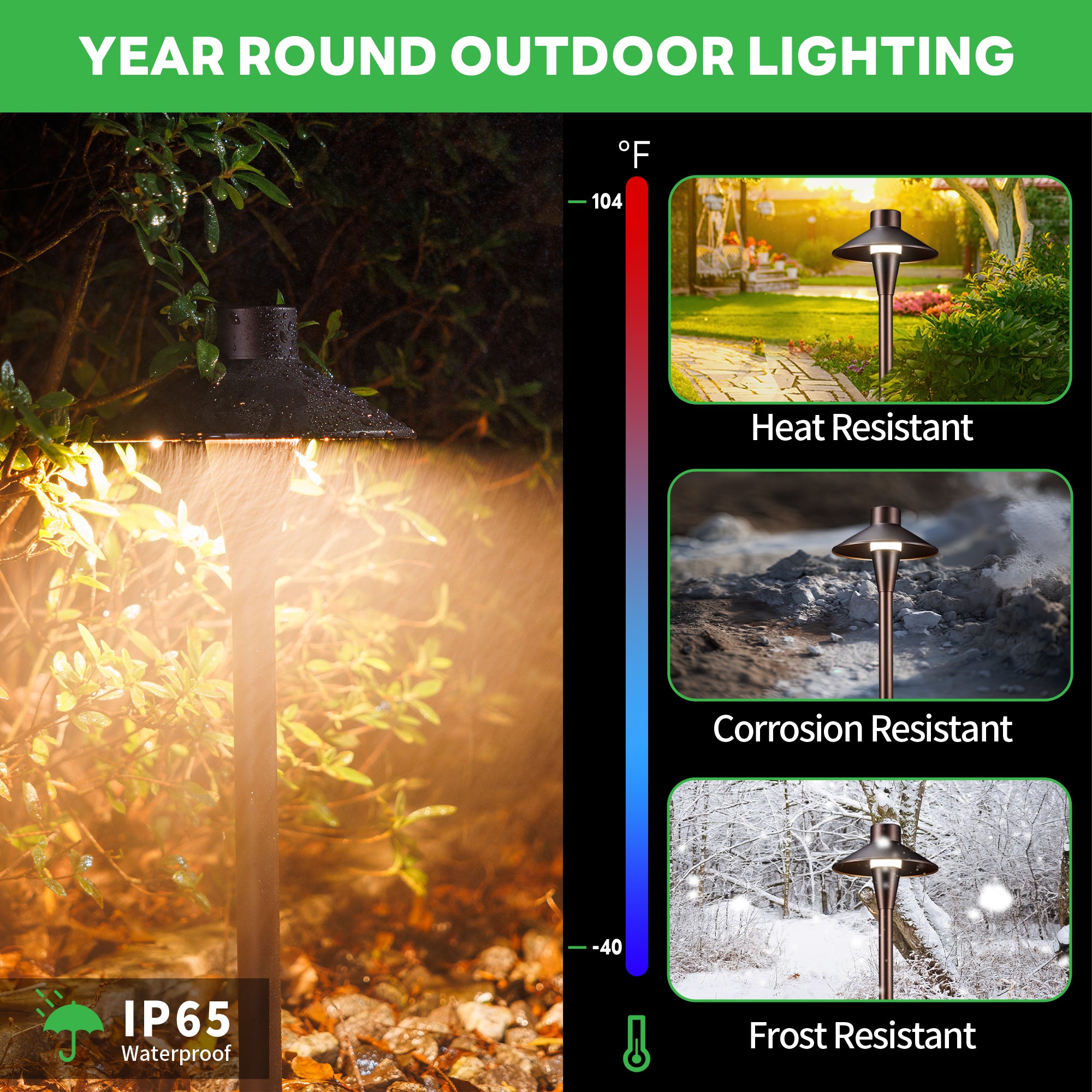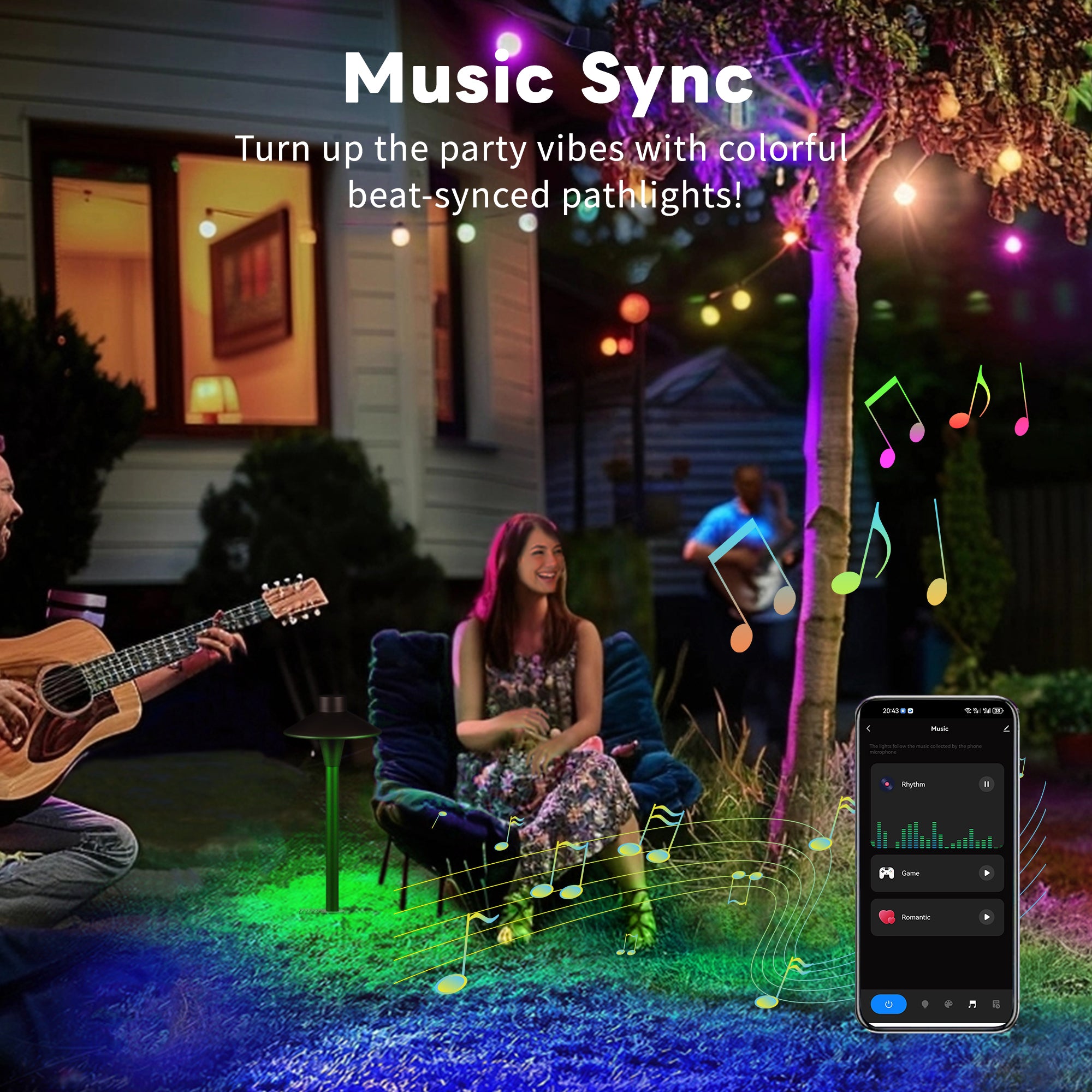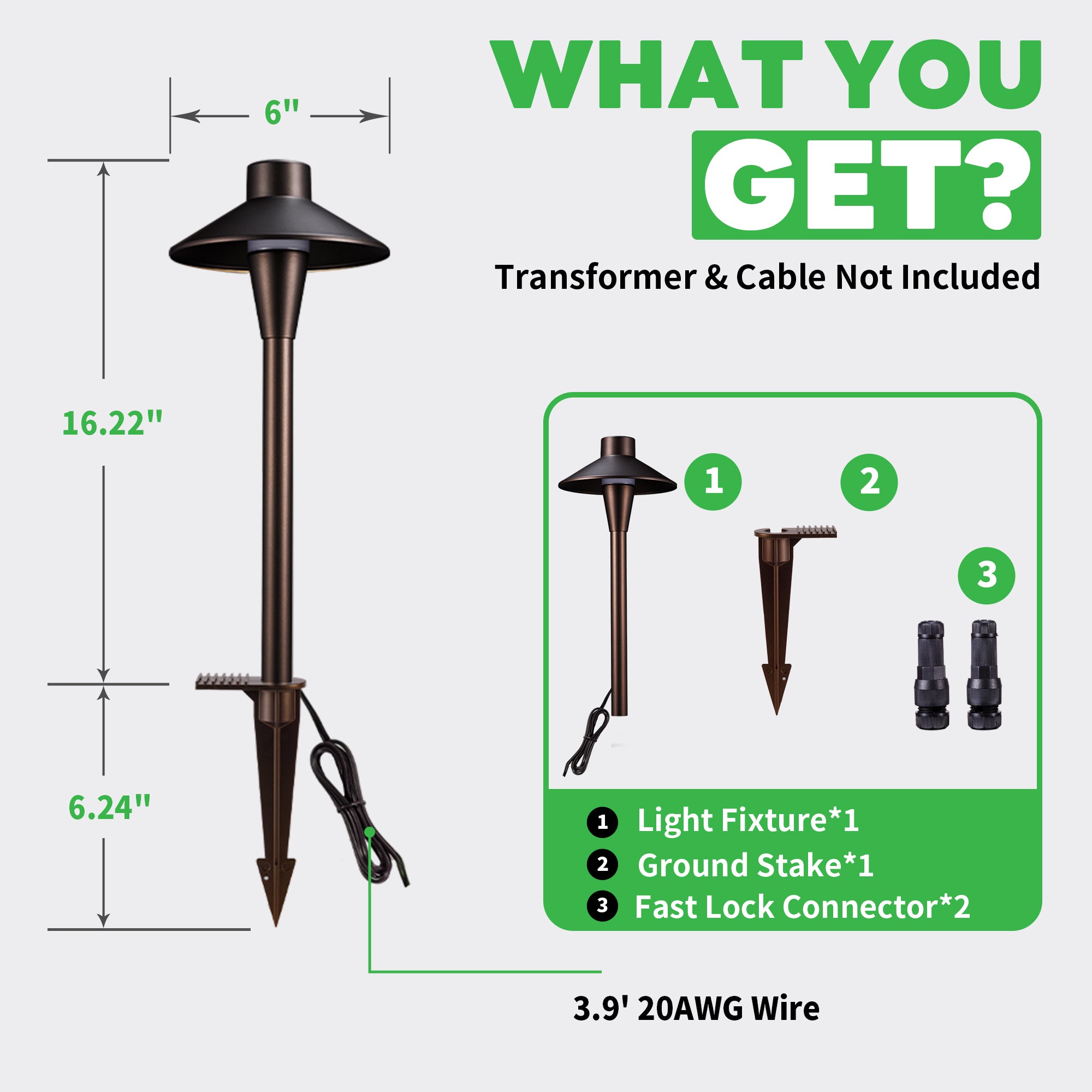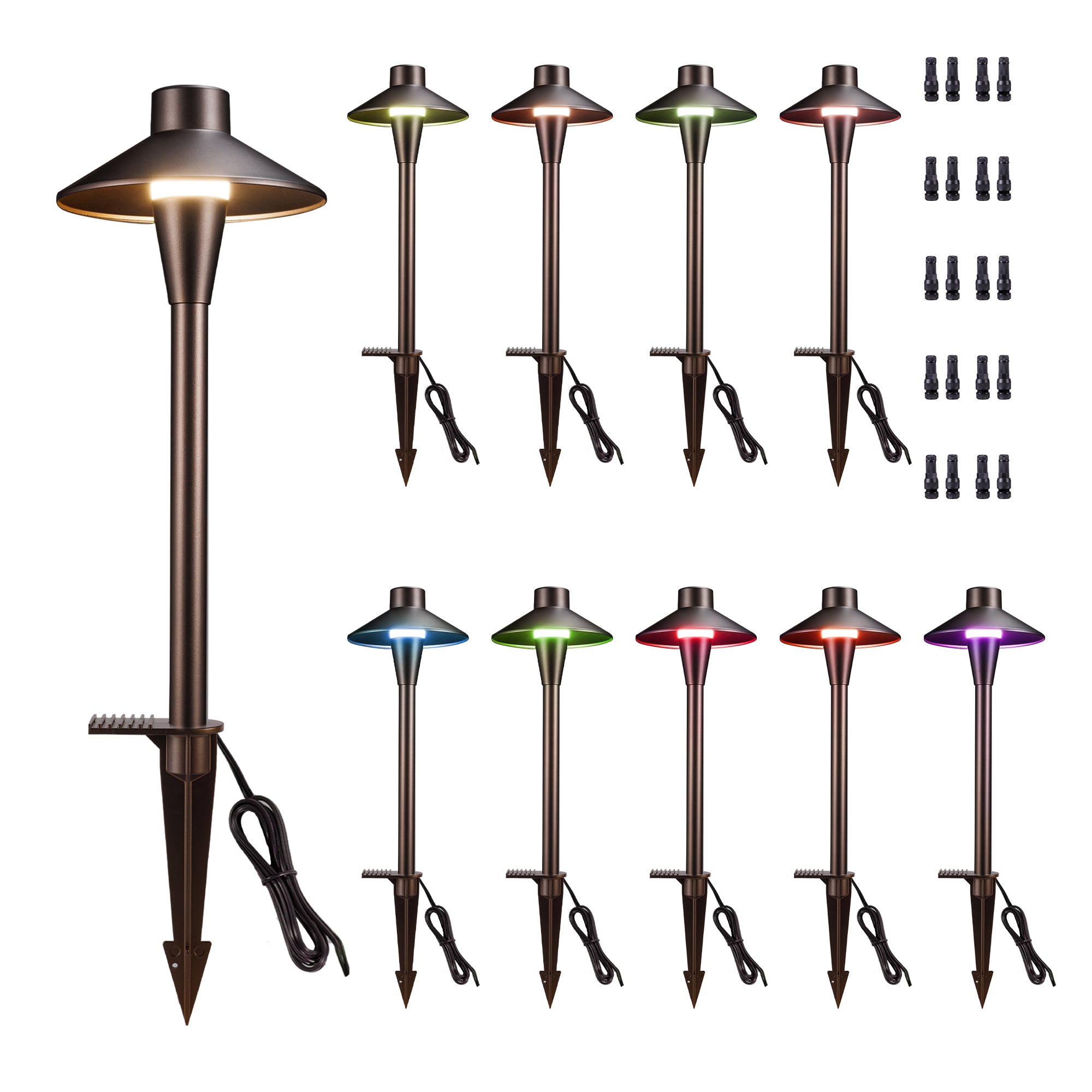FAQ of Low Voltage Path Lights
Do Varmtalys path lights work with my existing 12V system?
Yes. They are compatible with standard 12V AC/DC transformers and outdoor-rated cable/connectors.
How far apart should I space path lights?
A good starting range is 6–9.8 ft (1.8–3 m). Adjust closer for curves, stairs, or darker surfaces.
Which style should I choose—downlight, directional, or bollard?
- Downlight = soft, comfortable pools;
- Directional = targeted accents;
- Bollard = modern look with well-defined edges.
What color temperature works best for homes?
2700–3000K feels warm and welcoming. Higher CCTs emphasize crisp detail.
Can path lights mix with spot or well lights on one transformer?
Yes—as long as the total wattage stays within capacity and runs are balanced for length and wire gauge.
Where are path lights typically installed?
Path lights are versatile outdoor lighting fixtures designed to illuminate and enhance the safety, beauty, and usability of various outdoor spaces. They are commonly installed in several key areas:
Walkways and Paths: To guide residents and guests by providing visibility and safety during the night, path lights are often installed along the edges of walkways and garden paths.
Driveways: Installing path lights along the driveway edges illuminates the area, making it easier for vehicles to navigate after dark and adding a welcoming glow to the home's entrance.
Garden Areas: To highlight planting beds and landscaped areas, path lights can be strategically placed to illuminate specific plants, trees, or decorations, enhancing the garden's nighttime beauty and ambiance.
Patios and Decks: Around patios, decks, and seating areas, path lights contribute to a cozy, safe, and functional outdoor living space, allowing for extended use into the evening hours.
Steps and Level Changes: For safety reasons, path lights are essential near steps, level changes, or any areas where the elevation changes to prevent falls by increasing visibility.
By carefully choosing the locations for path lights, homeowners can not only enhance the safety and navigability of their outdoor spaces but also create a visually appealing environment that highlights the property's best features at night.
Do the path lights come with a plug?
No, the lights do not include a plug. They are 12V low voltage and need to be hardwired into a low voltage cable.
How do I know how many path lights I need?
Determining the right number of path lights involves balancing several factors:
Light Spacing: For consistent illumination, path lights are best placed about 6 to 8 feet apart. This spacing helps avoid dark spots while ensuring the path is well-lit.
Path Length: Use your path's length to guide the total number of lights. For instance, a 40-foot path might typically need 5 or 6 lights, assuming you're spacing them every 8 feet. This calculation ensures the beginning and end of your path are adequately lit.
Lighting Ambiance: Your desired ambiance plays a role in deciding the number. A softer, more subtle effect may require fewer lights, while a brightly lit path might need lights placed closer together.
The lighting coverage varies with each model of our path lights; please refer to the product images for more information.
Consider these guidelines as a flexible framework. The specific lighting coverage of each path light model and your personal preference should also influence your final decision. It’s often helpful to experiment with placements before installation to find the perfect setup for your outdoor space.
Does it include a transformer?
No, you need to purchase cables and a transformer separately. It is compatible with a 9-15V low-voltage transformer.
What size transformer should I choose?
Depends on the power of the transformer and the bulbs, while the electrical energy will inevitably lose 20% of the voltage during transmission.
For example, if the transformer is 150W and each bulb is 5W, then 24 fixtures can be installed (150 x 80% ÷ 5).
What type of light source do the path lights use?
The path lights use integrated LEDs with a lifespan of up to 50,000 hours.
Which scenes are suitable for different color temperatures?
Use 3000K for cozy atmospheres. Use 4000K for neutral lighting effects. Use 5000K for bright lighting.
What is the warranty period for the path lights?
The path lights come with a 5-year warranty. Any quality issues within this period warrant a free replacement.
Can I install the path lights myself, or do I need a professional?
Our path lights are designed for easy installation. The wires come pre-wired, and we include quick connectors, allowing you to conveniently and quickly connect the lights to the main cable.
Light the Way with Varmtalys Path Lights: Safety, Style & Durability
About Path Lights
Varmtalys aluminum path lights create comfortable, low-glare illumination for walkways, driveways, and garden beds. Built for 12V low-voltage systems, they’re safe, DIY-friendly, and tuned for human-scale visibility—guiding every step without harsh hotspots. With durable finishes, weather-ready sealing, and practical optics, our range balances everyday reliability with clean, modern curb appeal. Whether you’re defining a curved garden path, marking driveway edges, or adding a warm welcome near steps and entries, Varmtalys offers multiple styles and color temperatures to match your layout and look. Select models include multi-CCT (3–5 CCT) so you can dial in the mood on site.
Path Lights Categories
Downlight Path Lights (Umbrella / Hat Style): Soft, Ambient Pools
What they do: A shade directs light downward for an even, comfortable pool—ideal for residential paths and borders.
Features & Parameters
- Low voltage: 12–24V AC/DC (transformer required)
- Power: typically 3–5W
- CCT: 2700–3000K warm white; select models offer multi-CCT up to 5000K
- Output: approx. 150–300 lm for guidance without glare
- Optics: wide downward spread (120°–360°) with soft diffusion
- Build: die-cast aluminum housing; frosted lens
- Weather: IP65 wet-location
- Install: ground stake with foot-step design; quick connectors (model-dependent)
- Typical Applications: Curved walkways / Garden beds / Driveway edging / Front entry approaches
-
Directional Path Lights: Targeted Guidance & Accents
What they do: Adjustable heads place light exactly where you need it—edge marking, low shrubs, signage—while controlling spill.
Features & Parameters
- Low voltage: 12–24V AC/DC
- Power: 3–5W
- Beam: practical spreads 60°–120° (adjustable/fixed per model)
- CCT: 2700–5000K; selectable CCT on some SKUs
- Output: approx. 150–400 lm
- Build: aluminum body; glare guard/honeycomb options
- Weather: IP65
- Install: stake mount; aim/lock with set screw
- Typical Applications: Path edge highlights / Low shrubs / entry markers
-
Mini Bollard Path Lights: Modern, Compact, Well-Defined Edges
What they do: Sleek pillar-style lights with 360° or 180° distribution for a contemporary look and clear wayfinding.
Features & Parameters
- Low voltage: 12–24V AC/DC
- Power: 3–5W
- CCT: 3000K warm; options to 4000–5000K or multi-CCT
- Output: approx. 100–300 lm
- Distribution: 360° omni or 180° forward throw
- Build: aluminum (black/ORB finishes)
- Weather: IP65
- Height: typical 15–23 in (38–58 cm)
- Install: stake or fixed base
- Typical Applications: Modern yards / Narrow paths / Driveway lines / Fence-line guidance
Why Choose Varmtalys Path Lights?
- Durable aluminum housings with weather-ready finishes
- Low-glare optics for comfortable, human-scale visibility
- Energy-saving LEDs; multi-CCT options on select SKUs
- DIY-friendly 12V systems compatible with standard transformers
- Value-driven specs backed by responsive support
Choosing the Perfect Path Lights: A Quick Buyer’s Guide
- Goal first: Safety guidance vs. ambience vs. accents—pick style accordingly (downlight for comfort, directional for targets, bollard for definition).
- Spacing: Start at 6–9.8 ft (1.8–3 m); tighten on curves or darker surfaces for continuity.
- CCT: 2700–3000K for cozy residential feel; higher CCT for a crisper, modern look.
- Power & wiring: Sum total watts; size the 12V transformer with ~20–30% headroom. Use 12/14 AWG for longer runs to reduce voltage drop.
- Glare & placement: Keep beams below eye level, pull fixtures back from the path edge, and aim slightly off-axis near seating or doors.


